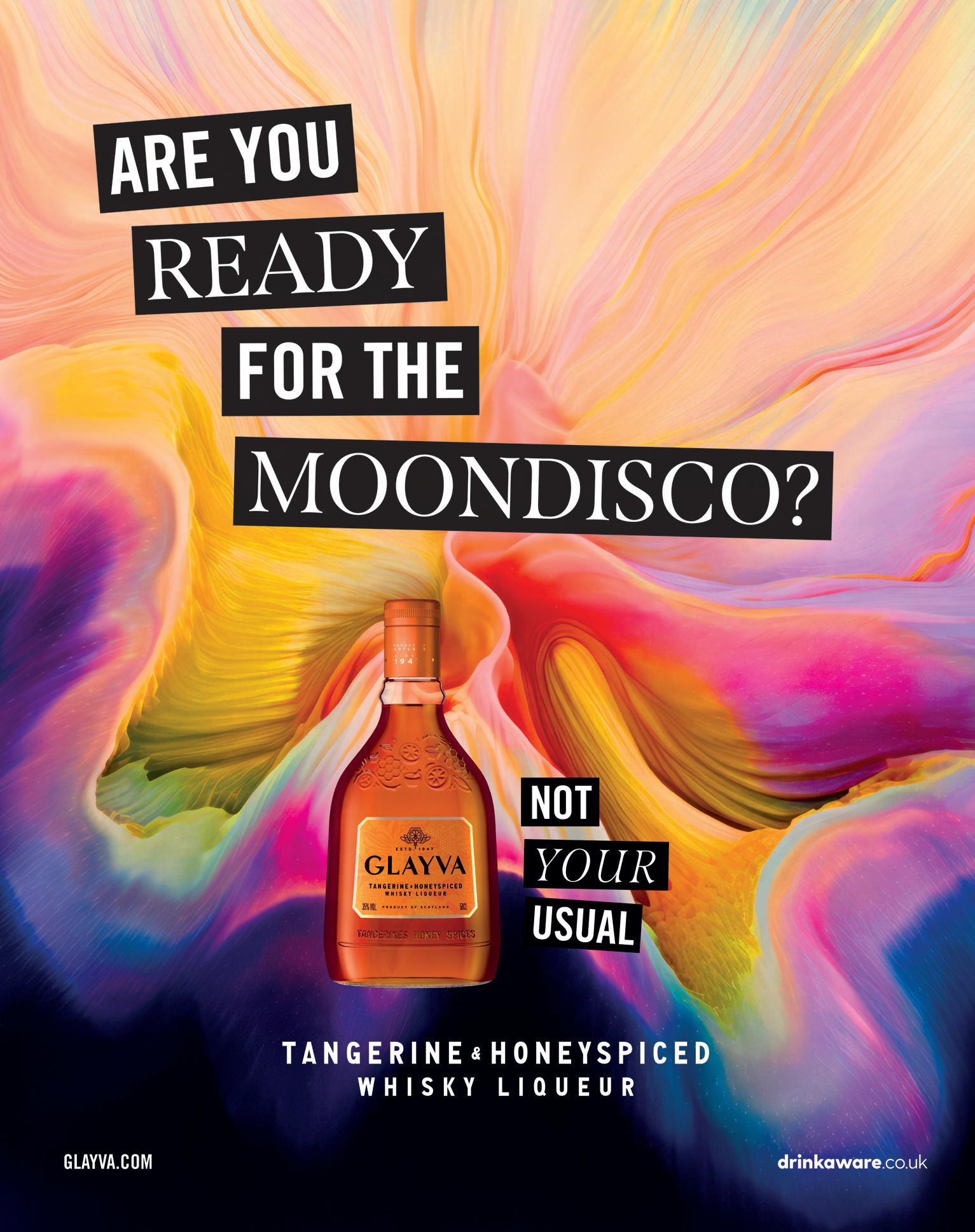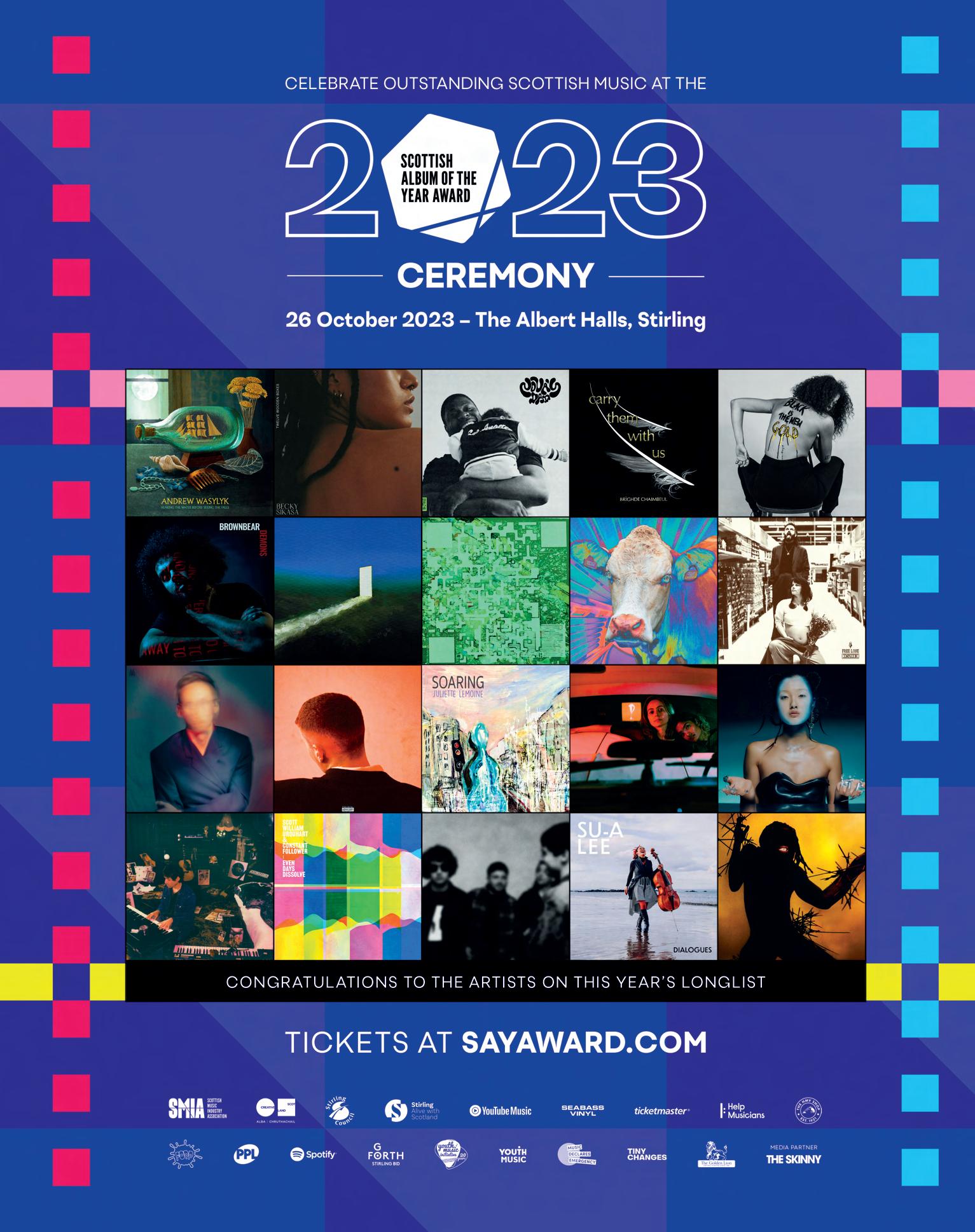Future Tense
Dreaming of a brighter future with Scottish Mental Health Arts Festival's Manifesto, transformative justice, the promise of independence & more




Dreaming of a brighter future with Scottish Mental Health Arts Festival's Manifesto, transformative justice, the promise of independence & more



Flight of the Conchords – Robots (The Humans Are Dead)
Dua Lipa – Future Nostalgia
Talking Heads – Road to Nowhere
YACHT – I Thought the Future Would Be Cooler
Austra – Utopia
Whitney Houston – Greatest Love of All
MGMT – The Youth

Motion City Soundtrack – The Future Freaks Me Out
Klaxons – Gravity's Rainbow
Childish Gambino – 3005
The Weeknd – Phantom Regret by Jim
Post Coal Prom Queen – From Glasgow to Mars
The Pussycat Dolls – When I Grow Up
Injury Reserve – SS San Francisco (feat. Zelooperz)
Busted – Year 3000
Pulp – Disco 2000
Issue 213, October 2023 © Radge Media Ltd.
Get in touch:

E: hello@theskinny.co.uk

The Skinny is Scotland's largest independent entertainment & listings magazine, and offers a wide range of advertising packages and affordable ways to promote your business. Get in touch to find out more.
E: sales@theskinny.co.uk
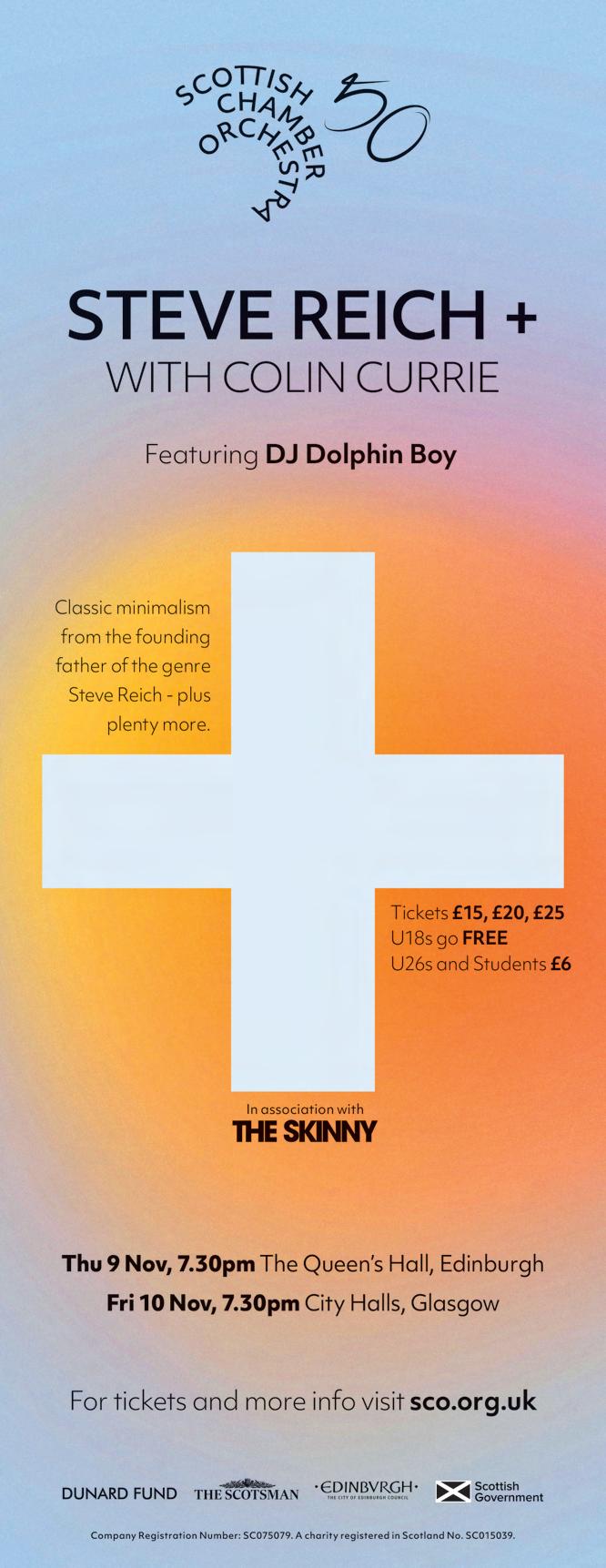
All rights reserved. No part of this publication may be reproduced in whole or in part without the explicit permission of the publisher. The views and opinions expressed within this publication do not necessarily represent the views or opinions of the printer or the publisher.
Printed by DC Thomson & Co. Ltd, Dundee ABC verified Jan – Dec 2019: 28,197


Meet the team

We asked – What is one change you would make that would make the world a better place?
Rosamund West
"Plastic grass and windowbox
flowers feel a lot like humanity gleefully hastening its own destruction so ban them maybe."
Peter Simpson Deputy Editor, Food & Drink Editor
Behrooz
Editor, Books Editor
Dunn
would teach the history of unions and everyone I fancy would give me a little kiss on the forehead."
"Tax all wealth above a certain level at 100%. See if you can guess the number. Have fun with it!" Eilidh Akilade Intersections Editor
"Get someone who's good with numbers – say, Carol Vorderman – to collect all the money in the world and divvy it up evenly between everyone. I reckon 99% of people will be happy." Polly Glynn Comedy Editor

"Inspired by my chat with MALKA and Carla J. Easton (p56 ), I'd start by doing something about those pesky, vibe-ruining gatekeepers of the music industry."





"Put more resources into carbon capture and other climate change responses." Harvey Dimond Art Editor
"Abolish the police everywhere."
"People get indicators for walking on the street. Also planting more wildflowers – nice to look at and nice for the lil bees." Ellie Robertson Digital Editorial Assistant
"Everyone just chills out by like, 20%. Maybe 30%."
"I would like to say the word radical a lot less please –make everything radical and then I can stop saying it and think of nice things."
"Pedestrian fast lanes."
Tom McCarthy Creative Projects Manager







"I say we take off and nuke the entire site from orbit. It's the only way to be sure."
Laurie Presswood General Manager "Eliminate bananas."
Rho Chung Theatre Editor "Abolish landlords." Sandy Park Commercial Director "Cheaper cheese." George Sully Sales and Brand Strategist
Dalila D'Amico Art Director, Production Manager "Abolish plastic basins in the sink. The sink is already a basin."

Phoebe Willison Designer
"Everyone would be Dolly Parton. And Green Socialism for all."
It’s difficult to summarise the theme this month – it’s grown out of conversations over many months going back to our annual planning day in early November 2022. At that point, the October issue had ‘IndyRef2?’ written over it, and it seemed possible we were set for a re-run of 2014’s frequently deranged energy of hope, caution, blatant lies and world building.
The Skinny is also 18 this month, which felt connected. So, to mark our entry into the currently disappointing world of enfranchisement, we decided to go ahead with our plan to explore some of the changes we’d like to see in our society-slash-nation-slash-the world.
Starting optimistically, before moving onto the massive arts-funding-cuts-shaped elephant in the room, we have words with Scottish Mental Health Arts Festival, pondering a mental health revolution as they launch their Manifesto programme. One writer unpacks transformative justice, and what that could mean when applied to Scotland, while another shares reflections on coming of age with the independence movement, and how aspirations for a nation have matured with time.
We meet Scottish Contemporary Arts Network (SCAN) to learn more about their work in advocacy for the sector, including their Artists Make a Better World campaign which ran over the summer. The campaign was aimed at communicating the very clear value of culture to the sorts of MSPs who might decide arts funding is a really good area to cut, even though said value is, for example, a cornerstone of their manifesto. The piece had to be rewritten at the eleventh hour, in light of recent events
There’s a provocation on how Edinburgh could better serve its year-round creative communities alongside the transient audiences of its festival city moniker. Our new Clubs editor, Cammy, has interviewed an array of grassroots promoters to find out how people are building communities and adapting their models to respond to changes in audience behaviour and expectations. Books meets Iranian-born, American-raised and Scotland-based author Marjorie Lotfi, whose new poetry collection explores ideas of place, home, migration.
As Glasgow’s Goethe-Institut turns 50, we look forward to their all-day lineup of celebratory events. The Scottish International Storytelling Festival returns with another vibrant programme – we meet Iranian storyteller Zahra Afsah, whose collaboration with Syrian storyteller Khloud Ereksousi explores the idea of female revolution. Theatre meets Racheal Ofori to discuss her new play FLIP!, and we look at Scottish Chamber
Orchestra’s Steve Reich + performances which aim to transcend perceived barriers between classical and popular music.
In our middle pages, we look forward to Glasgow Print Fair, with a pull-out double-sided poster featuring a Max Machen print alongside a rundown of some of the artists displaying work in the free one day event. We take a tour through Sekai Machache’s immersive work in the Isle of Bute’s Mount Stuart, and look forward to The Crafted Selves, an exhibition launching in St Andrews this month featuring exciting contemporary artists from Alberta Whittle to our very own Harvey Dimond.
Music talks to Irish songwriter Ciara Mary-Alice Thompson, aka CMAT, about channelling her inner Miranda, and Elizabeth Bernholz, aka Gazelle Twin, to discuss childhood trauma and her profound fear of ghosts. Carla J. Easton and Tamara Schlesinger, aka MALKA, are each releasing self-produced albums, so Music editor Tallah sat in on a conversation between the two about do-it-ourselves culture and challenging the gatekeepers.
Film meets Matt Johnson, director of the forthcoming BlackBerry, to find out what attracted him to this story of the rise and fall of some of tech’s losers. We talk to Paul Laverty about The Old Oak, his final collaboration with Ken Loach, and look forward to programmes from Discovery Film Festival and Edinburgh Spanish Film Festival.
It is difficult to think about all this when there’s a big axe hanging over everything. As we go to print, SNP Culture Secretary Angus Robertson has performed a U-turn on a U-turn to announce the re-instatement of the devastating 10% cut to arts funding in Scotland (which was already being delivered at standstill levels, so a significant decrease with rising inflation). The Scottish Government investment in arts funding now equates to less than 0.1% of its overall budget, according to Creative Scotland chief executive Ian Munro. Which is certainly surprising for a party that wrote “Culture is central to who we are as a nation” in their manifesto just two years ago. They went on: “In government the SNP has always valued culture and creativity, but the pandemic has demonstrated more than ever how vital it is to our wellbeing, mental health and sense of belonging as well as to our economy and society.” LOL.
Campaign for the Arts have a petition you can sign to register your opposition to the cuts. Write to your MSP, write to Angus Robertson. Arts workers are exhausted and already underpaid, the sector is overstretched and precarious and things can vanish more easily than any of us realise.
Cover Artist
Joanna Blémont is an illustrator and painter based in Edinburgh. She explores uncanny environments based on memories, dreams and collected photographs. Natural forms and built environments ambiguously intertwine, immersing the viewer in the language of dreams.

IG: @joannablemont
w: joannablemont.com
e: joblemont@gmail.com
This month’s columnist reflects on Astra King’s debut EP, nostalgia, and first loves in the digital age

Words: Ian Macartney
Over lockdown I fell in love not with Astra King, but the idea she was mid-creating. Most of her music videos and livestream appearances take place in bedrooms – I think of her mute-gi ling at the iridescent flickering rainbow of a CD-ROM, for example, or singing a euphoric rendition of All the Small Things while tangled in Christmas lights under a duvet. It’s the idea of ‘the fangirl’ becoming the artist.
Basically, she introduced herself in the setting I (and so many others) usually reside in, these days, turned back on itself: our bedrooms. Plus a laptop. While we are used to looking out at refractions of the world from within those spaces, to see the way King presents our interiors, online, comes like a startling mirror. Videos within videos, the Logic Pro X settings, the keyboard’s menu, ‘bedroom producer’ set to its contemporary extreme – instead of a wry look at yesteryear’s pop, King imagines right-now’s pop landscape as if it was yesteryear’s.
When I feel caught up in the overwhelm of my thoughts, TikTokified in their pace, Astra King reminds me that, actually, it’s complicated – all this nostalgia and infatuation. From the Utopian Scholastic-inspired cover art to Polachek-style breakdowns and soaring harmonies, King evokes a parasocial yearning I can’t quite put a finger on. And I don’t like to try too hard to define it: it slips away when overthought.
Even in a music culture this saturated, I don’t know music like hers – which I find a relief. Through her songs I can dance-jump to the music of an American, oceans apart – even three years since finding her music, it has the uncertain rush of a first love. Which, in its playful need to connect, the push-pull between sincerity and distance, is the kind of love the internet of this decade conjures best.
The Albert Halls, Stirling, 26 Oct, 7pm
It’s been a banger of a year for Scottish music (Young Fathers! Free Love! Cloth! Joesef! Bemz!) and what better way to celebrate than by giving someone a shiny prize? It’s tough to pick a favourite but that’s what the Scottish Album of the Year Award is here to do, returning to bonnie Stirling this month to crown this year’s winner.
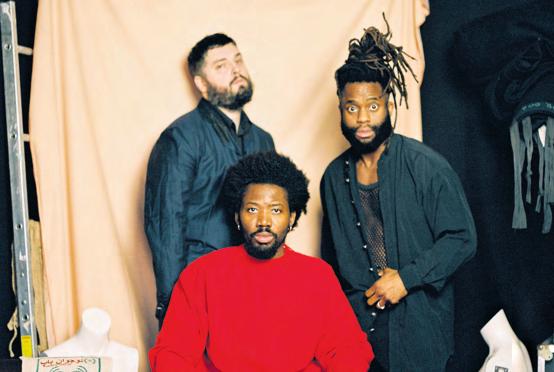
Various venues, Glasgow, 13-28 Oct
Encompassing everything from installation and music to dance and physical theatre, Take Me Somewhere’s mission is to push the boundaries of performance, platforming innovative and radical forms of expression. Highlights from the programme include experimental solo opera Skunk without k is Sun, mythic, ecological solo piece ANAHIT and South African musical artist Desire Marea.
Summer is officially done but there’s still a surprisingly busy month ahead, with local and international festivals, award ceremonies and experimental performance exhibitions across the country.
 Compiled by Anahit Behrooz
Compiled by Anahit Behrooz

For us girls of colour making half notes into song when the haar is all Royal Lyceum Theatre, Edinburgh, 26 Oct, 7:30pm
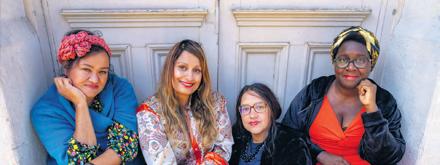
A one-off work-in-progress showcase of a new theatre piece co-created by Edinburgh Makar Hannah Lavery and writers from Stellar Quines, For us girls of colour making half notes into song when the haar is all is a series of poetic responses by female writers of colour to Black feminist writer Ntozake Shange’s iconic choreopoem for colored girls who have considered suicide / when the rainbow is enuf, exploring themes of sisterhood, love and loss.
CineAstra
Various venues, Glasgow, 27 Oct-5 Nov
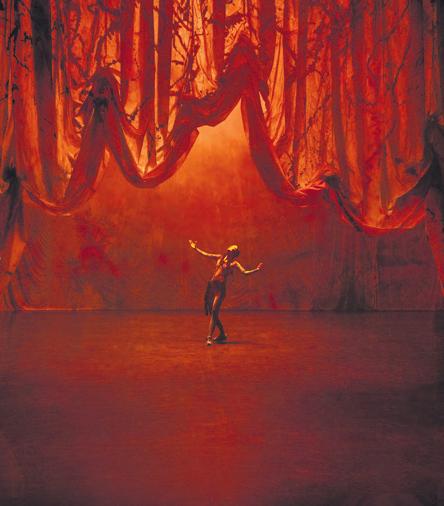
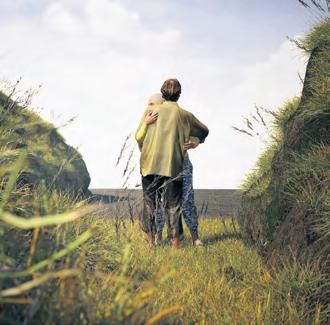

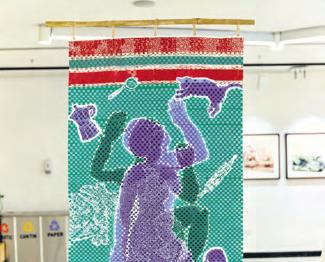
A brand new collaborative film festival bringing together curators, artists, and filmmakers across Scotland, CineAstra brings together five early-career and four mid-career curators, as well as contributions from art organisations such as Glasgow Women’s Library, Spit It Out and the Sudanese Cultural Forum. Highlights include a short film programme of Arab cinema, and an exploration of queer futurity curated by Milo Clenshaw.
Sneaky Pete’s 15th Birthday: Ahadadream & special guests
Fruitmarket, Edinburgh, 14 Oct, 7pm
The sweatbox turns 15 this year! Happy birthday! Help them celebrate at Fruitmarket’s gorgeous Warehouse space this month alongside very special DJ guest Ahadadream, whose percussion-heavy tracks draw inspiration from sources as diverse as UK dance music and beats from Pakistan and the African Diaspora. There’s also support from Sneaky’s favourites such as Athens of the North, Daksh Danca and The Mirror Dance.
50 Years of the GoetheInstitut Glasgow
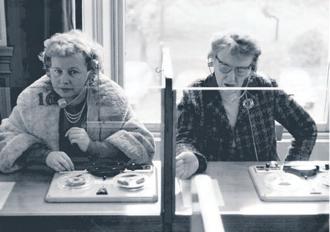
Goethe-Institut, Glasgow, 28 Oct
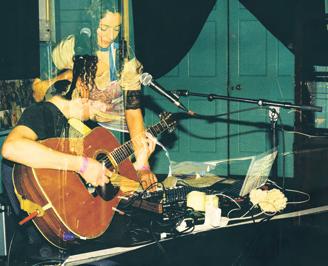
Rhona Mühlebach: Ditch Me CCA: Centre for Contemporary Art, Glasgow, until 2 Dec Drawing on the history of the Antonine Wall, a Roman border space that stretched from the Clyde to the Forth, moving image artist Rhona Mühlebach’s new work imagines a fictional account of the wall, transposing new characters – medieval soldiers, a latrine cleaner – into the historic landscape. By turns playful and profound, Ditch Me interrogates how narratives are created and concretised, and the power of subversive storytelling.
From
Edinburgh Printmakers, Edinburgh, until 3 Dec
Various venues, Glasgow, 14 Oct, 4pm
Nell Mescal

The Mash House, Edinburgh, 12 Oct, 7pm
There’s a real coming-of-age vibe to the autumn months (is it ever possible to escape that Gilmore Girls back-to-school feeling?), which makes this a perfect time for Nell Mescal’s first ever tour. The Irish indie-pop darling’s songs, from Homesick to Missing You, capture that particular sense of precarity and possibility that characterise the late teenage and early 20s period – catch her at The Mash House this month.
Florence Peake: FACTUAL ACTUAL
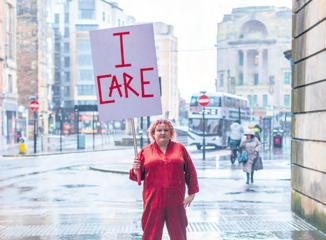
Fruitmarket, Edinburgh, 21-29 Oct

Taking place in Fruitmarket’s Warehouse space, British artist Florence Peake’s FACTUAL ACTUAL melds visual arts with live performance, crafting an exhibition that is both singular and durational. Over four performances, five dancers drag and fold vibrantly painted canvases between their bodies, interrogating the relationship between dance and painting in Western art history by creating shifting sculptural pieces that then remain exhibited in the gallery space.
Sweetdram, Edinburgh, 6-7 Oct
Held by GRDN, a collective of artists, friends and DJs curating small, intimate dance parties in unique urban locations, Subterranean Sound is a two-day celebration of the best of local DJs and producers in Edinburgh. Find the likes of EHFM head honcho St Sunday, Arab dance music duo DJ Shahrazadi and techno darlings Telfort and Moray Leisure Centre at the industrial chic Sweetdram.
Various venues, across Scotland, 4-22 Oct
Various venues, Glasgow, 7 Oct
Music festivals are quieting down somewhat after the summer rush, but they’re not all gone yet. Celebrate Scotland’s local music scene with this beautifully curated – and crucially indoors – music festival taking place across Glasgow’s indie venues, including the Barrowlands and St Luke’s, with the likes of Circa Waves, Swim School and Bemz playing.
AMPLIFI
The Queen’s Hall, Edinburgh, 18 Oct, 8pm
Various venues, Edinburgh, 13-29 Oct

Plinth
Dundee Rep, Dundee, 24-25
Oct, 7:30pm

Acclaimed visual theatre artist Al Seed returns with their first live show in six years, a striking exploration of the role of statues in processes of politicisation, memorialisation, and collective identity building. Reimagining the myth of Theseus and the Minotaur, Plinth takes on the role of a wordless Greek tragedy, interrogating the ways in which we create and remember heroes past and present.
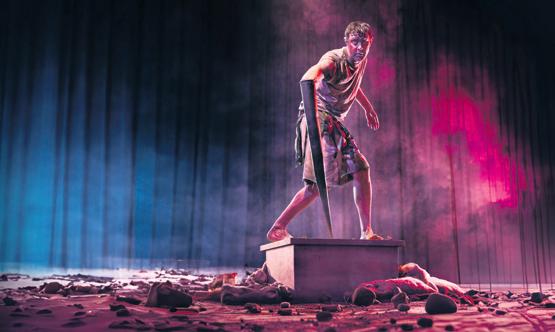
Loraine James
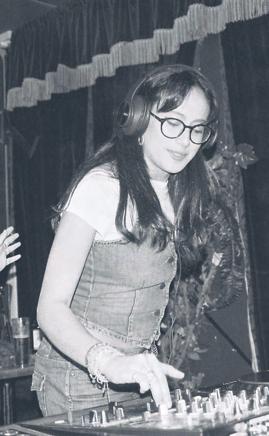
The Berkeley Suite, Glasgow, 14 Oct, 7pm
For a bit more of a lowkey vibe at The Berkeley Suite, head over at an incredibly civilised time (7pm!) for a set by London-based producer Loraine James, whose IDM-infused sets marry improvisational experimentation with jazz-rooted influences. Expect complex, interlayered mixes and compositions with gentle, hypnotic dance-y vibes, perfect for kickstarting the mid-month Saturday evening.
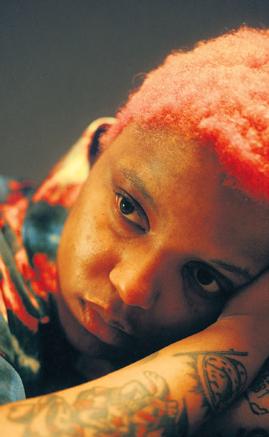
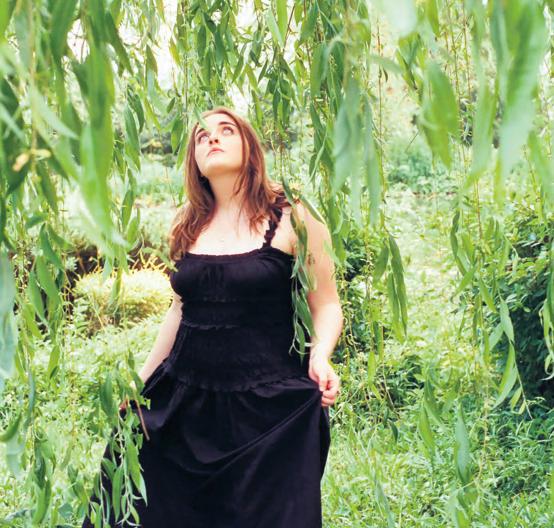
Glasgow Film Theatre, Glasgow, 4-15 Oct

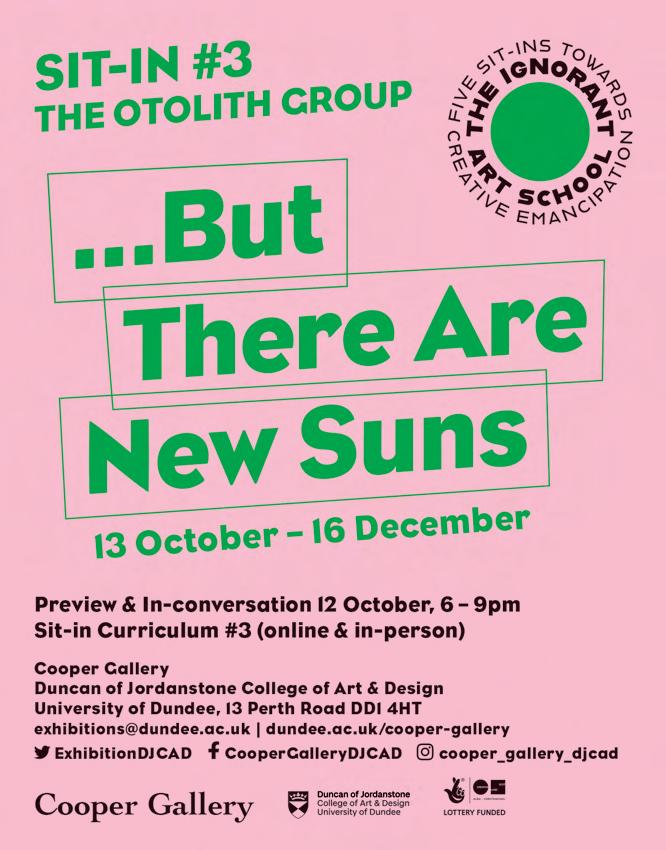

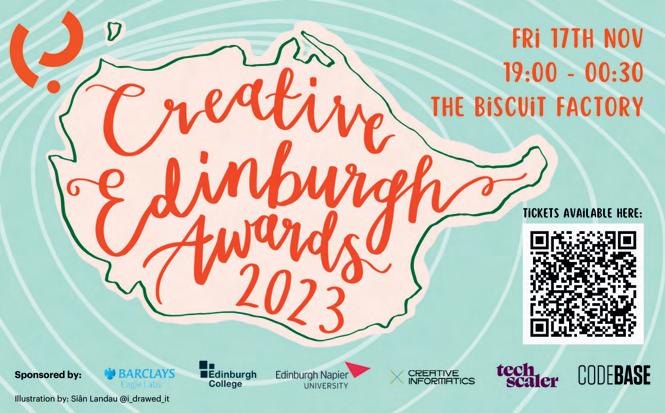
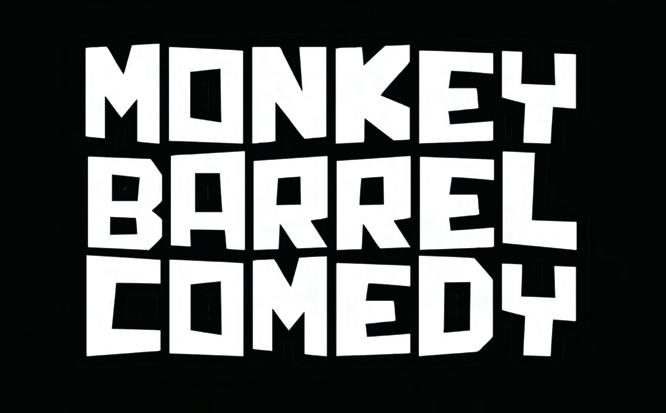

Kicking off October is the opening night of the Scottish Mental Health Arts Festival (4-22 Oct). Featuring a trio of Hen Hoose artists – R.AGGS, Sarah Hayes and SHEARS – we can’t think of anywhere better to be on the 4th. On the 7th, Tenement Trail returns to Glasgow’s Barrowlands and surrounding venues, with Bemz, Lizzie Reid, Swim School, Walt Disco and more. As the month rolls on, Glasgow welcomes Take Me Somewhere (13-20 Oct), Desire Marea playing the opening night at Tramway.
On the 14th, Pop Mutations All-Dayer returns to Renfield Lane with sets from Apostille, Alliyah Enyo, Eyve and chizu nnamdi, amongst others. In Edinburgh, that same weekend Summerhall hosts Lau-Land (14-15 Oct) with shows from Simone Seales, Martin Green, Kris Drever and more. The following weekend, back in Glasgow, Sirens live electronic all-dayer returns (21 Oct) to Broadcast and St Andrews West with live sets from Yunè Pinku, Iglooghost, Babii, KLEO and more, while the 28th brings a Halloween all-dayer to Platform at Easterhouse courtesy of Lost Map Records and PRAH Recordings October also sees a whole host of local artists touring and celebrating new music. Bee Asha launches Shy Guy at Lost In Leith (6 Oct), Neon Waltz bring Honey Now to The Mash House and Òran Mór (11 & 12 Oct), and cortnë launches Florescence at The Glad Cafe (13 Oct). Peter Johnstone launches his latest single Sad Cowgirl Playlist at Bloc (18 Oct), and Broken Records celebrate The Dreamless Sleep of The 1990s at Voodoo Rooms (19 Oct) with shows in Dundee, Aberdeen and Stirling to follow. corto.alto releases his debut Bad With Names with a huge show at QMU (21 Oct), and Starsky-Rae launches Why Am I So Green? at The Hug & Pint (27 Oct).
Also in Glasgow, at SWG3 catch Lauren Mayberry’s debut Scottish solo date (5 Oct), The Japanese House (12 Oct) and Overmono (13 Oct), while The Hug & Pint bring the likes of Shamir (12 Oct), Hand Habits (19 Oct), Mandy, Indiana (27 Oct) and Water From Your Eyes (31 Oct) to the Great Western Road basement. In Edinburgh, The Queen’s Hall welcomes Mitski (7 Oct) and Irish folk singer-songwriter Lisa O’Neill (17 Oct) to the capital, while Skinny Pelembe plays Sneaky Pete’s (14 Oct), Other Other Music bring sulka to Leith Depot (20 Oct), The Pharcyde play The Liquid Room (26 Oct) and Young Fathers play Usher Hall (31 Oct). [Tallah Brash]
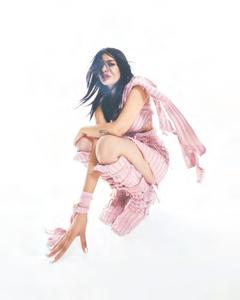
The scary season is upon us, so hardcore scary movie nuts are in for a treat with two marathons. First, Edinburgh’s Cameo presents All Night Horror Madness (7 Oct) featuring demented creature feature Brain Damage, twisted Hellraiser and urban horror classic Candyman. If an all-nighter isn’t your bag, Glasgow Film Theatre’s All Day Horror Madness (29 Oct) has a wild lineup that includes Night of the Creeps, baroque satire Society and Steve De Jarnett’s Miracle Mile.
Dundead makes an appearance at Dundee Contemporary Arts this month with Battle Royale (21 Oct), Peeping Tom (29 Oct) and Greek comedy/musical/Bmovie Minore (27 Oct). The Skinny are getting in on the horror act too with this month’s CineSkinny Film Club. We’ve delved into the archive and unearthed an obscure gem from 1991: Rolfe Kanefsky’s mile-a-minute meta horror-comedy There’s Nothing Out There (CCA, 3 Oct; Summerhall, 4 Oct). And The Hippodrome in Bo’ness screen horror touchstone The Cabinet of Dr Caligari with a live score by Mike Nolan on 7 October – part of season Taste of Silents. Scottish folk horror masterpiece The Wickerman also gets dusted off. It’s screening at Glasgow’s Transmission (31 Oct) with Bongo Erotico, a 1959 silent film by Wishaw filmmaker Enrico Cocozza where the horror emerges from the homoerotic desires of its bisexual protagonist. This curious doublebill is part of Time, Again, a series exploring the past, present and future of queer representation on screen, curated by Milo Clenshaw, which is in turn part of CineAstra.


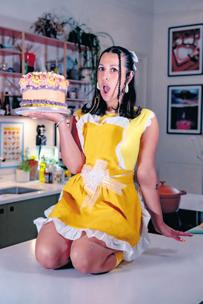
A brand new addition to Scotland’s lively film festival scene, CineAstra is a collaborative festival that aims to bring curators, arts organisations and

local businesses across Glasgow together. Presented by Aya Films, the festival has been programmed collaboratively by nine early- to mid-career curators, who each bring their own unique perspective, and will include programmes on Iraqi cuisine and heritage, sensory experimentation through food, environmental issues and much more. Runs 27 Oct-5 Nov at various venues, full programme at app.curate-it.co.uk
We’d also urge you to head along to GFT this month for the chance to see two early films from the great Taiwanese director Hou Hsiao-hsien: Cheerful Wind (5 Oct) and Dust in the Wind (12 Oct). Hou Hsiao-hsien was also pretty nifty in front of the camera – see for yourself at GFT’s screening of Edward Yang’s Taipei Story, in which he co-stars (19 Oct). [Jamie Dunn}

Though festival season draws to a close in October, experience your hot European summer in Glasgow with Miss Bashful x DBBD at The Berkeley Suite (Sun 1 Oct).
Edinburgh gets lucky midweek, as Nathan Micay returns to Sneaky Pete’s after four years, fresh off his recent album on LUCKYME (Wed 4 Oct).
Marking the highly anticipated ‘Changing Channels’ on Hessle Audio, Lezure partners with La Cheetah, as Pangaea headlines Glasgow (Fri 6 Oct). IKLECTIK stop by Stereo, bringing along their hybrid live/DJ programme – including Planet Mu’s Ziúr – from 8pm (Sat 7 Oct). Edinburgh’s favourite festival – Subterranean Sound – returns, showcasing local artists, amongst EHFM merch at Sweetdram Distillery (Fri 6-Sat 7 Oct).
At Saint Luke’s, Max Cooper stages his Live 3D/AV Show. Afterwards, check Papaya Whip with Josey Rebelle & Junglehussi at La Cheetah (Fri 13 Oct). On Saturday, go Bonkers at The Classic Grand with Glasgow’s Scott Brown and Oakzy B for Happy Hardcore classics. Alternatively, celebrate Sneaky Petes’ 15th Birthday with Ahadadream at Edinburgh’s Fruitmarket Warehouse (15 Oct). Hyperdub’s Loraine James lands for an intimate gig-time performance at Sneaky Pete’s (Sun 16 Oct).
Friday sees Sub Club present Scottish sweetheart Ewan McVicar; Shoot Your Shot welcome Introspekt at The Berkeley Suite; and Pan’s M.E.S.H play Stereo alongside Hyph11E – hailing from China for a Glasgow debut (20 Oct). SIRENS’ Saturday all-dayer boasts a loaded line-up, including Iglooghost, Jam City, and yunè pinku (live). Otherwise, Bonjour hosts Danse Macabre’s 13th Bday, whilst Neffa-T is at Sweatbox at Stereo (Sat 21 Oct).

If feeling a little spicy this Halloween, be sure to check Nightvison’s Terminal V Trilogy at Edinburgh’s Royal Highland Centre (Fri 27-Sun 29 Oct). Freakier alternatives include Bonjour’s Halloween at The Art School (Fri 27); Pure Bliss x Miss Cabbage’s Stereo takeover with Umru & Kavari, or catch Asher G at Rumshack if after something casual (Sat 28 Oct). [Cammy Gallagher]
At Edinburgh Printmakers, From Where I Stand (until 1 Dec) brings together prints and multimedia works by seven contemporary artists from India and Scotland. Exploring the intersection between arts and heritage, the exhibition has been curated by Future Flow, a new creative fellowship which connects and develops artists working in Scotland and India.
At Edinburgh Castle, Tanatsei Gambura has developed a series of soundscapes titled Nzira Yeparuware (until 30 Nov), which brings together field recordings from Harare, Zimbabwe which were recorded at locations in the city named for places in Scotland during the colonial era. The ten sound works, which also feature music by members of the Composers’ Orchestra, can be accessed through QR codes at various points around the castle.

At Fruitmarket, Florence Peake will present four painterly performances (21-22 Oct). Expanding on the relationship between painting and dance, a troupe of dancers will drag, suspend and fold canvases in an exuberant performance in the gallery’s Warehouse space.
In Dundee, Turner Prize-nominees The Otolith Group will present …But There Are New Suns (13 Oct-16 Dec), part of Cooper Gallery’s ongoing programme The Ignorant Art School. The collective’s 2022 film What The Owl Knows will make its UK premiere, screened alongside their 2018 film O Horizon
At St Andrews Museum, the first iteration of touring show Crafted Selves: The Unfinished Conversation (14 Oct-29 Feb) will open to the public. Curated by Cat Dunn, the exhibition brings together the work of 13 Scotlandbased artists who examine dual identities in their work, including Sekai Machache, Ashanti Harris and Rae-Yen Song

In Glasgow’s Tramway, you can catch the last few days of Jasleen Kaur’s sculptural installation Alter Altar (until 8 Oct) and the first solo Scottish presentation of Johannesburg-based Billie Zangewa’s intricate hand-stitched silk collages. Titled A Quiet Fire (30 Sep-28 Jan), Zangewa’s figurative silk collages challenge the historical stereotypes used to objectify Black women.

Annual performance festival Take Me Somewhere takes over 13-28 October – highlights include Mamela Nyamza, Clarinda Tse and Desire Marea
Near Dumfries, Cample Line will present The Unbearable Halfness of Being (10 Oct-17 Dec), a new, dynamic exhibition of drawings, textiles and sculpture by Jerusalem and London-based Jumana Emil Abboud, whose practice draws on Palestinian storytelling and folklore. [Harvey Dimond]
Scottish Opera’s innovative production, Opera Highlights, will continue its tour of Scotland this month. The programme includes old favourites, as well as a world premiere by Toby Hession. (until 28 Oct)

Solar Bear tour Wake Up, a triple bill of visual theatre for both D/deaf and hearing audiences, directed by Moira Anne McAuslan, Craig McCulloch and Petre Dobre. (until 14 Oct). Stellar Quines’ brand new show, Disciples, opens at Edinburgh’s Traverse Theatre. The piece is a collaboration by five D/ deaf and disabled performers, who utilise music, movement, image, and poetry to break barriers (5-7 Oct).
In association with National Theatre of Scotland, Tron Theatre will tour their acclaimed production Moorcroft across Scotland this month (6 Oct-4 Nov). The production touches the heart of Scottishness, masculinity, and mental health.
Radical and experimental festival Take Me Somewhere (13-28 Oct) offers a thrilling menu of multi-disciplinary work, from Louise Ahl’s scentrelated solo opera Skunk without K is Sun to Eve Stainton’s live welding and movement experiment Impact Driver.

Treason the Musical kicks off its highly-anticipated UK tour at Edinburgh’s Festival Theatre. The show is a brand new depiction of the infamous gunpowder plot of 1605, told through original pop and folk music. (25-28 Oct)
The world premiere of FLIP!, a new play by Racheal Ofori (30 Oct-4 Nov, Summerhall), will tour England and Scotland. This powerful satire explores friendship and social media fame. [Rho Chung]
Edinburgh International Book Festival keep the book events going with not one but two bonus October events: find Michael Palin at The Assembly Rooms on 3 Oct and Val McDermid and Kirsty Wark on 11 Oct. Glasgow small press Thi Wurd presents its second major literary event of 2023 at the Glasgow University Union, with surprise (!) performers of fiction, non-fiction, and poetry, live music, screenings, and visual arts. For more communal bookish vibes, head to Glasgow Women’s Library’s literary salon Herland (6 Oct) – it’s the first one they’ve held in years and revolves around Jackie Kay’s poem A Life in Protest.
In the bookshops, meanwhile, The Skinny’s own Rho Chung chairs queer rom-com writer Lily Lindon at Lighthouse Bookshop (6 Oct), and our book feature star Marjorie Lotfi launches her poetry collection at Portobello Bookshop on 12 Oct. For an autumnal (read: slightly spooky) vibe, head to CJ Cooke’s launch of The Haunting in the Arctic at Waterstones Argyle Street, in conversation with Sally Hinchcliffe. [Anahit Behrooz]
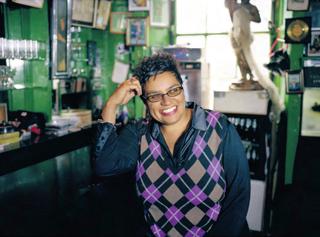
First up, boasting a lineup including Josie Long, Susie McCabe and Jay Lafferty, is a Benefit in Aid of the Women’s Support Project (4 Oct, Stand Glasgow). The charity works to end violence against women and celebrates its 40th Anniversary this year.

What’s that? A BRAND NEW comedy festival on our doorstep? Leith Comedy Festival (6-8 Oct) debuts at various venues around the Shore, rooting itself firmly in the local community and bringing brilliant local talent to the heart of the neighbourhood (performers include Jamie MacDonald, Kathleen Hughes and Soup Group).
Big names visiting Scotland this month include viral comedy star Munya Chawawa (28 Oct, 02 Academy, Edinburgh; 19 Oct, 02 Academy Glasgow), Paul Foot (7 Oct, Monkey Barrel; 8 Oct, Stand Glasgow), Pierre Novellie (11 Oct, Stand Glasgow; 12 Oct, Monkey Barrel Edinburgh) and Ria Lina (11 Oct, Monkey Barrel Edinburgh; 12 Oct, Stand, Glasgow). Ed Gamble and James Acaster are also on the scene with Off Menu Live (21-22 Oct, SEC Armadillo, Glasgow).
In celebration of Black History Month, Glasgow Glee and Monkey Barrel both host COBO: Comedy Shutdown (22 Oct). The lineup features Gbemi Oladipo, rising star Kyrah Gray, Loyiso Gola and Canada’s Trixx Fever Dream Comedy Society present Ghost Train – a walkthrough comedy-horror experience headlined by Marjolein Robertson (25 Oct, The Space Glasgow). The day after, 26 Oct, is All Mouth: Queer Comedy – a showcase of the best in LGBTQ+ local talent (Rum Shack, Glasgow). [Polly Glynn]

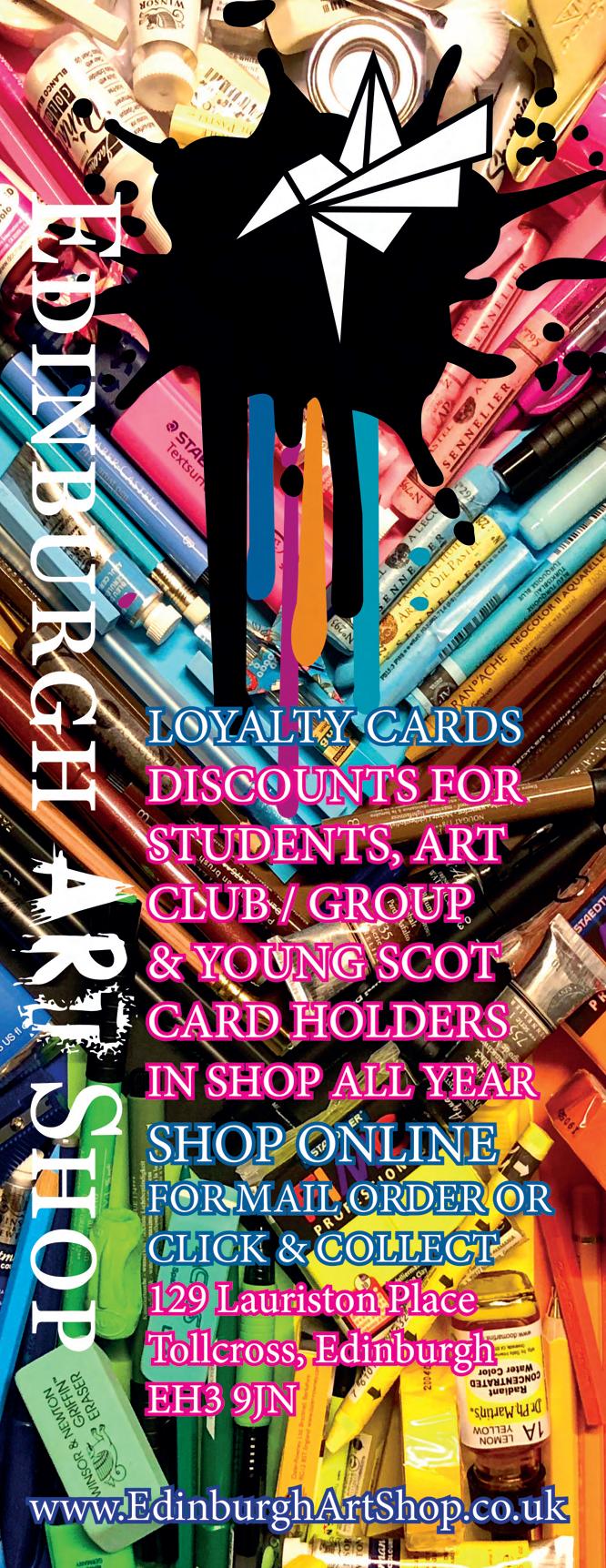

20 We meet the artists and academics behind Scottish Mental Health Arts Festival’s new Manifesto programme.
23 Exploring transformative justice and its potential in shaping Scotland’s future.
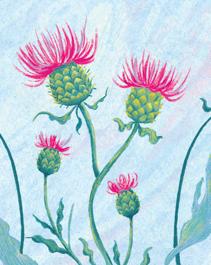
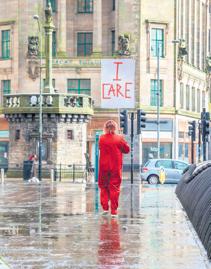
24 First person: Sharing adolescence with the Scottish independence movement.

29 Marjorie Lotfi on her debut poetry collection The Wrong Person to Ask.
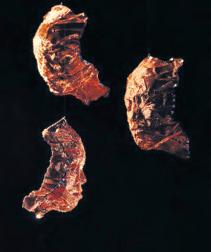

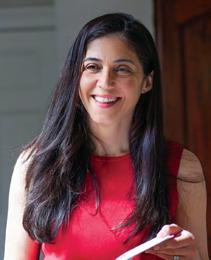
33 Racheal Ofori on her new play FLIP!, female friendship and the AI monster.
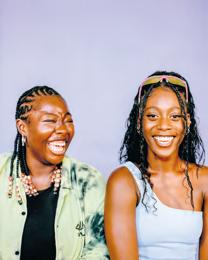
34 Creative models in clubbing with Bonjour, Boosterhooch, EXIT and GRDN.
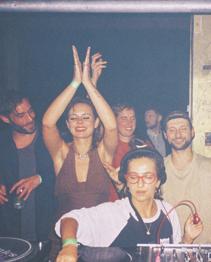
45 Irish songwriter CMAT on new album Crazymad, For Me.
46 Sekai Machache guides us through her immersive installation at Mount Stuart.
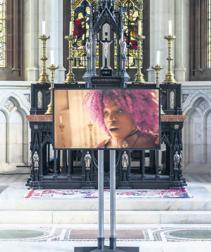
48 Curator Cat Dunn on new touring exhibition The Crafted Selves, opening in St Andrews this month.

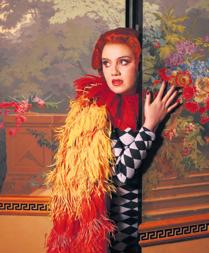
49 We meet Leith Comedy Festival’s director Rosalind Romer as they launch their first full programme.

50 BlackBerry writer, director and star Matt Johnson on what drew him to the tech bro losers’ story.
56 Carla J. Easton and Tamara Schlesinger, aka MALKA discuss the state of the music industry and getting around the gatekeepers.
Our Music Now playlist (500 followers can’t be wrong); news from The SAY Award as and when it happens; two podcasts, The Cineskinny and Not Your Usual; and a bunch more book, film and album reviews
Christine and the Queens @ Usher Hall, Edinburgh, 8 September by Mert Kece

Across 9. Tell (a story) (7)
10. Hallucination (7)
11. Impossible fantasy (4,5)
12. Help – advantage (3-2)
13. Sign of the Zodiac (7)
14. Betrayer (7)
15. Extremely important – trashing theatre (anag) (5-10)
19. Gambling houses (7)
22. Like-minded – nerd kid (anag) (7)
25. Purgatory (5)
26. Mawkish – saccharine (9)
27. Circus apparatus (7)
28. Dance music subgenre (7)
Down
1. Shoots from afar (6)
2. Secret exit (8)
3. Committed – debt-free (4,2)
4. Big thing – the mob eh? (anag) (8)
5. Punctual – reminder (6)
6. Assess (8)
7. Smart (6)
8. Overtake (8)
15. Mount – intensify (8)
16. Gave horn (anag) – (8)
17. Consider – death, eek! (anag) (4,4)
18. Vex (8)
20. Monkey (6)
21. Structure – procedure (6)
23. Tidy (6)
24. Main occupation (don't give it up?) (3,3)
Do you have any advice for early 20s friendship malaise? As my group of long-time pals have reached adulthood, our interests have increasingly diverged and I fear we have nothing really in common anymore. It’s an awkward reality that I’m sure they feel too but it’s still this big elephant in the room :(

I think there is a strange kind of idealisation we have when it comes to friendships at this age that we don’t, necessarily, have with other relationships. It’s the reverse of how the rest of your life will go: hit your mid-20s and your romantic relationships are expected to last forever but your friendships become this childish thing you put away. But in your late teens and early 20s, you expect your silly little high school boyfriend (non-derogatory, I’m sure he’s nice) to eventually peter out but it feels like a failure if your friendships do the same.








All of which is to say that we need to start thinking about friendships as proper relationships, that bear exactly the same hallmarks as our romantic and familial ones: their intimacy is monumental and structural, they cannot be replaced by another kind of form of relation, but they also move with the ebb and flow of your life. Transition phases are always awkward, but discomfort isn’t necessarily a sign that something has gone wrong, or that it’s not salvageable.
I suppose what I’m saying is that maybe this is just an awkward phase, and that’s OK, or maybe it is a sign that things are ending, which is also OK. I think clinging on with all your might is only going to make things harder; you need to let yourself relax against the tide and see who else and what else you move towards. You may find the tension eases when these friendships aren’t trying to be everything (the people you have history with, the people you have things in common with, the people you build your life around). Things lasting forever exactly how they once were can seem so dreamy (and what I spend an extraordinary amount of time and energy trying to enact) but I have slowly come to learn (kicking and screaming) that stasis, however comfortable, is not the one wild and precious life Tumblr keeps telling me about.

In this month’s agony aunt column, one person asks how to navigate the awkwardness of friendship transitions

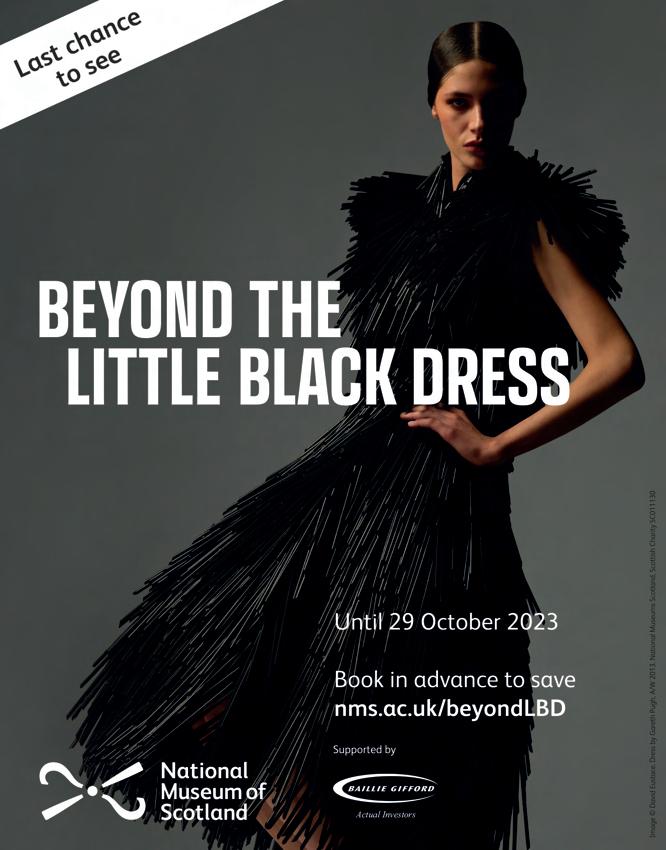
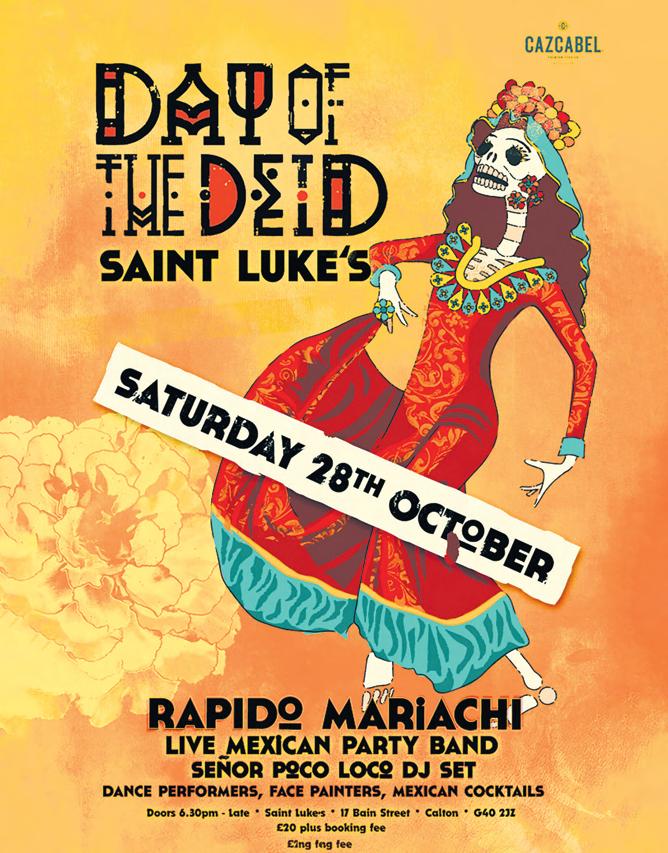
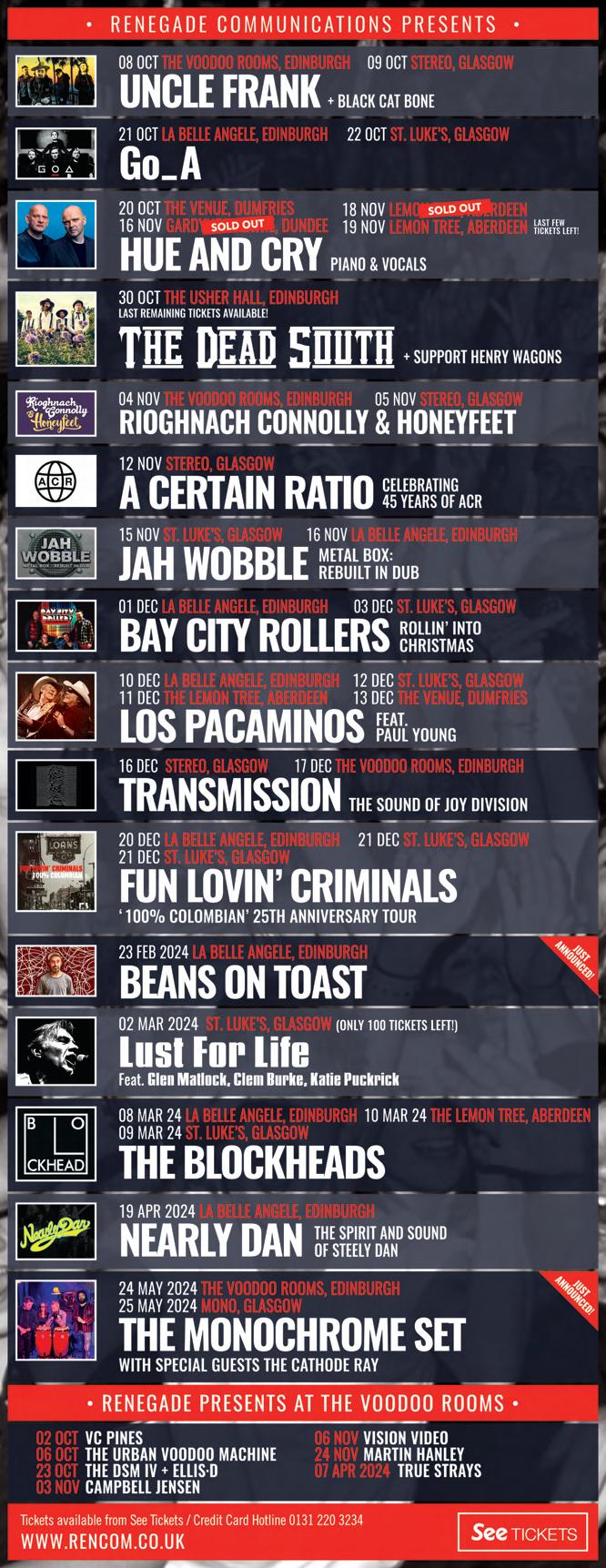
Back in the mists of time (2022) this issue was going to be themed around IndyRef2. That was cancelled, obviously, but the timing felt like an opportunity to consider what we hope the world could look like. It’s also the month The Skinny turns 18, and stepping into the realm of adulthood, the right to vote, is naturally a point to think about desires for that future. This month the team have been considering just that.

We talk to the Scottish Mental Health Arts Festival about their Manifesto and the possibilities of a mental health revolution. One writer unpacks transformative justice and how it could be applied to Scotland’s judicial system, while another
meditates on the experience of maturing alongside the independence movement, coming of age for IndyRef1 and now, as an adult, solidifying dreams of an open, just society.
Scottish Contemporary Arts Network discuss their public advocacy campaign, Artists Make a Better World, which they have been using to lobby the government against persistent funding cuts. In Edinburgh, the festival city, one writer considers how year-round creative communities could be better served. At the most grassroots level, we meet the promoters experimenting with different ways to engage and represent clubbing audiences. Please enjoy our mildly chaotic manifesto of a very arts-and-justice-focused future Scotland.
What does a mental health revolution look like? We chat to the artists and academics of Scottish Mental Health Arts Festival’s Manifesto event about community care, government support, and questions with no answers
There’s a large chasm of understanding between ‘mental health’ in current discourse, often reduced to social media hashtags, self-care tips, and exercise su estions, and the concrete actions necessary to address mental health issues. This divide – marked by long waitlists, misunderstandings, and political and economic upheaval – signals an opportunity for change.
The Scottish Mental Health Arts Festival is embracing the need for change with the idea of a mental health revolution. The festival launches on 4 October with Manifesto – a day of future-facing events at Glasgow’s CCA, calling on participants, artists, and activists to unite and collectively create a manifesto for social change.
“I think we’re very good at talking but we don’t get out there and physically do something,” begins Heather Marshall, an activist and performance artist, hosting a day-long communal installation. For Marshall, her interest in acts of revolution was partially sparked by research into the 1987 Barlinnie Prison Riots, led by one of her relatives. The very act of taking to the roof in protest of their conditions tri ered a curiosity and sparked the title of her play and Manifesto session, She’s on the Roof. “I want to speak to people about what they care enough to protest about.”
Marshall’s work is often community-based, meshing art with activism and her passion surrounding mental health. Tape art, particularly, has become an effective medium – taping often brightly coloured words or phrases to buildings and communal spaces; designed to stimulate the observer. The aftermath of the murder of Sarah Everard saw Marshall tape a scored-through ‘Protect Your Daughters’ followed by an emphasised ‘Educate Your Sons’ across an empty storefront on Princes Street. She was then jumped by young men in balaclavas, who stole her equipment and bag. “I had to make a quick decision. I could panic or I could stay calm and use my youth work skills,” says Marshall. “I stayed calm. I chatted to the boys. They apologised and gave me my bag back. We spoke about tape art, I gave them some tape and they taped up what they felt passionate about.
Words: Jodie Leith
“These young men were only 14 or 15 years old. They were bored and angry. They’d been out of school for so long because of the pandemic and youth services had shut down. They had nowhere to go, and nobody listened to them. I like talking to people. I like hearing their experiences,” she continues. “And I think often we don’t hear people’s voices unless they are the privileged few.”
Marshall notes that the Child and Adolescent Mental Health Services (CAMHS) waiting list is four years long in some areas. “It’s such a problem that a service was set up to support the young people on the waiting lists,” she says. “We’re constantly seeing Westminster making cuts to the NHS and it’s the poorest in society that are suffering from that.”
Hosting an interactive discussion at Manifesto, Dr. Matthew Smith, a Professor of Health History at the University of Strathclyde, is also deeply interested in this link between socioeconomic factors and mental health. “My work demonstrates that for nearly 100 years, researchers have been investigating the links between socioeconomic factors and mental health,” he begins. “And time and time again, the evidence demonstrates that these are some of the most significant factors. Not only in causing mental illness, but also exacerbating mental illness.”
Smith’s focus primarily lies on the potential of Universal Basic Income (UBI), a guaranteed income that everyone unconditionally receives throughout their life, to ensure no one falls below the poverty line. Smith believes it to be the “best policy” to confront poverty, inequality, and social isolation and disintegration. “If you’re tackling those three or four social problems, you’re also going to prevent a lot of mental illness and existing mental illness from getting worse,” he explains. Smith is keen to highlight the financial barriers surrounding often-applied wellness advice. “Money dictates whether you can go for a walk and where you’ll go for a walk. If you’re stuck in a
“My intention is that we get to have a disturbing gi le”
Skye LoneraganPhoto: Roddy Simpson Skye Loneragan
high rise somewhere and there’s not much around that’s very pretty, going out for a walk might not do much for your mental health.”
Smith points out that UBI was raised as a possibility during the pandemic, and four out of five main political parties had UBI in their manifesto during the most recent Holyrood elections. It is a viable option, but it’s often forgotten and disregarded. “Mental health is extraordinarily complex,” he says. “There are no ‘one size fits all’ solutions when it comes to mental health but – on the other hand – there are big things that we can do that make a big impact.”
It’s key that we reflect: on our past, present, and future. “The more people start to think about how things could be better and how things could be different – it empowers us to make those sorts of changes,” he says. “History is important here, because history tells us things don’t just happen. We have the power to make changes if we want to.”
Such reflection on the past is also at the centre of the work of Skye Loneragan, a writer, performer, and theatre director, also contributing to Manifesto. Her work-in-progress sharing, May Contain Nuts (*), is full of what Loneragan affectionately deems “hot potatoes” – fictionalised interpretations of controversial or challenging situations, often inspired by true events. A television commissioner requesting a psychiatrist ‘sign off’ on her representation of her father’s schizophrenia; a journalist questioning whether a family member had consented to their loose inspiration of a character in a previous work; a sensitivity reader scrutinising her previous play’s suitability. Loneragan teeters between reality and fiction, the serious and absurd.
Loneragan’s work interrogates concepts like ‘Lived Experience’, by personifying and exploring their very existence. What is Unlived Experience? Is Lived Experience simply a pseudonym for Anything Out of the Ordinary? “We can question something at the same time as pointing out the ridiculousness we end up in with the stigma that’s involved,” says Loneragan. And, crucially, there’s real power in doing so with others who understand mental illness, first-hand. “Often I feel like – if you could just talk to someone who understood the territory, then you’d get a short circuit through to ways of coping.”
“I think in particular, artists have to spend so much time doing crappy jobs when they really want to be making their art,” Smith empathises. He speaks of a talented cousin in Canada, forced to end his pursuit of a music career due to a lack of financial income. “There’s a UBI pilot going on in Ireland where they’re focusing on artists. I’m really interested to see what happens as a result of that; how it changes their ability to create. Had my cousin had access to UBI, there’s no doubt in my mind he’d be able to make a go of it.” There’s a lot of possibility and potential – in Scotland and further afield.
Changes have been made; and it’s a step in the right direction. There’s a shift in understanding towards the mental health of men and increased support available from organisations like Men Matter Scotland and Brothers in Arms. Hope Point, a new 24-hour crisis centre, has opened in Dundee, providing support to those who need it, without the need for a GP referral. And after an independent review into Scotland’s Mental Health Law, the Scottish Government acknowledged that they will reassess legislation to ensure it ‘leads the way’.
But it’s not enough. What does a mental health revolution look like? And how do we start one?
As a queer, disabled, working class person, Marshall acknowledges that it can feel like “shouting into a void.” The solution? A gentle revolution. “One where we look after ourselves and we build our strength up, so we can join that larger revolution and ensure that there is funding and safe spaces and all that we need as a community to look after our mental health.” Perhaps the revolution must see us unite and put into practice what we need from policy.
“We often hear about mental health. That’s not enough,” Smith adds, “We need to talk about what causes mental illness – and when those causes are socio-economic in nature, we need to take the next step and do something about it. We’re living in a society that’s very unequal, and we need to do something about it.”
“What I’m trying to write about is provocative. It isn’t an answer, it’s a question. That’s how I feel I can contribute to the wider idea of transformation,” she says. “My intention is that we get to have a disturbing gi le. Ideally, I hope people walk away feeling less alone.”
And there is, certainly, a glimmer of hope. Marshall admires the growing representation in the media, especially for the younger generation, with shows like Heartstopper igniting discussion around gender and sexuality. And, closer to home, “I think it’s nice to see more arts activities taking place in local communities. It’s just trying to find them and ensure that they keep happening.”
For Loneragan, joyful provocation is necessary to ignite change. “Somehow curiosity and contentiousness have to sit together.” Later, she adds, “Or curiosity with compassionate approaches to what is contentious… I think I have more questions than answers!”
Undeniably, it’s in this ambiguity – the gulf between reality and potential – that the mental health revolution exists. Solidarity and support propels the campaign for a fairer future for everyone in Scotland – from Manifesto to beyond.
Scottish Mental Health Arts Festival runs from 4-22 Oct across Scotland
Manifesto, their opening day of events, takes place on 4 Oct. More information & tickets available at mhfestival.com
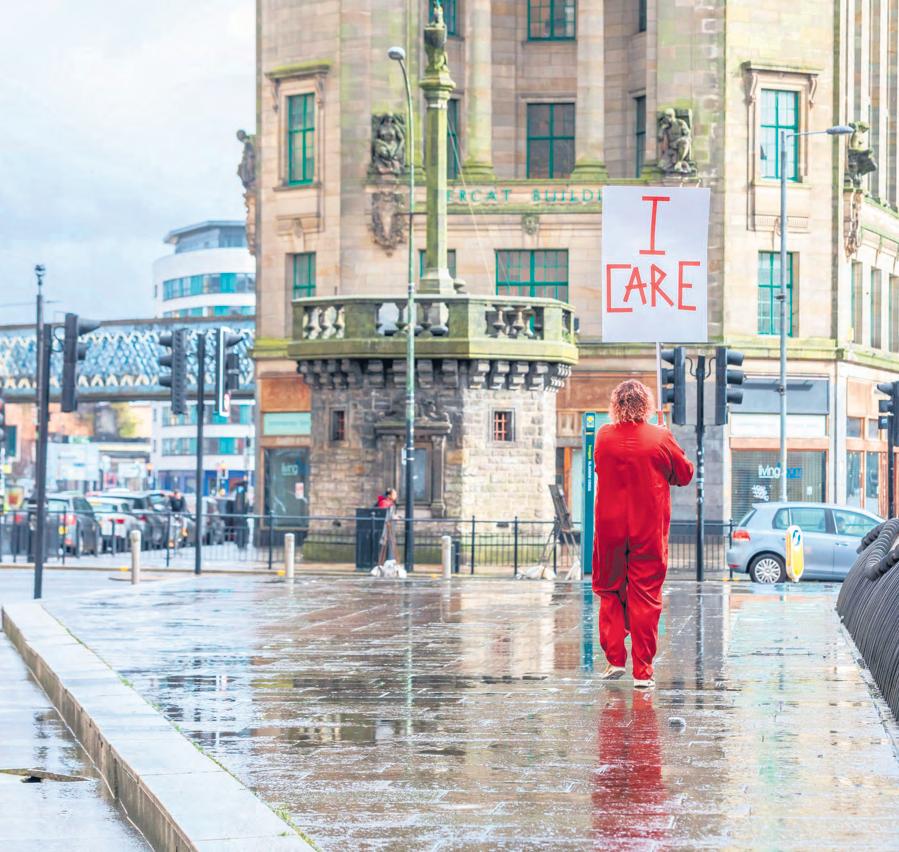
“We have the power to make changes if we want to”
Dr. Matthew SmithPhoto: Chris Scott Heather Marshall

The justice system isn’t always all that just. Prisons and dodgy public spending, policing and state violence – but what if there was another way? We have a closer look at transformative justice and explore its potential in Scotland’s future
Words: JJ FadakaIllustration:
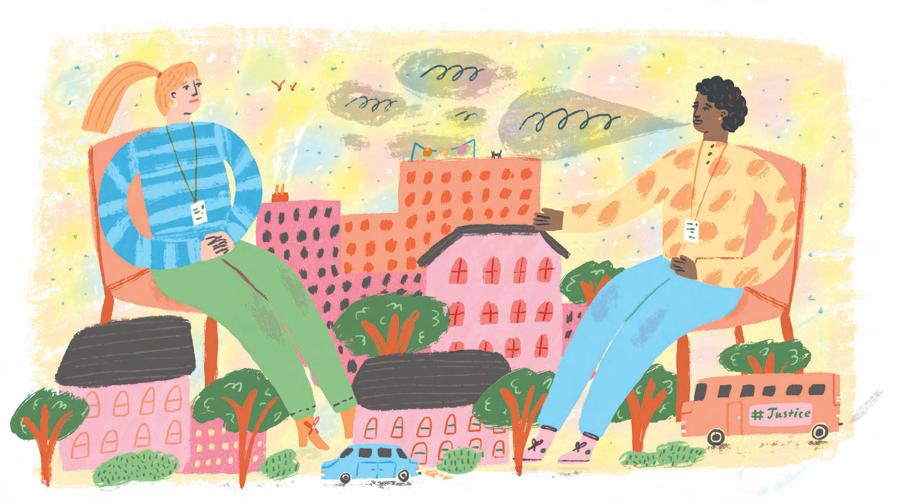 Connie Noble
Connie Noble
When we look towards Scotland’s future, we ought to question who has a say in painting this vision. All of us – or only those deemed citizens? Alternative ideas about who we include in society, what we provide them, and how we treat them have been growing from whispers to demands. And so, we have questions. Is it possible to reform the police, the devil we know? Or can we trust in other solutions instead?
Transformative justice challenges how we address harm. It asks us to put mutual accountability and social support at the centre of rehabilitation. It helps us rethink the category of harmdoer and victim as constantly fluctuating positions. It understands the root causes of ‘crime’ as a lack of resources and support. It is time for Scotland to move on from a reactionary, oppressive justice system towards a preventive one. From 2021-22, Police Scotland resolved, on average, 54% of all crimes reported to them. Crimes were more likely to be solved when the police used search powers, but ‘clear up rates’ (the number of crimes where the police have the evidence to prosecute) for harm involving more than one person, such as sexual violence or theft, have declined over the last five years. And, the number of people waiting for trial in prison reached a historic high in Scotland this year.
Policing creates criminalisation: it uses the law to make an action illegal and punishable. It is not simply a response to an action. Criminals are then physically and socially separated from citizens, who the police serve and protect. What happens in this separation is hidden from view in police custody and ‘not fit for purpose’ prisons like HMP Barlinnie. The Scottish Prison Service and construction company Kier have publicly boasted of their ‘community-facing’ woodland development, inaccessible to inmates but invaluable to maintaining the skyline for Alexandra Park golfers.
Glasgow Prisoner Solidarity Network has been campaigning against the construction of HMP
Glasgow, replacing the Victorian-era HMP Barlinnie as Scotland’s largest jail. Predictably, private companies reap the benefits even after a decade of austerity. Kier has a £100 million budget for the prison (although, already at a £300 million overspend). Constructing mega-prisons gives undue trust and resources to the prison service and entwines the government with private companies that benefit from a growing prison population. These resources would have a more mutual and long-lasting impact if given to our public services, where caring professionals – doctors, teachers, support workers – can identify the support people need to stop harm to themselves and those around them.
Criminalised behaviour is often a response to the conditions of an environment. Instead of investigating these environments, prisons freeze individuals in time, where their stru les compound with the consequences of incarceration. Their first-hand account of state and oppressive violence is de-platformed whilst lobbyists and executives direct policy behind closed doors. The work of transformative justice is to stop abuses of power and give everyone the same stake in building a safe community. Again, any demands for a radically progressive Scotland should include the infrastructure for social care separate from the cycle of violence.
And, under the police, we become complicit in extending the violence of everyday policing to those arriving in our country. The UK and Scottish governments have orchestrated a hostile environment for migrants, exposing how criminalisation is used to further the oppression of chosen groups. When migrants enter the UK, they cannot drive, work, or rent independently and must pay for anything more than GP care. Every person they work for or receive a service from is involuntarily
recruited to act as part of an informal border force via mandatory right-to-work/reside checks. Slipping this into our job roles normalises suspicion and criminalisation, creating the illusion of consent to policing. This separation of legal and illegal citizens leaves us feeling paranoid and reliant on the police.
Capitalism, patriarchy, white supremacy, ableism, and more – these forces structure how we live. These harms do not exist in a vacuum but are interconnected. They support each other to further privilege some and deny the humanity of others. Police Scotland have found themselves to be institutionally racist and sexist. The police claim to help the most vulnerable, but their unquestionable power to surveil and remove people from society exposes them as a source of oppression in our lives. Transformative justice, however, allows us to practise community-led interventions – using local skills and relationships to understand how harm has impacted everyone’s safety and what can be done to support all parties involved. With personcentred processes, the police will no longer be the only answer.
Transformative justice gives us a path towards changing the injustice marginalised communities experience in Scotland. It can help us introduce new ways of addressing harm and create a society that serves everyone, not just the powerful and influential. We can put our resources towards an independent, non-carceral social care network that keeps us safe and cared for. Bringing transformative justice to Scotland’s future centres the communities that have been historically hidden away. Support for them means support for us all. In finding solidarity, we make a better Scotland possible.
“Any demands for a radically progressive Scotland should include the infrastructure for social care separate from the cycle of violence”
Coming-of-age is tough – for a person and a nation. One writer reflects on maturing alongside the Scottish independence movement, navigating an adolescent selfhood, and the growing support for an open, progressive nation
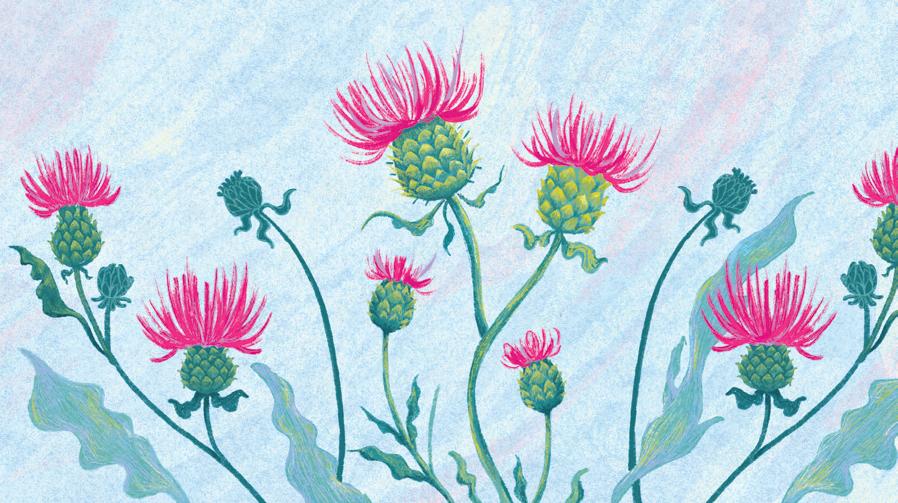
Iwas 16 when I first fell in love with the idea of an independent Scotland, and like most first loves it didn’t work out. So when plans of a second referendum were announced for almost a decade later, it felt like running into an old flame. So much had changed but there was still some part of me that felt the same way I had all those years ago – a tangible sense of national pride that felt innate and genuine.
It’s not exactly normal to romanticise a political issue like this, but it’s hard not to when it has bookended my entire adolescence. Voting in the first referendum was a defining point of my teens, and I had just turned 25 in 2022, when the Supreme Court rejected the bid for IndyRef 2. It was a decision that simultaneously defeated and bolstered the resolve of supporters like myself, because it was arguably more evidence of the paradoxical power asymmetry within the constitutional makeup of the UK.
Back in 2014, my generation became the youngest in British history to vote in an election. It felt like destiny: at a time when so many of us were being asked to make decisions about our own future, we would also be deciding the future of the country. I didn’t pretend to understand the various intricacies of the debate but, what I did understand as a 16 year-old, was that someone telling me not to do something meant I only wanted to do it more.
The arguments of the ‘Better Together’ campaign were coded in the language of a jaded parent – Scotland isn’t big enough, our wants are unrealistic, we have to avoid risk. To me, then, the
referendum wasn’t about achieving some arbitrary political goals, but affirming feelings I had harboured all my life as a Scottish person in the UK: sidelined, never listened to, longing to have control over our own future. It’s embarrassing to look back now and realise how indistinguishable my politics were from my angst.
A pivotal moment in anyone’s coming-of-age is reckoning with the creeping sense of your own naïvety and realising that maybe some of the things your parents said were actually right. Over the years, the Scottish independence has, at times, witnessed a similar reckoning within the movement.
In order to distance ourselves from the likes of Brexit supporters, we paint the cause of Scottish Independence as one with more noble intentions: dismantling the systemic oppression of Westminster and enacting a progressive framework in its place. However, that relies on the exceptionalist idea that Scottish people are inherently more left-wing than the rest of the UK – which is only somewhat true if your sole point of comparison is a Tory government. Just this year, a True North poll found that most Scots are in favour of new oil licenses, Scottish Police has admitted it is institutionally racist and, as noted by GMB Scotland, workers across public services continue to be offered less pay than their counterparts in England. Gaining radical power wouldn’t automatically see us use it radically.
The primary motivation for an independent Scotland is often tied to a specific narrative: this is a reclamation of our sovereignty after centuries of oppression by an unfeeling English state. There
Words: Ewan Shand
Illustration: Ione Rail
are elements of truth to that story, but it’s dangerous to view Scottish independence as an act of decolonisation when it is also a direct product of it – industrial decline in Scotland came partly as a result of the fading influence of the British Empire, and it is no coincidence that Scottish nationalism grew in tandem with that decline. The UK began the process of dismantling its colonial industrial complex throughout the 1960s; simultaneously, as the Scotsman reports, the SNP saw its membership grow from 2,000 to 70,000.
Like anyone stru ling with their sense of self, our rabid performance of a distinctly ‘Scottish’ identity – saltires and painted faces –has been compensation for our insecurities; deeper, messier questions are drowned out by the sounds of bagpipes and freedom cries. The Britishness we so desperately want to separate ourselves from is, now and forever, an inextricable part of who we are.
Having your entire sense of self crumble is part and parcel of any good quarter life crisis, and as much as it’s frightening, it can be equally liberating. One thing I’ve learned from this period of my life is that once you stop chasing an idealised version of yourself, you can start finding out who you really are. You can start to meaningfully express a sense of self in a more open, empathetic way.
A vital step in the future of the independence movement is re-defining our concept of what ‘Scottishness’ means. It doesn’t have to be rooted in arbitrary cultural sensibilities or a vague sense of historical victimisation, but rather in beliefs and values that are universal. I’ve often hoped that one day ‘Scottishness’ can come to mean openness –that the day we decide to establish a border is the day we allow anyone to pass through it; that we fight for environmental policies which give not just us, but everyone, a chance at a future. This is a dream I’m happy to keep holding on to – for IndyRef2, and ever after.
“Having your entire sense of self crumble is part and parcel of any good quarter life crisis, and as much as it’s frightening, it can be equally liberating”
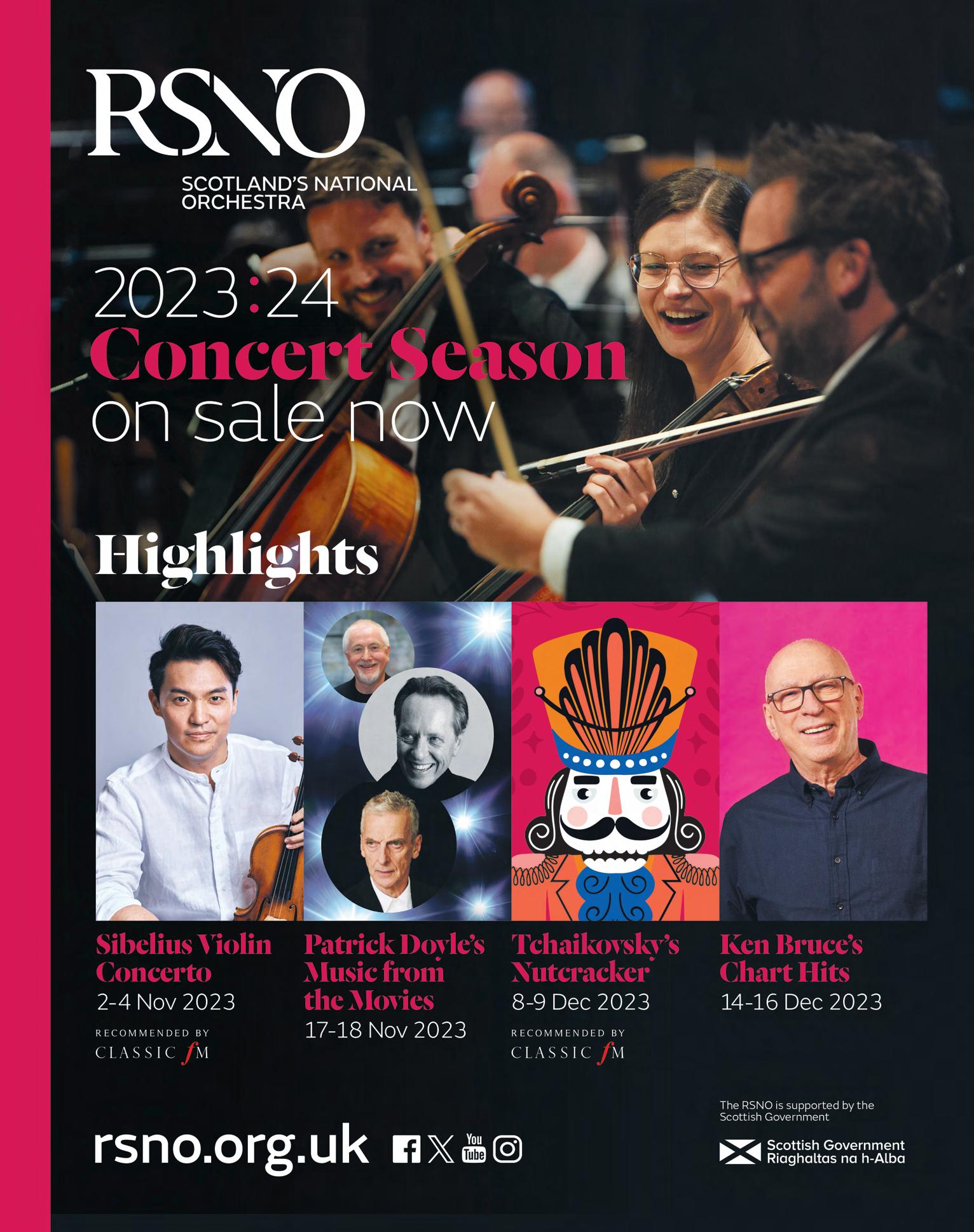
Scottish Contemporary Art Network has been tirelessly advocating for cultural workers in Scotland for many years. The Skinny meets the organisation’s director, Moira Jeffrey, to hear more about their latest public campaign, Artists Make a Better World

Words: Harvey Dimond
Launched this summer, the Scottish Contemporary Art Network’s (SCAN) Artists Make a Better World campaign plastered the faces of contemporary artists on billboards across Scotland. As well as promoting the importance of contemporary art to the health and wellbeing of our communities, the campaign also aims to reach out to policy-makers and politicians to “motivate them to support artists in budget and policy decisions,” says Moira Jeffrey.
The campaign stunningly represents the expansive scope of artistic practices in Scotland and the contribution of cultural workers to our cities, to our islands and to the nation’s place on the international stage. For the public poster and social media campaign, SCAN worked with a variety of artists and organisations across the country whose work aligns with the organisation’s values. These include Sculpture House, an artist-led collective who have transformed a Victorian town house in Paisley into a community resource, complete with a clay workshop, plaster workshop and kiln. The space was opened in 2022 by artists Nick Evans, Laura Aldridge and James Rigler, who encourage the use of the space for collaborative workshops and events. Christian Noelle Charles, a Glasgow-based artist, also features in the campaign. Charles’s multidisciplinary practice speaks to solidarity between Black female creatives in Scotland, through the lens of video, printmaking and performance. Her recent exhibition at Edinburgh Printmakers, titled WHAT A FEELING! | ACT I was part of Edinburgh Art Festival this year, and Charles’s upcoming performance at Take Me Somewhere festival in Glasgow on Saturday 14 October will form the follow-up ‘act’.
SCAN also works directly with its members to platform and raise awareness of their work. In August, the organisation arranged for MSPs to visit a number of artists and organisations in their studios, galleries and venues so they could witness the workings of the creative industries in their constituencies – an opportunity to both showcase creative work but also for MSPs to understand some of the challenges that cultural workers are currently facing. Jeffrey mentions a number of artists and organisations that participated, including Project Ability, a Glasgow-based organisation supporting people with learning disabilities and mental ill-health, Alena Rogozhkina, an Edinburgh-based Ukrainian artist specialising in community
wellbeing and Soulisquoy Printmakers, an artist-led workshop in Orkney bringing accessible printmaking to the island’s artists and communities.
SCAN has been campaigning for the rights of cultural workers since 2012 and has supported the creative industries through some tough times, including the pandemic, the cost-ofliving crisis and throughout the ten-plus years of Tory austerity and cuts. SCAN regularly engages with the Scottish Government on cultural policy, platforming the voices of its members. “An example [of SCAN’s advocacy] was our response to the Draft Culture budget for 2023/24 – we gave evidence in Parliament, collated from our members and peers, and spearheaded a campaign to reverse the proposed 10% budget cuts to Creative Scotland,” Jeffrey explains. The campaign was successful initially, with the Scottish Government agreeing to reverse the proposed budget cut. However, at the end of September, culture secretary Angus Robertson confirmed the £6.6 million budget cut would be made, as a result of “rising costs and pressure on budgets across government, made more challenging as a result of rising UK inflation.” These cuts will be incredibly detrimental to Scotland’s creative industries at all levels and puts over 2000 jobs at risk. In response, SCAN has promised to support the organisations who will be affected by these cuts: with a focus on “supporting (organisations) rather than make more demands of time and resources.” Another organisation, Campaign for the Arts is now inviting members of the public to write to their MSPs and to sign and share their petition.
As Jeffrey points out, all of us who understand the importance of contemporary art to the health and wellbeing of our communities can make a difference in fighting for the amazing work that arts organisations and cultural workers do. Jeffrey su ests “writing to your MSP to ask them to support artists in the next budget. We find there is nothing more powerful than face to face meetings with local politicians, like councillors and MSPs, they are surprised and often blown away by the work that goes on.”
To find out more about SCAN’s work, you can sign up to their free e-bulletin, the SCAN Circular, or, even better, become a member. The money raised through membership goes directly into campaigning, and members’ voices are amplified in the process of advocacy. You can find out more at sca-net.org
Goethe-Institut Glasgow are celebrating their 50th birthday with a one-day, free festival. We take a look at the workshops, performances, films and games on offer
Words: Ellie Robertson
For 50 years, the Goethe-Institut has provided Glasgow access to courses in German language and culture. In 2004, the team settled in their current home at 3 Park Circus, in a building shared with the Alliance Française Glasgow, creating a hub of European learning and community right in the heart of Scotland’s largest city.
With a Language Department and lending library providing courses in German language at all levels of proficiency, and a Cultural Programme Department facilitating the artistic exchange between Scotland and Germany with artist residencies and events such as the Fokus Film Festival (which returns in January 2024 for the first time since the pandemic), the institute has sustained a thriving link between two cultures for half a century, and are celebrating their abiding achievement with a free-of-charge, one-day festival, for all ages, this October.
Though the festival proper runs on 28 October, attractions start a little earlier, with poetry trail On the Tip of Your Tongue opening on the 25th. Writers from across Germany, France and Scotland have adapted each other’s favourite proverbs into poems, and the resulting work has been placed around the institute, encouraging visitors to explore the grounds. On the same day, people can attend a 40-minute sound portrait, created for the 2020 at-home Counterflows festival by Radiophrenia co-managers Mark Vernon and Barry Burns, in collaboration with Berlinbased sound artist Antje Vowinckel.
As for the 28th, visitors will be able to sit in on taster lessons in German, getting a feel for the kind of courses that Goethe-Institut Glasgow runs year-round. For the little ones, the lending library is hosting a miniature scavenger hunt aimed at 6-10 year olds; The German Language Adventure is an all-ages, self-paced game that allows players to explore German-speaking cities, using creativity and logic to solve puzzles and pick up the local lingo, and interactive science experiments will be running to let the cleverest of kids pick up on some German greetings, as well as instructions on how to “feed the Foam Monster.”
If you’ve already learned some basic German, a graffiti art workshop will teach you how to render words and slogans in an authentic German street-art fashion, and artist Elspeth
Chapman will host a class on how to recycle books into decorative art and origami.
If you want to get engrossed in German culture, the institute will be screening the greats of German cinema’s last five decades, with Wim Wenders’ Wings of Desire, Faith Akin’s Soul Kitchen, and plenty more on show.
Another four thought-provoking films, featuring experimental choreography and dance, make up the Screendance: Bodies in Motion event, and Elisabeth Schilling, who has participated in 230 contemporary dance performances across 19 countries, offers her expertise to those interested in the art of contemporary dance. No previous experience is required for her workshop, but Schilling is sure to help improve dance skills and offer insight into this breathtaking art form. If the beat has a hold on you, Hip Hop! Can’t Stop! Won’t Stop! is open to anyone who wants to stretch out their breakdancing skills, this time against the unique flavour of German hip-hop.
If theatrics are your thing, Offsite is a haunting performance installation on the topic of communicating with spirits, an immersive experience that’s only for the festival’s bravest attendees.
The 50th birthday is packed with what are sure to be memorable performances. BWA is an exploration into translation and non-verbal communication, between two performers and a flexiply strip. German writer Mithu Sanyal hosts a reading from new book Identitti, and will be in conversation with journalist Chitra Ramaswamy. Starman, named for the David Bowie anthem, sees a live drawing session with graphic novelist Reinhard Kleist introduced with the music of Raymond MacDonald. MacDonald, a renowned avant-garde composer, will also be giving a solo performance of improvised saxophone music, and R.AGGS of SAY Award winners Sacred Paws will be in concert to close the festivities.
50 Years of the Goethe-Institut Glasgow, 3 Park Circus, 28 Oct, free goethe.de
“The Goethe-Institut has sustained a thriving link between two cultures for half a century”
Edinburgh is labelled as the ‘world’s leading festival city’ due to the various cross-cultural events such as the Fringe, Edinburgh International Book Festival, Edinburgh International Festival, and Edinburgh Art Festival all happening simultaneously across the month of August. As such, the city is well known for its showcase of arts and culture, but what happens after August has been and gone? What and who is left in Edinburgh?
With over 12% of the city’s population being students (according to the 2011 census), and with 4 million visitors each year in contrast to a population of 524,000, Edinburgh is a city constantly in flux; a city of arrivals and departures. Having built an identity on tourism, the city is largely shaped for those who have experienced it for only a short time, with an understandably romanticised perspective of an energetic and creative Edinburgh in response. The danger of this transient experience is that Edinburgh may itself become lost in upholding an identity as a tourist and student city, while issues related to its local community become obscured from view.
I am wondering how sustainable the August festival model is in relation to having a concentrated period of time which is bustling with people and creativity, only for the same energy not to be upheld throughout the rest of the year. Of course, there are other smaller yet still very exciting
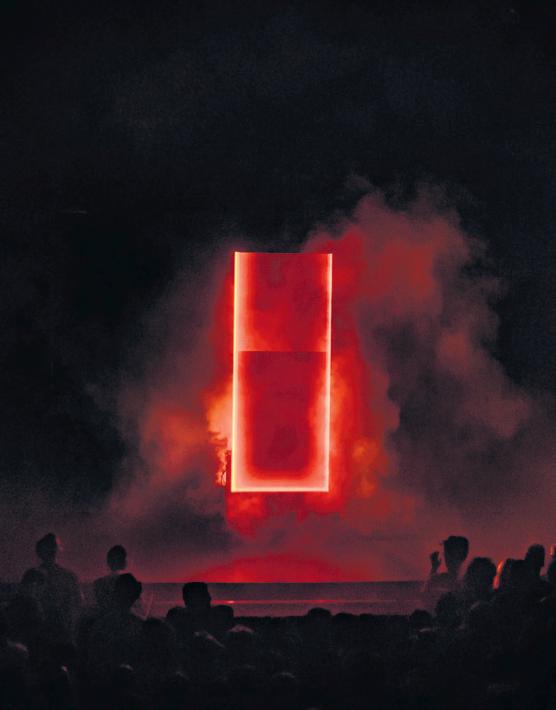
festivals that happen in Edinburgh such as Fringe of Colour Films, Spit it Out and LeithLate, which take place at different points across the year, and it is not to say that a wider community of creatives doing interesting things does not exist within the city. But what I would like to see is an investment in Edinburgh’s artistic community that is also visible and supported throughout the year, as opposed to only one month which mainly serves an international audience. There are a multitude of issues with the Fringe itself – who it is for, who it excludes, and the financial costs associated with it, but I would also like for us to extend these questions to critically consider the current lack of commitment to the arts and artists themselves who live and work in Edinburgh.
In recent years, we have seen important cultural spaces shut down, such as the artist-run gallery and affordable studio provision Rhubaba Gallery & Studios in 2021, and the independent nightclub Studio 24 in 2017. Spaces are being closed as a result of property expansion in the case of Rhubaba, and noise complaints for Studio 24. This is a contrast to the seemingly ‘creative city’ which Edinburgh has claimed as its title. As seen through the closure of these spaces which were integral to builiding creative communities, the reality is that the value of arts and its community is not entirely being upheld beyond August. This is further noted through the increasing rent prices and lack of opportunities for artists, which sees regular movement of people to more affordable and vibrant cities like Dundee or Glasgow, especially for their contributions to contemporary art and live music. These cities have established many more independent spaces for exhibitions, gigs and events, something which is hard (but not impossible) to achieve in Edinburgh due to the increasing living costs, plus the lack of available physical space for creative enterprises to take over due to the constant demolition and building which serves to increase the student accommodation all over the city.
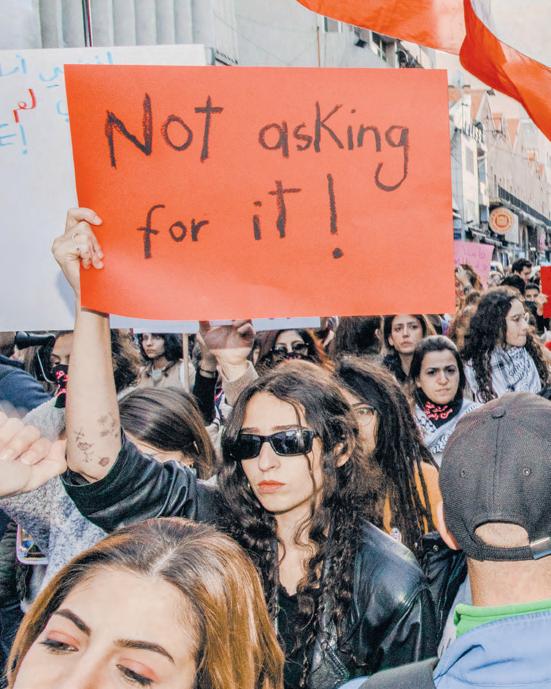
How might Edinburgh operate in real time? Perhaps by building on the
current relationship that the city has with tourists and students to include investment in existing communities. There have been talks to introduce a Tourism Tax, which has been seen in other tourist hotspots such as Venice, in the hopes of supporting a more localised approach to tourism. This will hopefully see funds be used to improve services and public spaces in the city all year round, including for residents. This initiative could be expanded to invest back into communities and cultural spaces which serve the communities who are not always visible – who operate outside the August festivals, and who may be facing issues of precarity which come with the increasing unsustainability of working within the arts.
A critical approach to thinking about festivals and tourism is integral for creating a mindful approach to how we might engage with different forms of culture. Sometimes I wonder who the city is for, and what its relationship to art might look like in years to come. I hope to see a visible dialogue between Edinburgh and its communities, with the future-proofing of cultural spaces and creative people firmly placed within its landscape.
This article was produced as part of Diverse Critics, a talent development programme for disabled and/or Black and people of colour arts writers delivered in partnership between Disability Arts Online and The Skinny and supported by The National Lottery through Creative Scotland
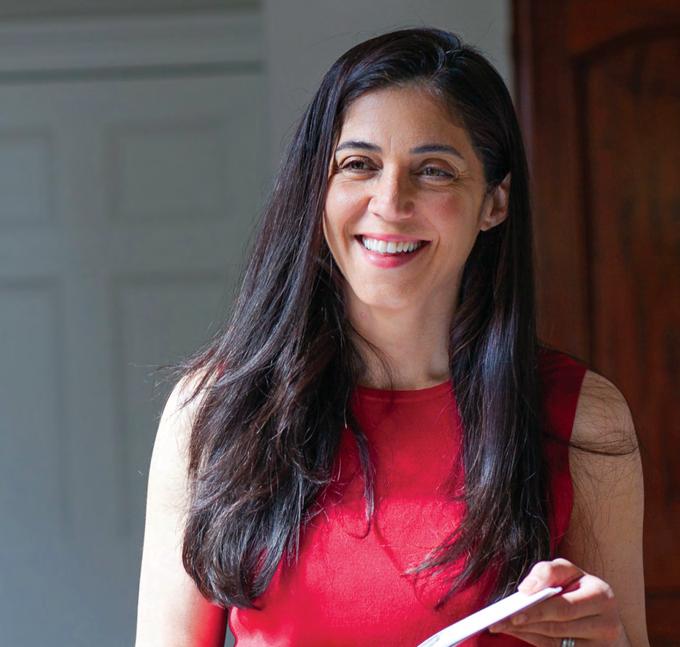

Words: Andrés Ordorica
“The past few years, I’ve gotten to know a patch of the sea very well,” says Marjorie Lotfi, reflecting on her connection to Scotland’s landscape. On a cool autumn morning in September, we are sat in a café just on the edge of the Meadows in Edinburgh to speak about her long-awaited debut, The Wrong Person to Ask: an exploration of her personal experiences of growing up in revolutionary Iran in the 1970s and her family’s eventual migration to the United States. Themes of emplacement and belonging sit heavily on both the collection and Lotfi herself; her collection, in a way, is an interrogation of what it means to understand a patch of anywhere – land, sea, or air – after a lifetime of migration and exile.
“I wanted to answer the question of what can happen and how we start to make a home once we’ve had one removed from us,” Lotfi says of the questions that run through The Wrong Person to Ask. “And secondly, I wanted to move away from this idea that people are just the sum totals of their traumas.”
Being of mixed-heritage, Lotfi explains, she has had a lifetime of being interrogated on any number of diplomatic dramas between her two homelands. “Part of me really wanted to include poems about all sorts of other things,” she adds, “but then when I started looking at those, they really were about home [and] trying to anchor myself in this place.”
A regular on the Scottish literary scene and co-founder and director of Open Book, which provides creative writing sessions across Scotland, Lotfi has been writing poetry since childhood but has always been a tough self-critic. “As a little girl, I had this idea that what I was writing – the words – were not perfect enough yet.” And so Lotfi continued to seek out writerly perfection, but life took a different course when she started work as a lawyer in New York City.
“I always wrote quietly on the back of napkins,” Lotfi explains eagerly, but her return to writing came when she was admitted into an online writing master’s at the University of Edinburgh. There she found refuge and the time to dedicate to her poetry.
“Like most of us, life gets in the way of publishing…” She pauses to mull this over. “Lots of people were helping me put a collection together, and then I would think: ‘I’m not ready yet.’” She credits the James Berry Poetry Prize and the team at Bloodaxe Books for helping her to finally send a collection out into the world.
The Wrong Person to Ask, then, is the culmination of these years and years of writing, giving voice to Lotfi, the Iranian people and all those who have sought refuge in new countries. In her poems Alarm I and Alarm II, Lotfi shares memories of revolutionaries setting fire to her school in Tehran and then living through air raid drills in Washington
DC during the Cold War. “The Principal announces/ on the loudspeaker in every class/ that today’s exercise was only/ a drill, that we’d done it well,” she writes. It encapsulates the strange irony of Lotfi’s diasporic experience: surviving a childhood in which gunshots and bombs were a very real backdrop only for her new life to be spent preparing for imagined wars.
Yet Lotfi’s collection not only touches on her own childhood but also on her great-great grandmother who, after Iran closed its borders to Azerbaijan in 1917, lost touch with her daughter. “It’s more a working out for myself of the stories” Lotfi says of this intergenerational interweaving, “trying them on to find a way of ordering my history and my family’s history. All the things we see as politics are personal for me. Politics affect human lives.”
Yet against this backdrop of rigid political boundaries, Lotfi’s collection is also in intimate conversation with the natural world, a relationship which offers new ways of understanding emplacement beyond ideas of nationhood. Lotfi, a seasoned marathon runner and open water swimmer, recounts a particular run through the Pentlands in which she paused to look out on the landscape. “In the hills, nobody is asking you why you’re there or where you come from. You’re just there.” Lotfi smiles. “I can picture where I was on this particular run, thinking: ‘hang on, this is me. I can stop lamenting what I don’t have, and I can just create it.’”
In her final poem
The Hebridean Crab Apple, Lofti writes of a lone apple tree on an uninhabited Hebridean island: “This, I understand: the instinct to cling,/ at any cost, to the place you are rooted,/ to see another season through, though/ the others seed elsewhere.” For a poet who has built a life in Scotland after a long journey both towards her debut collection and a sense of belonging, it offers a fitting end. As Lotfi says:
“This is the place I feel at home.”
The Wrong Person to Ask is out with Bloodaxe Books on 19 Oct
Ahead of the Scottish International Storytelling Festival, we chat with Iranian storyteller Zahra Afsah, whose collaboration with Syrian storyteller Khloud Ereksousi explores the possibility of female revolution
Words: Rho Chung
In collaboration with Syrian storyteller Khloud Ereksousi and director Jackie Ross, Iranian storyteller Zahra Afsah invites audiences into Iranian stories from different millennia – each story constructs women’s bodies as potential sites of power and revolution.
The Skinny: To start, could you tell me a little bit about the piece?
Zahra Afsah: The piece is called The Voice Shall Always Remain, which comes from one of our very famous female Persian poets, Forugh Farrokhzad. It circles around the notion of how people and stories come and go but the voice of certain characters throughout the story will always remain. The story I share is made of three different stories. Story number one comes from the Shahnameh – The Book of Kings – by the Persian poet Ferdowsi. The next is from another Persian poet Nizami; he basically retells the same story in another context, but then takes it into another domain. The value of women in his stories is portrayed differently. I move from that into what happened in Iran a year ago with the death of Mahsa Amini. I begin repeating the slogan Woman Life Freedom, Zan Zendegi Azadi, Jin Jiyan Azadi, and I begin telling her story. I speak about how her death united the women of Iran: how they came out, how they shouted for her right to be a human, a woman, to dance, to free her hair in the air, to speak her mind. The beautiful Syrian storyteller Khloud [Ereksousi] will tell us about this slogan from her point of view. This slogan actually started before it was used for Mahsa Amini’s death. It was used by Syrian Kurdish women some years ago, and it never died.
And what role does the storytelling technique
pardeh khani play?
In old Persia, around the 18th century, people used to gather together in tea houses and coffee houses [and] storytellers would come in, usually carrying a piece of [painted] cloth with them. And the storyteller would begin telling the story behind the image and moving in and out of the painting.
Mehdi Farhadian, who is a very well-known painter in Iran, has painted these three different stories together [on a curtain] as it was used in the past, one layer of story on top of the others.

I’m really fascinated by the role of textiles. You have the pardeh, garments, hijab all flowing through the paratext and the text of this piece. I love the way that you say that the storyteller leads the audience in and out of the painting. Yes, it’s quite magical. The introduction of pardeh khani, the whole question of the hijab, how women
are covered in Iran... somehow, metaphorically, they are intertwined. I am reading the curtain, and I am revealing the story behind the curtain. And the women of Iran, they also came out to the streets and they started burning their hijabs and cutting their hair because they wanted to show more; they wanted to show what is behind the curtain, behind their hijab, behind what is covering them on the surface. This particular story has been told by Persian poets over and over again, and I always wondered: “Why this story?” Because we are not short of stories – why [was] this story carved and woven and hammered onto metalworks, into carpets? There is a message; the voice of women needs to be heard.
What can liberatory movements take away from this piece, this technique, and these stories?
In the second story, something magical happens. A girl goes through a lot of suffering, and she uses her wisdom to teach the king a lesson, and the king listens to her and actually asks for her pardon, which doesn’t happen in the first story, and obviously it doesn’t happen in Mahsa’s story. But the women of Iran have [always] been using their bodies and their voices – this whole act of cutting their hair is a political, theatrical way of showing resistance. And I think women have been doing that throughout history; we needed to use our creativity [and] our skills to show our voices.
That is an incredibly powerful sentiment. How has it been staging this work in Scotland, and is there a type of audience that you hope this work reaches here?
I am hoping that the messages of the stories come across, because some of these stories for Iranians are very familiar. For the non-Iranian audience it can be a bit complex, because it’s also very metaphorical. I have tried hard not to overcrowd the stories with too much metaphor, because the first and second stories are in the form of poetry and full of allegories. I hope that it brings something new but also connects [audiences] with the art of storytelling in general. I am quite certain that these stories are all very much connected and I am sure there are connections that [everyone] can feel. I hope so.
The Voice Shall Always Remain, Scottish Storytelling Centre, Edinburgh, 17 Oct, 8pm; part of Scottish International Storytelling Festival
Not Your Usual is a new series from The Skinny and Glayva highlighting interesting and exciting artists from across the Scottish scene. For our third instalment we catch up with prolific author Heather Parry over a Jumping Bean glocktail
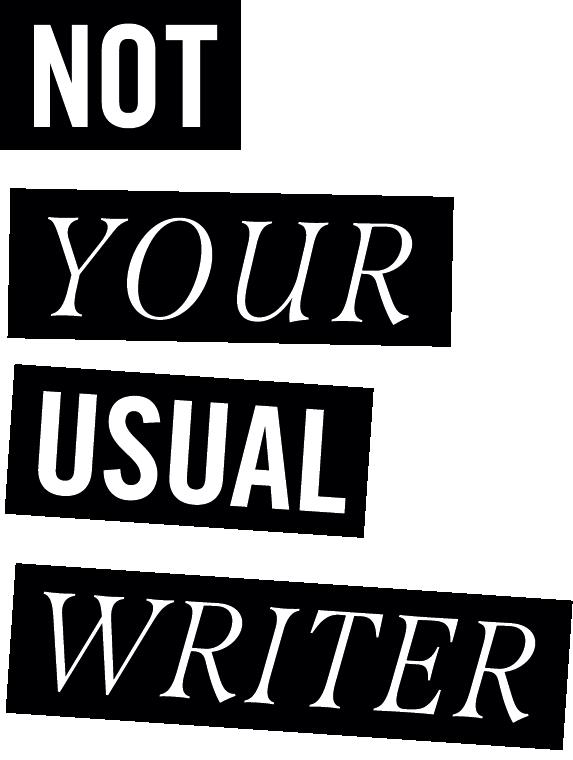
Words: Anahit Behrooz
When Heather Parry was a small child, her skin would regularly come o in sheets. Su ering from an extreme form of eczema, she would be wrapped in emollient and bandages at night, peeling and raw, waking up in the morning with akes of skin in the bed. “I was a little buttery apjack of a child,” she laughs. “But in my most formative years, I had to grow up in a world where the barrier between me and the outside world wasn’t strong or reliable. My physical body felt vulnerable, changeable... I would wake up and not know what the state of my body would be.”
All our adult lives, some people say, are merely an attempt to relitigate and process the eerie, shadowed, half-understood events of our childhoods; if so, Parry’s writing is a clear cipher for attempting to feel out the edges of a body’s boundaries – its imsy, permeable outer shell. Her formidable output (next April will mark the release of her third book in less than two years) all revolves around the body: its possibilities, its deceptive border spaces, the ways – as Parry says – it can become “a site of transformation, a site of horror, a site of inspiration.”
Her debut novel Orpheus Builds a Girl, released in October of last year, builds upon the true story of Carl Tanzler, a German medical professional in 1920s Florida who fell in love with a young Cuban tuberculosis patient and stole her body from its grave for seven years. If Frankenstein was the modern-day Prometheus, then Orpheus Builds a Girl is the modern-day Frankenstein, a chilling, Gothic investigation into a bodily solipsism, and the violence that occurs when certain bodies are deemed usable and passive.
Similar themes run through her short story collection, This Is My Body, Given For You, while her upcoming debut non- ction book, Electric Dreams:
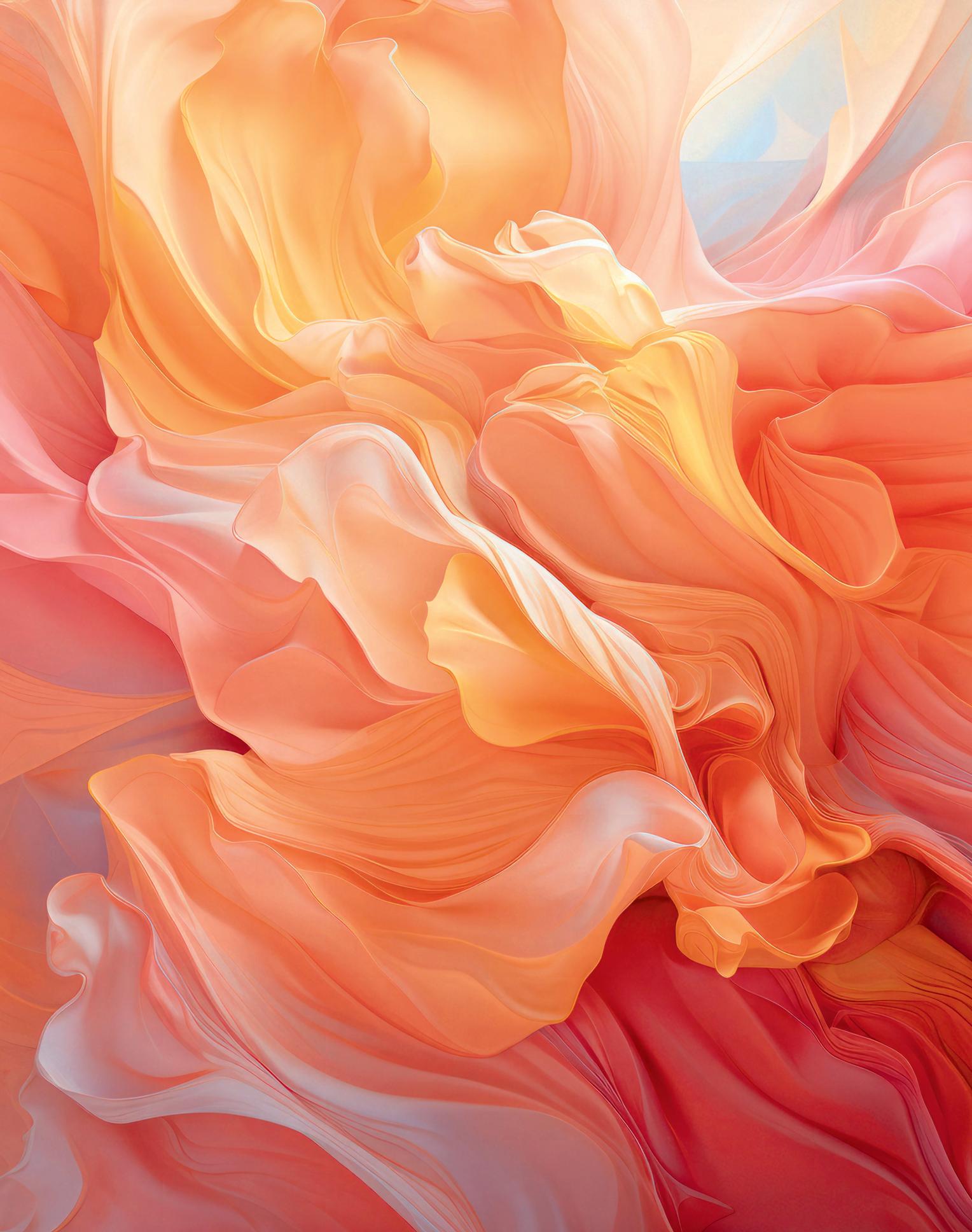
Sex Robots and the Failed Promises of Capitalism, examines intersections between power, desire and technology. “I’m really interested in why we nd them so seductive as a concept,” Parry explains, “and why we listen to the Elon Musks and Peter Thiels when they tell us not only that they will happen, but that we’ll want them.”
Synthetic, bleeding, decaying, assembled… there is something about the body in all of its forms that keeps drawing Parry back, a continued exploration since childhood of its uncanny conditions. “I write about food a lot,” Parry considers, “and sex sometimes, which are [also] really embodied experiences. It’s all to do with things going in and out of your body, isn’t it? How your body chooses to meld with other things and what pleasures you can take in them. But what dangers there are, as well.
“I guess I’m concerned with how we are trapped in our bodies,” she continues. “We’re trapped in a relationship with food. We’re trapped in a relationship with sex. Even if [we’re] rejecting it, that’s having a relation, that’s making a choice. I can’t conceive of thinking of the body as a neutral space.”
Thematically, then, all of Parry’s books have the distinctive Heather Parry touch – what she terms her “little obsessions” – but they unusually span across genre and form, encompassing everything from experimental prose to witty essays. Why this practice across di erent modes of writing?
“I suppose they o er di erent things,” Parry says, “because with ction, you’re asking someone to enter into a what-if scenario with you. Like, what-if this happened? And what I like to do is reveal at the end that it’s based on something true, so it’s a what-if, but you’re already living in the what if world. Whereas with non- ction, you’re really just trying to pull someone’s point of view
towards yours for a brief period to see if they nd it more comfortable than their own. You don’t require them to trust you quite so much. You need a reader to trust you with ction, but with non- ction there's no leap of faith.”
Parry’s elasticity when it comes to exploring her little obsessions shows no sign of stopping: she has two more novels in the works, and is brimming with ideas for essay collections – books that would continue to straddle the line between the private intimacies of the body and the public interventions of power made upon it. The possibilities of non- ction particularly excite her: a return, she explains laughingly, that pivots back to her earliest writing experiences.
“I wanted to be a music journalist at university,” she admits. “The most exciting day of my life was when I drank with Bi y Clyro. I really wanted to be Lester Bangs, and that didn’t happen for obvious reasons. I do like the idea of writing long, insane ctional monologues with Lou Reed. But my life took me o that course.”
Orpheus Builds a Girl is out with Gallic Books. This Is My Body, Given For You is out with Haunt Publishing. Electric Dreams: Sex Robots and the Failed Promises of Capitalism is out with 404 Ink in April 2024.
Listen to an extended chat with Heather Parry on The Skinny and Glayva’s new podcast, Not Your Usual, at theskinny.co.uk or wherever you get your podcasts
This interview was conducted over The Jumping Bean, a Glocktail made with Glayva, espresso, double cream and maple syrup, made warm in a martini glass with no ice.
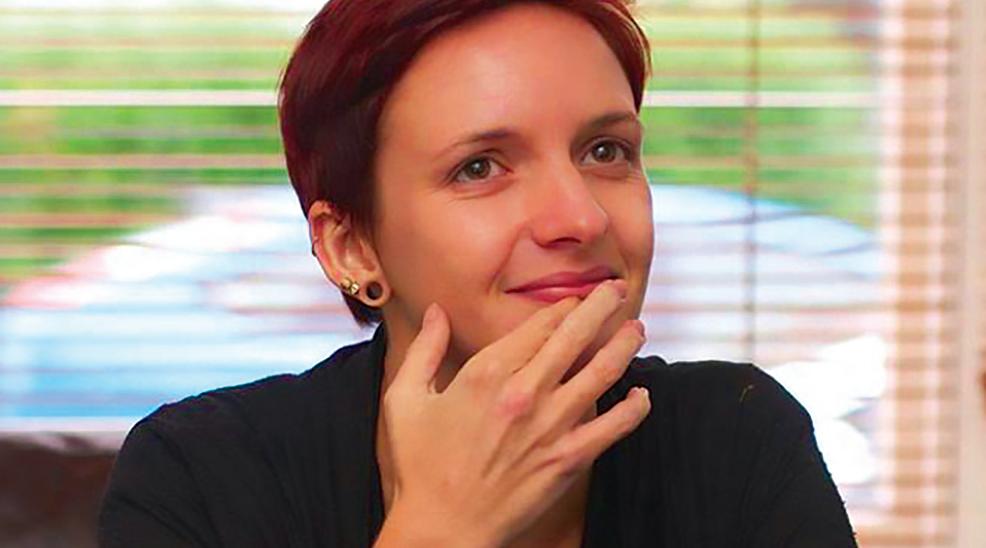
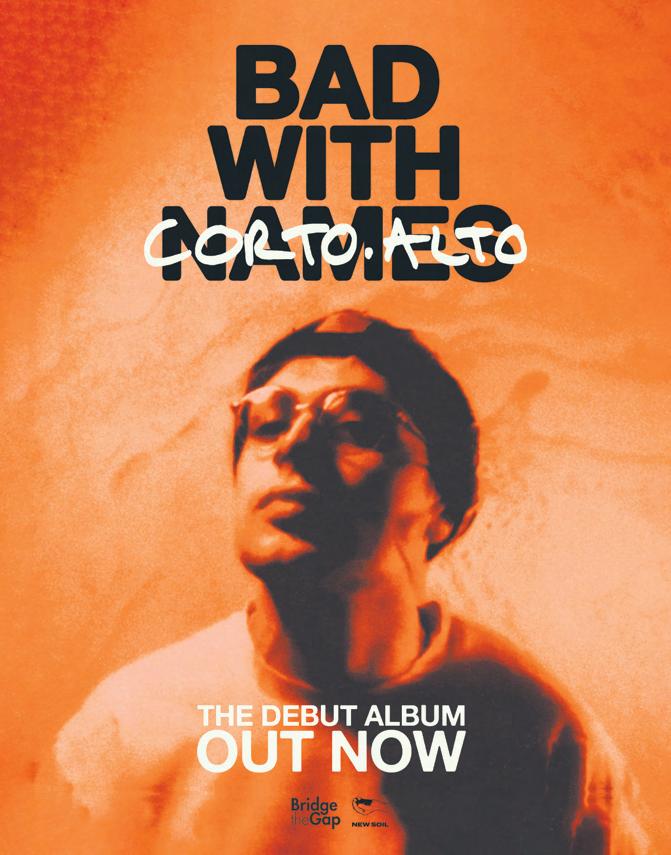

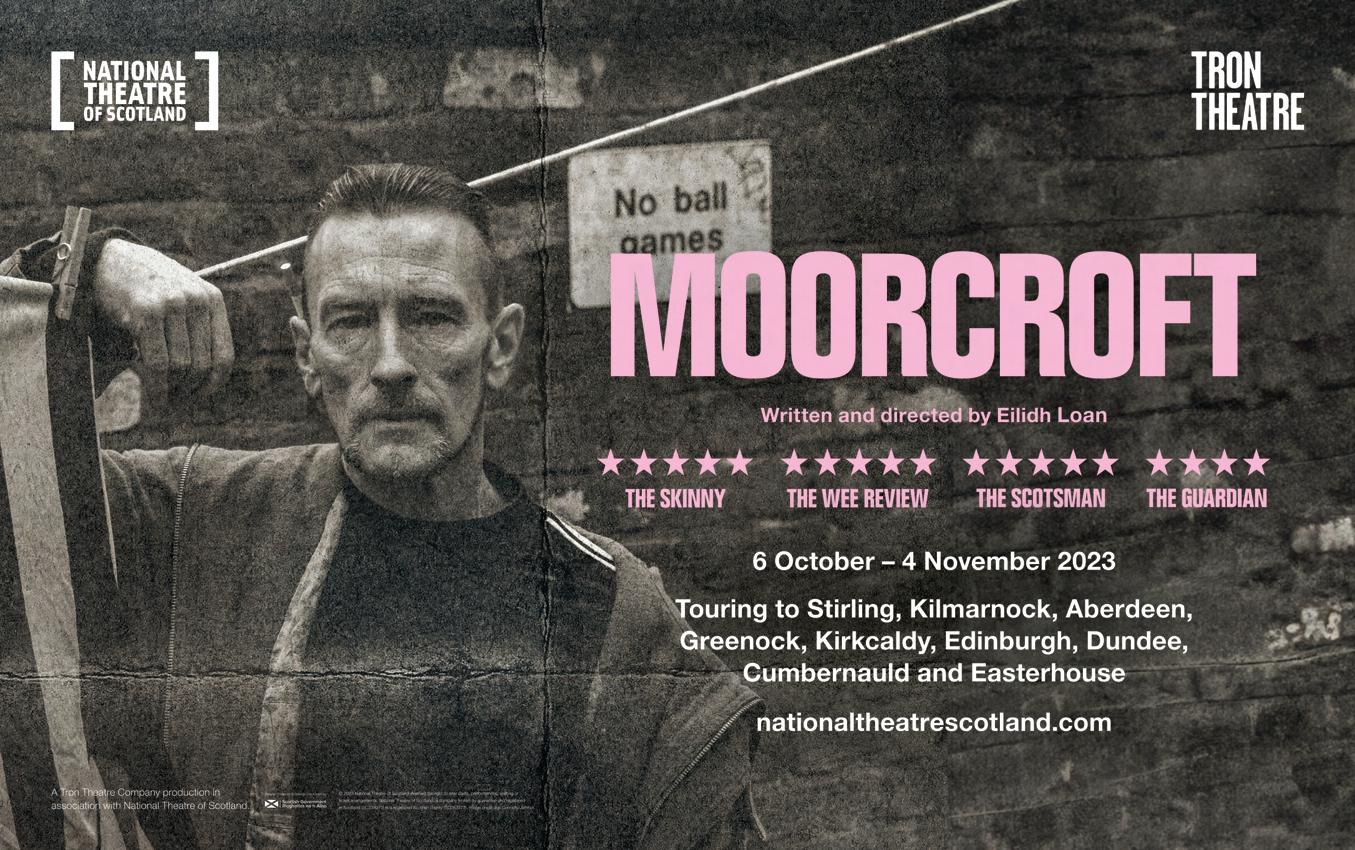
We chat with Racheal Ofori about her new play FLIP!, directed by Emily Aboud, which centres on the relationship of two young Black women and their craving for social media fame and wealth

Words: Andrea Cabrera Luna
The Skinny: Could you introduce us to your new play, FLIP!?
Racheal Ofori: FLIP! is about two really good friends, Carleen and Crystal, who are in their 20s. They’re on the equivalent of YouTube and they’re making vlogs and they get into trouble, so they leave YouTube. Then they join FLIP!, which is this new app that is taking the world by storm. The idea is that you need to make lots of content to see money come in. They’re making videos of trending dance moves and slogans. They’re really rolling with it, building a hype and an audience. Then Carleen seems to get more love from the fans and she takes off a lot more, which obviously has a knock-on effect on the friendship.
Carleen ends up signing with this content management agency, who have these AI ways in which they’re exploring making content.
One of the ways is that, because we’re constantly putting stuff out online ourselves, you can have an AI key, which is your image footprint online. They’re like, “We’re going to make videos for you, we have enough footage and algorithms to make content without you. But don’t worry, nothing goes out without your approval.” Ethics start to shift, but it’s a good paycheck at the end. You see this monster grow.
What drew you to the subject matter?
The play was commissioned by Soho Theatre as part of Soho Six, just before we went into lockdown. Everybody was online and I was always really interested in exploring female relationships.
It was also just watching loads of content and seeing TikTok take off. Since that first draft, the play has been developed and AI is very much in conversation right now – the ideas around music and being an artist: somebody can use an AI algorithm to put your voice on, singing lyrics you haven’t sung. We think we’re fully in this digital age now, but I think it’s only the beginning. It’s all just kind of influenced the stuff that’s come out. I’ve tried to write uncensored.
How did you and director Emily Aboud meet? We were looking for creative collaborators. I wanted somebody who could be a bit of a dramaturg eye, also someone that worked with
movement onstage, because I really want it to be a dynamic play. I want it to be bonkers. To be honest, that’s my brief! Then Fuel [cocommissioners of the show] su ested Emily, and I had luckily seen a production of hers called Pink Lemonade at the Bush. It felt like a nice fit.
You are in rehearsals, right?
So, only three days in. We had a look at the model box and what this Internet world will look like onstage because it’s not someone’s bedroom, but we also don’t want it to be like The Matrix We’ve also gone through the script, looked at the units, beats, shifts in energy, and hopefully tomorrow we’ll get on our feet, because there are moments of dance. We need to figure out what those are. There’s poetic moments that could be raps. It’s just finding the language together.
How are you feeling?
At one point I was desperate for certainty and I’m coming out of that. I’m like: “Let’s just lean into the fact that you don’t know. Because most of the time, you’re not going to know.” That’s what I’m trying to bring to my approach here. Just be like, “Okay, nothing’s fixed.” I’m kind of precious about some things, but if bits need to get cut or moved, I’m happy with that. Let’s just see what happens.
FLIP!, Fuel in association with Alphabetti Theatre, Summerhall, Edinburgh, 30 Oct-4 Nov summerhall.co.uk
Desperate times call for creative measures. In exclusive conversations with The Skinny, some of Scotland’s most innovative promoters and venues provide insight into their creative models and the clubbing climate in which they operate

Words: Cammy Gallagher
Facing post-COVID pressures in tandem with heightened inflation and astronomical artist fees, clubbing circuits across the UK are reaching boiling point. Recently, Scotland has seen venues open and close and promoters come and go. Meanwhile, homogenous lineups take the forefront, remaining one of the few continuities in a stru ling creative ecosystem offering little room for sustainable diverse programming. Desperate times call for creative measures: in exclusive conversations with The Skinny, some of Scotland’s most innovative promoters and venues provide insight into their creative models and the clubbing climate in which they operate.
Boosterhooch, aka Han, founder of Glasgow’s Events Research Programme (ERP) has been curbing ticket volatility through a monthly membership scheme – meaning parties can, generally, pay for themselves before even taking place. With patrons donating £3.50 at the beginning of each month, Han can plan accordingly, leaving full creative control over experimental programming without looming financial pressures. Though
offering £7 door tickets, “it’s not exclusive” she tells me, “it’s just the members enable things to happen.”
Once subscribed, you’ll receive a personalised card (annually redesigned by Alex Warner & Peter Mckenna), leading to collective familiarity at events – “there’re a few groups I can see within the membership... I hope it forms a community around it in that way.” Typically backing local bills, some members have gone on to play parties by joining ERP, becoming “something where people are inspired by each other… this is more interesting to me than helping big names.”
ERP’s monthly offerings spread across the city, while ‘special events’ at atypical venues – inspired by Han’s formative Sub City managerial days – have welcomed the likes of Debonair and General Ludd to Glasgow’s finest Bowling and Cricket Clubs, rattling team trophies with Shakara’s Knowehead Soundsystem. Incorporating performance, music and food, amongst film screenings, bike workshops, and interdisciplinary roundtable discussions, “I think there’s scope for doing whatever I want because it’s research,” says Han. With hopes of collective event curation, an annual report surveying membership, and plans to revive Communal Leisure – a political Headfirst-esque zine – Han is responsive to the happenings around her, in turn, exciting the future. “There’re communities around events and people doing interesting things, it only gets kind of codified in nostalgia.”
Bonjour, the Queer workers-owned co-op situated in Glasgow’s Saltmarket, converts community spirit into social action through safe-space club nights, workshops and events accessible for all. Radically political in its foundations, working collaboratively, not hierarchically, the venue has received support from The Green Party; an entity, similarly, operating radical structures within an unradical context. Their board, once 13 members strong, currently in the midst of restructure, is collectively led by Frankie, Freya and Kathryn. Meeting with them in Bonjour, you can see it’s more than a bar and much closer to a club in the associative sense. On their substructure, Freya explains “it was important that it was seated in radical politics,” upon opening in 2021, drawing from prior exposure to an “industry where you’re often working for somebody who doesn’t care about you as a worker.” Being a space for underrepresented groups in the LBGTQ+ community, Kathryn highlights the particular importance of “a core structure where everybody is equally represented.” In the creative sense, Frankie notes the strengthened scope for collective vision, together with diverse experience and perspectives, “using those to our strengths when different things come up.” Flat governance is met with flat pay for all staff, as well as consistent opportunities to upskill and become a part of the board.
Bonjour is a “space for people who don’t have anywhere else to go,” says Freya. “It was important tangible things were differentiating us from existing gay venues in the city.” Noting BIPOC lineups, Kathryn emphasises that “even within these queer spaces, there’re people massively underrepresented.” Handpicking approaches to improve safety and accessibility from nights before them, aiming for “a venue with all those things as an overarching

structure,” the club regularly subsidises home-time transport through the Taxi Fund, alongside hosting weekly Small Trans Library meetings, and fundraising for members within their community.
With care in abundance, it’s the lack of finance limiting Bonjour, although 2022 Creative Scotland funding did facilitate a Production Mentoring Programme, aiding the underrepresented within arts and nightlife. The support – incorporating artist care, branding and ticketing, in amongst welfare – sought to “pass on their whole ethos to nights, so it can go forth and multiply through Glasgow,” in turn birthing some of the city’s most attended parties at present, including Mojxmma and Ponyboy
Having built an extended security team – providing SIA badges with queer-specific welfare basics – Bonjour (inspired by London’s Safe Only) hopes to offer alternatives within a sector largely lacking training on nuanced topics surrounding diverse communities – beginning with their Halloween takeover at The Art School this month. Support Bonjour and stay tuned for incoming merch.
Seeing SYMBØL shut in under a year of being in business, it’s commendable opening a city-centre venue in Glasgow, though EXIT’s JJ & Miko are confident: “There seems to be a need for a space now… that’s what people are telling us anyway.” Speaking to the founders, at the brand new venue behind St. Enoch Shopping Centre, their strong DIY ethics are apparent. Initially viewing the property back in May, the pair received the keys in August, leaving three weeks for licensing, electrics, painting, and plumbing, before September’s opening fundraisers.
Having launched their Kickstarter, with a Patreon to come, they envision a membership model of participation in art and music in Glasgow. JJ tells me, “It’s a way that people can support and pre-buy tickets, which helps us and is also a better deal for them.” The £100 Full Monthly Membership enables entry to all events for between nine and 12 months – “depending how long the building stays intact.” Clarifying this, they’re honest and frank about finances: “It may last only for a bit, it may last longer. You may as well give it a go.”
Miko highlights that, despite their rich resources, “so many venues are not operating aside from being businesses.” Being multidisciplinary artists, the duo aspire to coalesce their backgrounds into a unique creative community space, through the democratisation of space and equipment. Additionally seeking to readdress club-promoter relationships, JJ stresses: “When we collaborate with nights or promoters, it will be a collaboration rather than, ‘this is the space hire, you do tickets, we take the bar’, it’s going to be integrated.” This landlord-like demeanour is something foreign to Miko – “back in Europe, five years ago, there were no hire fees, you would just
go in and split the doors, in somewhat of a sense of solidarity.” It’s their hope EXIT gains clubbers’ trust as a curatorial venue. Putting people before profit, JJ & Miko are humble and courageous, “We may get hurt horribly, or this is gonna be the most beautiful thing.”
Pushing back against corporate interests, Subterranean Sound, Edinburgh’s two-day indoor festival returns for its second year this October. Showcasing local artists on a stacked sound system at Sweetdram Distillery, the festival, run by GRDN, in collaboration with local organisations EHFM and RaveSafe, provides a tasteful counterpoint to the capital’s ‘finessed’ festival offerings of the current conglomerates
Speaking to Grant, Millie and Shoba, who – alongside Bartek, Fraser, Roma and Soraya – run GRDN, you can tell, at its core, the collective is a group of friends. The festival looks to create a fresh clubbing experience through Grant’s custom-built stage design and lighting, inspired by a background in product design. “The whole idea with GRDN is about creating new space," he tells me. “We want you to walk into that space and for it to be completely different.” Drawing from personal experience, Shoba adds: “You get so much out of it. You just feel so rejuvenated.”
With initial promotions at Leith Cricket Club back in 2019, followed by Portobello Beach parties, the word-of-mouth events got around, beside their ever-growing WhatsApp group, and acquaintances across the scene. With Subterranean Sound, they tell me, the idea was to “take all those little circles and bring them into one big family.” The non-headliner lineup exclusively showcases Edinburgh artists, inspired by Grant’s Dekmantel trips in its infancy, where dancers travelled overseas for native Dutch DJs. Millie adds: “I feel like not having a major lineup tends to attract people genuinely more curious about the music,” noting the impact of instant gratification spreading through club spaces. Ultimately, as a non-profit, “if the community gets behind you, that’s worth more than a headliner” to GRDN.
“It may last only for a bit, it may last longer. You may as well give it a go”
EXIT’s JJBoosterhooch Photo: Celine Antal
Ahead of the Scottish Chamber Orchestra’s Steve Reich + performances this November, we catch up with world-renowned percussionist and director Colin Currie
Words: Tony Inglis
“The perceived barrier between classical music and popular culture is a fake concept. It’s not convincing to me at all.”
These are the impassioned thoughts of Colin Currie – a world-renowned classical percussion soloist of everything from drumkits to mallet instruments and tuned percussion like marimba – on the metaphorical walls that stand at the borders of contemporary classical music and the mainstream. It’s an obstacle that his hero, Steve Reich, the father of modern classical minimalism, sought to dissolve with every new composition.
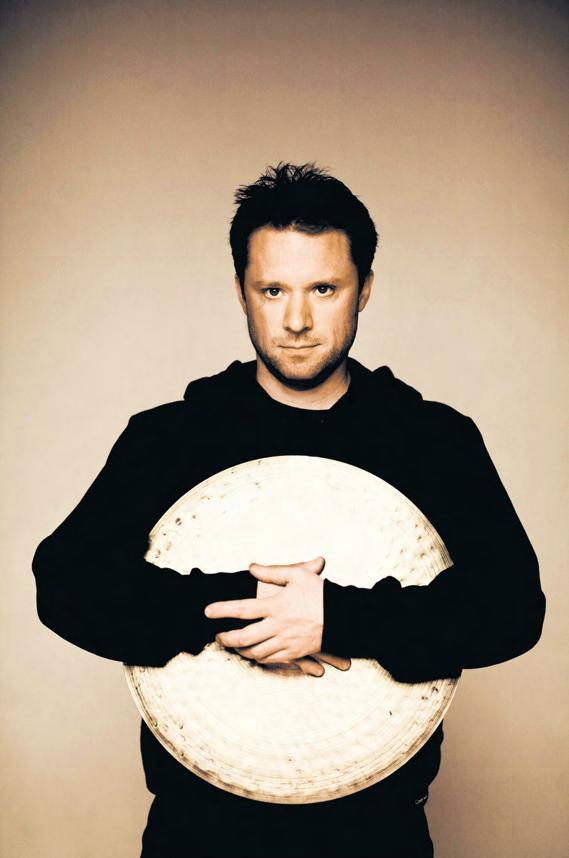
“If you speak to a lot of practitioners of either art form, we’re not interested in this distinction,” he continues. “For so many artists, music is music, simple as that, and music doesn’t know boundaries. And the links between these disciplines, which have been pigeonholed, are much stronger than the things that separate them.”
It’s the privilege of being an artist to dispel barriers when engaging in their practice so as not to be creatively boxed in, but it does not prevent the rise of a perception that a particular stratum of the musical ecosystem is closed off. Contemporary classical music can suffer the same accusations of barriers to entry for people from working-class and minority backgrounds as any other genre of music does today, but its image and history as inaccessible to pockets of society may, rightly or wrongly, also remain.
The Scottish Chamber Orchestra is acutely aware of this. Steve Reich + is the latest in a series of shows, put on in association with The Skinny, that seek to make classical performances appealing to everyone (91% of bookers to similar previous shows were new to the SCO). It’s a simple but effective concept: thoughtful choices for pieces with crossover appeal, smaller, more down-toearth rooms, affordable ticketing.
“The context is still somewhat that of an orchestral concert because it’s a chamber orchestra in performance, but the music that will be played will be very approachable and will light people’s fires. It’s very imaginative and mind-enhancing music,” says Currie. “It’s also ambitious – it’s many things. And these kinds of barriers that have been put up in some areas of the media, or in the minds of the
industry, they are an artificial construct. And this concert is a chance to prove that.”
Bringing onboard the Edinburgh-born Currie to direct, who has a long history with and love of the SCO, is a masterstroke. The repertoire he has built has been highly influenced by Reich – the Colin Currie Group has toured interpretations of his compositions, and Reich has written original work for Currie himself to perform – which is why the show will be a celebration of his famous pointillist rhythms, of forebears and contemporaries like Louis Andriessen, and of musical descendants like Julia Wolfe. “Steve is the sort of prophet of this school of
do and so many of the other musicians I’ve worked with have also been under his spell. He’s such a huge influence on new music generally,” explains Currie. “And because he’s someone I’m so close with, and the music means so much to me, and because this is my first outing conducting the SCO, I really wanted to go and make a statement with Steve’s music.”
The centrepiece of the show will be Reich’s Radio Rewrite, a kind of interpretation and abstraction of two Radiohead songs: Kid A’s Everything In Its Right Place, and In Rainbows’ Jigsaw Falling Into Place. “There’s a strong influence from the kind of harmonies [used in popular music], and also a rejection of slightly more austere areas of contemporary music which can feel a bit alienating. There’s nothing overly esoteric about this music – it has that warm embrace. It’s very catchy,” says Currie.
The components of the show seem to be doing heavy lifting when it comes to any perceived gap in accessibility. The SCO is leading on this as a historic cultural institution. “Since the orchestra began, the SCO has always looked for ways to ensure that as many people as possible can experience the joy of its live music-making, draw in new people, and make sure nobody feels that classical music isn’t for them,” says its Creative Learning Director Laura Baxter.
music in the States and Wolfe is the next generation down: very gritty, with a hard-edged groove, which comes directly out of the confidence that Steve gave a whole generation of composers to follow on from,” says Currie. It really is a showcase of his Reichian well of knowledge.
“Reich is such a central figure to everything I
The SCO is driving forward initiatives that take musical performances to lesser visited areas of the country, putting on more matinees, staging specialised shows for people with dementia and for youth and families. It’s also “halfway through a unique five-year community residency in Greater Craigmillar, where we are delivering cross-artform performances and workshops for audiences to explore their musical potential,” says Baxter.
“We take this responsibility seriously. We hope people find something to enjoy and be inspired by in every concert we present.”
Steve Reich + takes place at The Queen’s Hall, Edinburgh, 9 Nov; City Halls, Glasgow, 10 Nov sco.org.uk
“Steve Reich is such a central figure to everything I do and so many of the other musicians I’ve worked with”
Colin CurriePhoto: Emma Muldoon @SimplyEmma Colin Currie

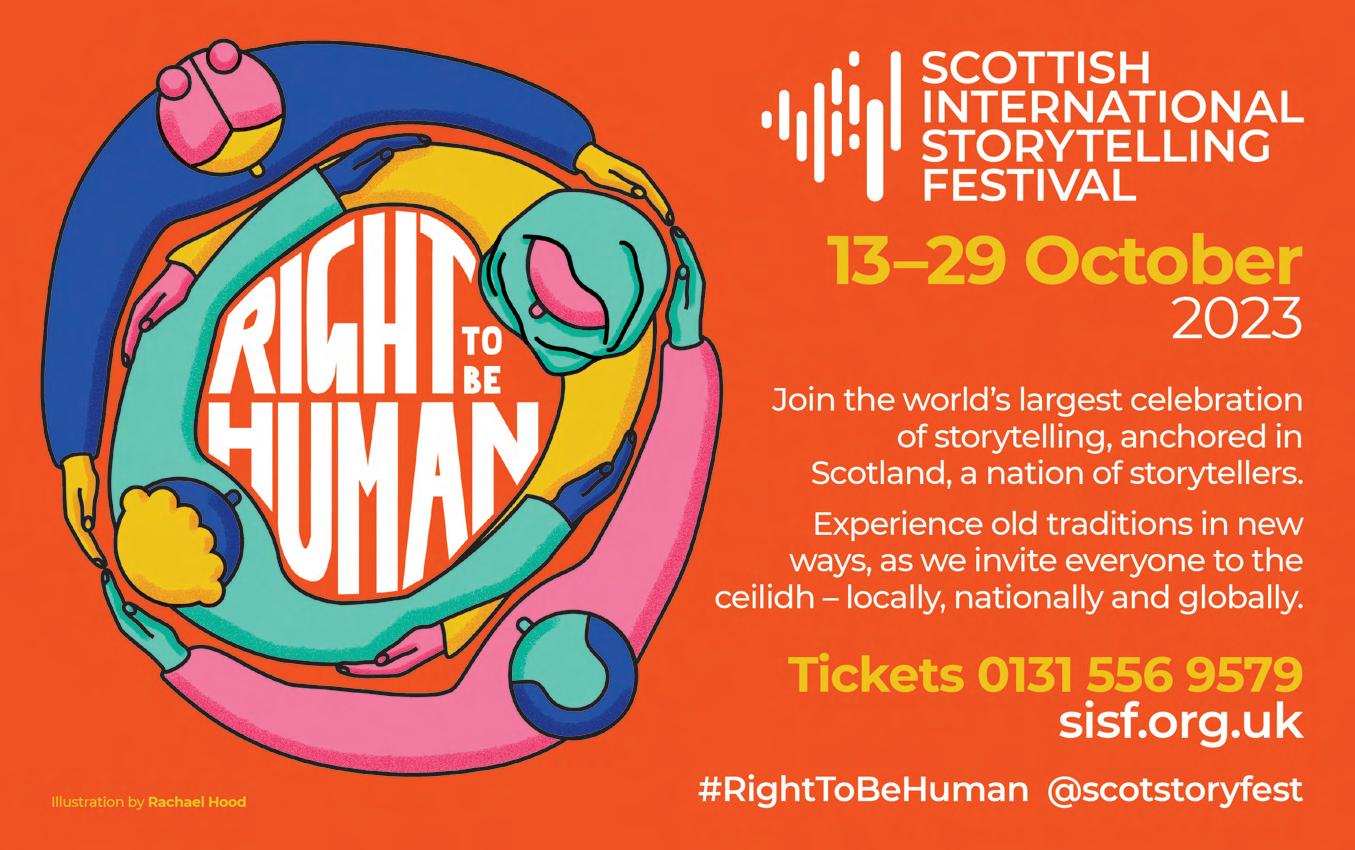
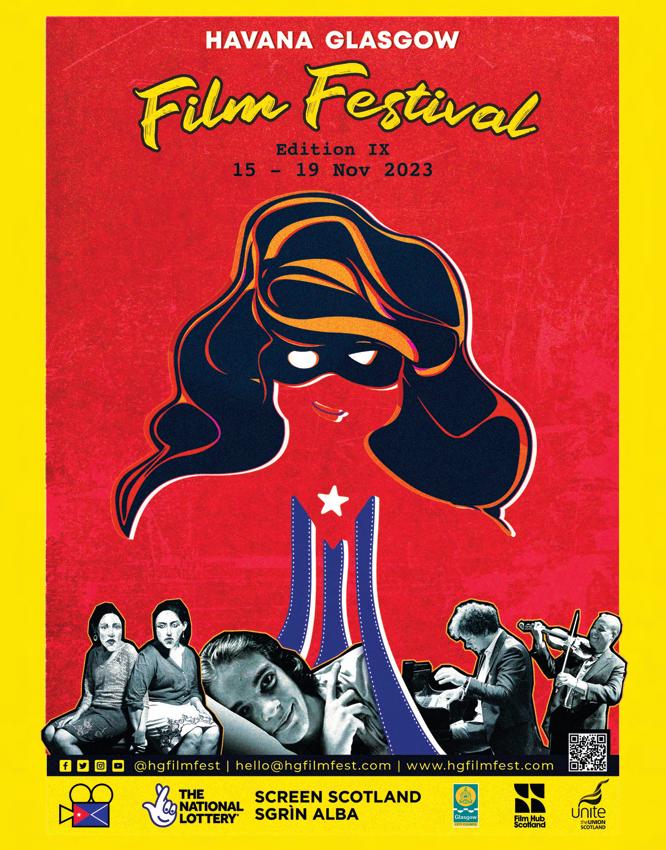
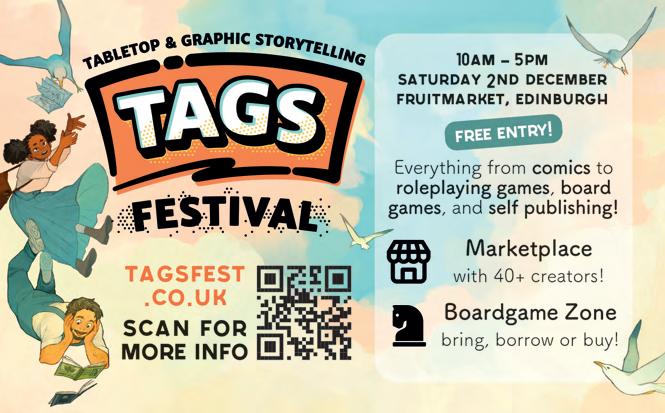

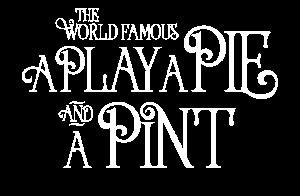

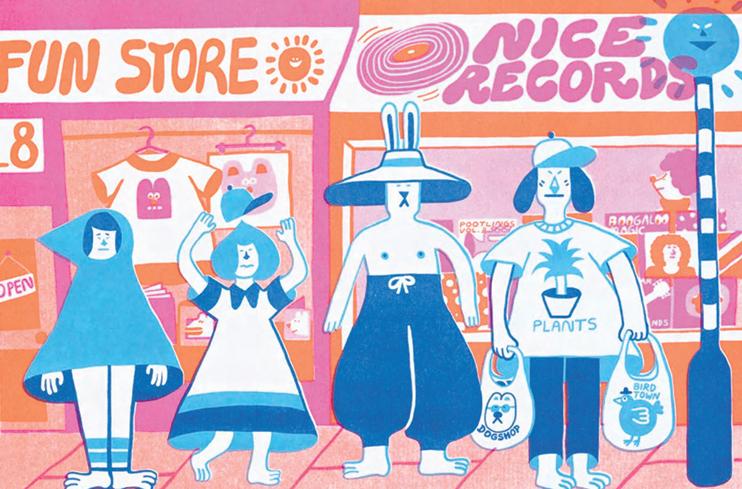

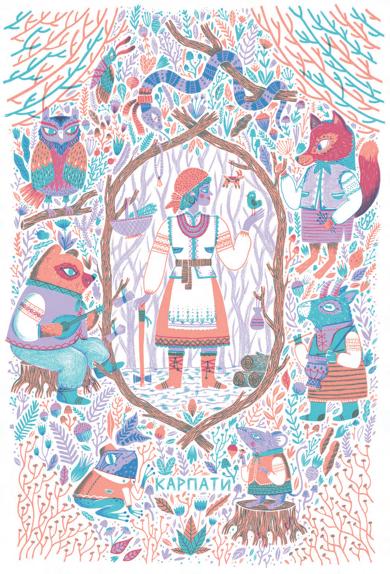
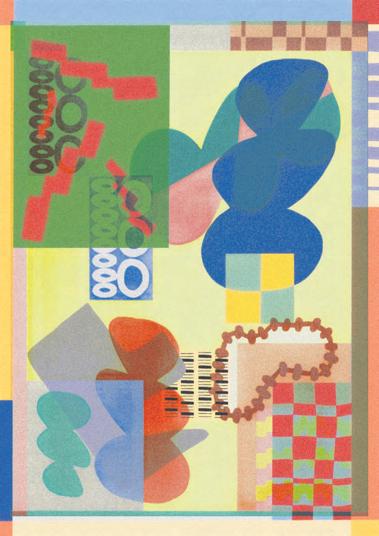

Glasgow Print Fair returns to the Lighthouse on Saturday 4 November with another exciting lineup of artists, printmakers and publications selling their wares throughout the day at the free-to-enter event. We've got a selection of the stallholders in this double sided pull-out poster featuring an adaptation of their commissioned work by Max Machen.
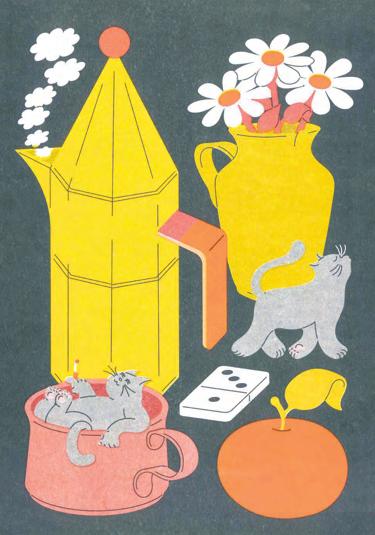
The Lighthouse, Glasgow, Sat 4 Nov, 10.30am-5pm
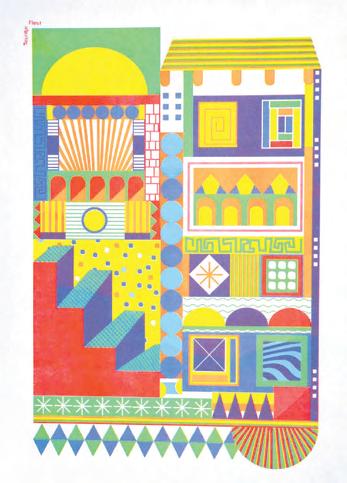

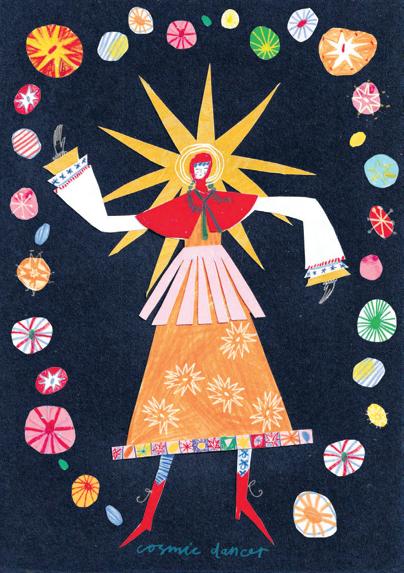


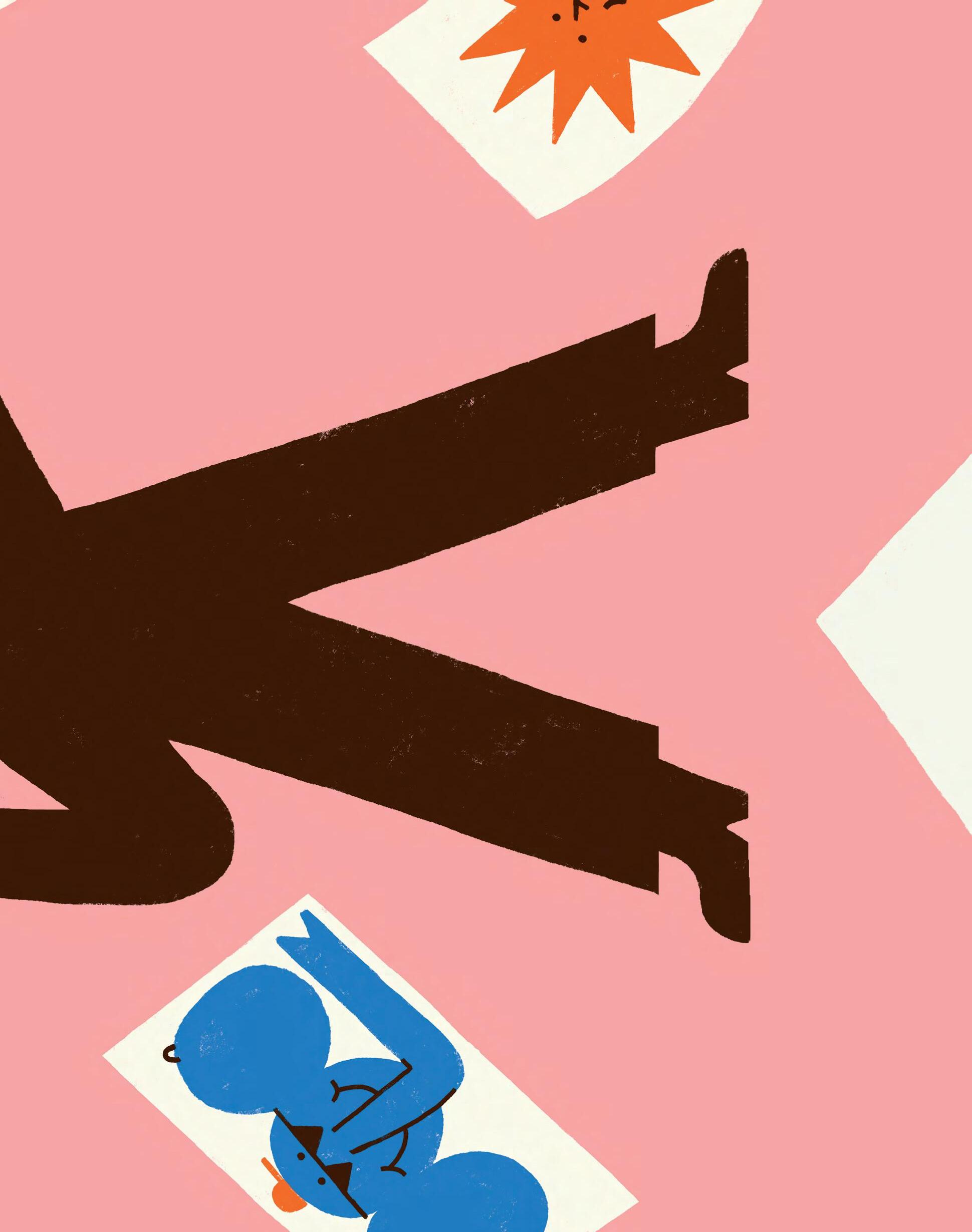



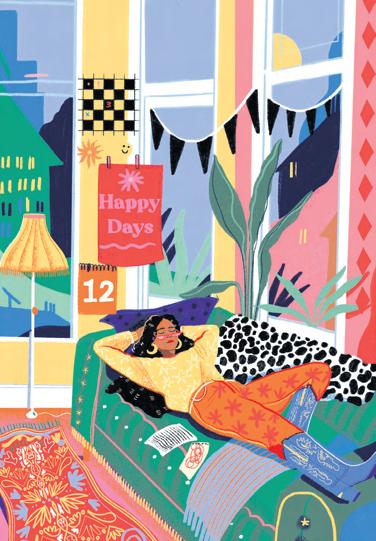
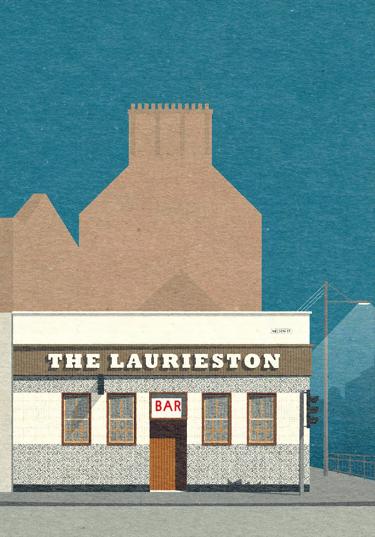


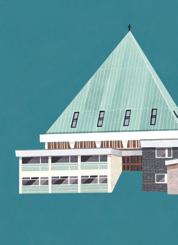

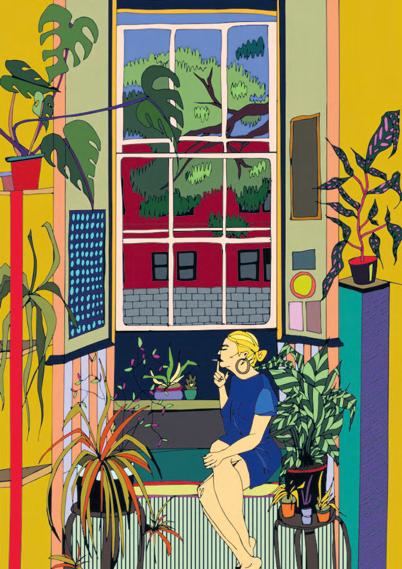
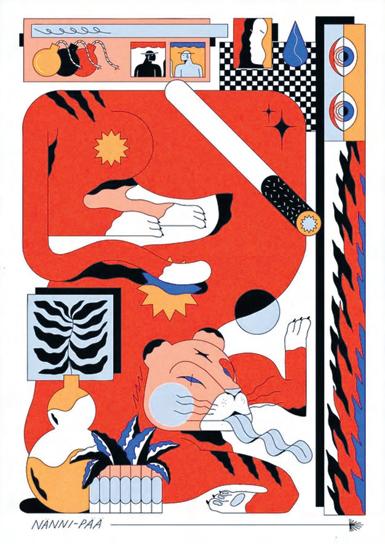




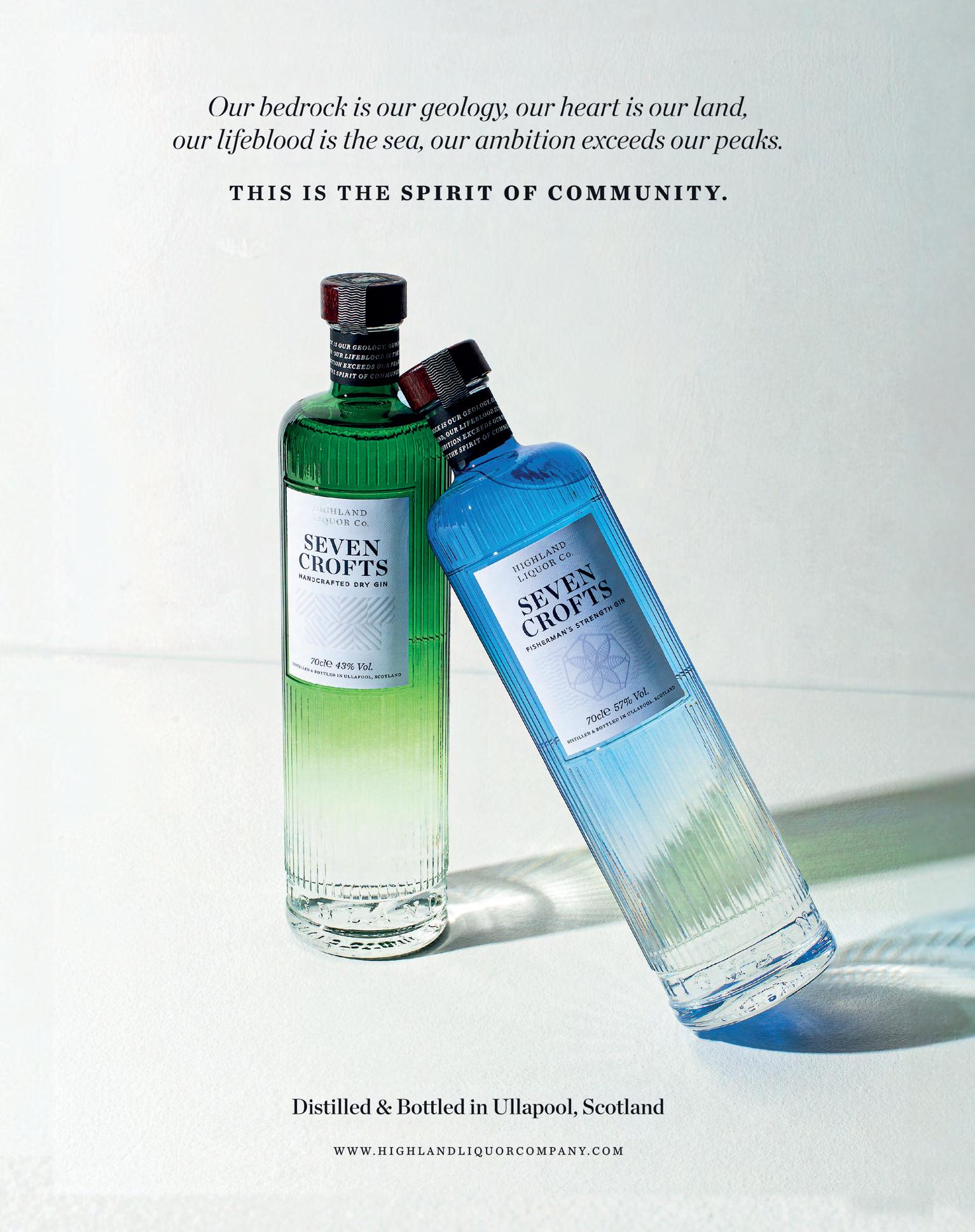
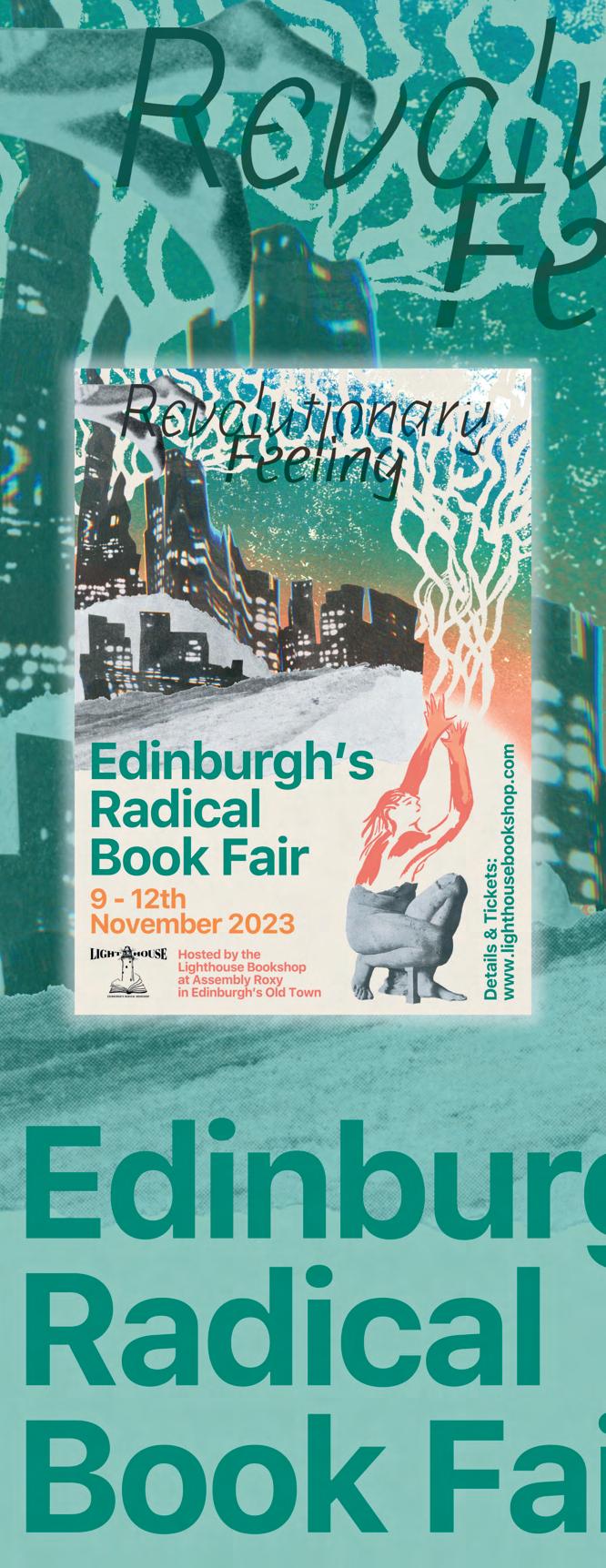
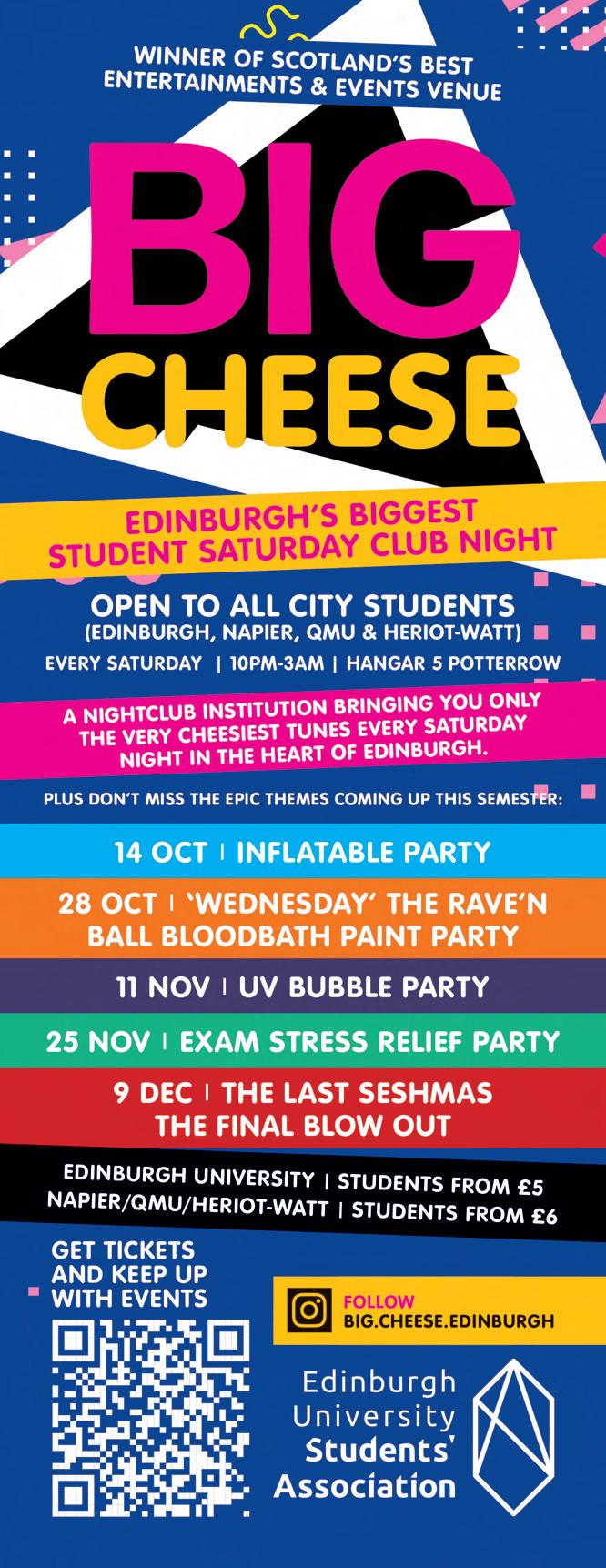
Propelled back into pop after a chance encounter with Charli XCX, Irish songwriter CMAT explains how she’s embracing her anger and inner Miranda gladly in latest album Crazymad, For Me
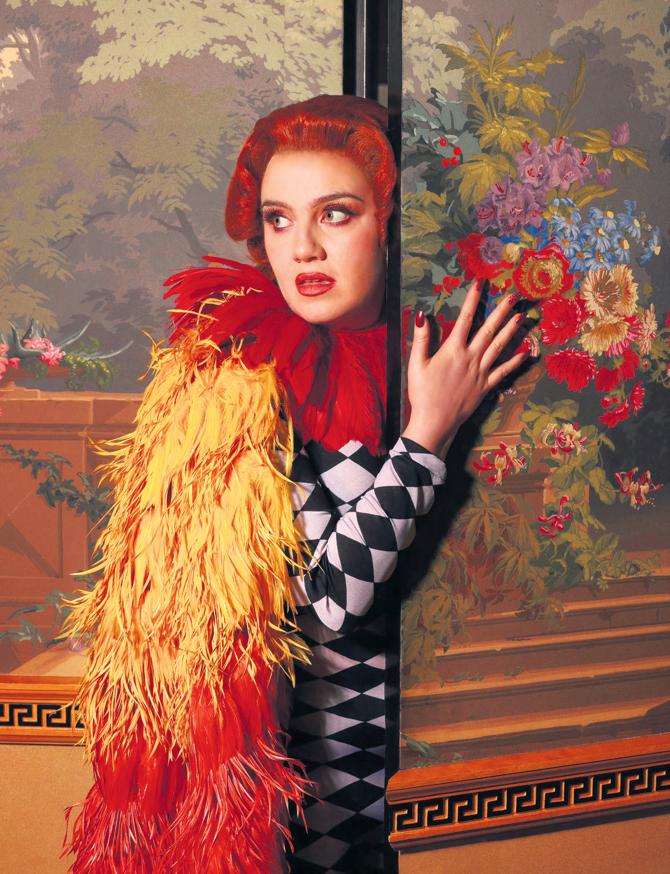
this time she’s fully embracing the two roles in question. But unlike some teenage sob story, Crazymad… taps into a sliding doors moment for the artist. Not only was Thompson’s previous long-term relationship a pivotal one during her first steps into adulthood, the setup was also deeply entwined in her creativity performing with her ex in a band. It was one particular moment that stopped the musician in her tracks forcing her to rethink her direction and identity. “I played a festival in Ireland and we got ta ed in the Facebook album. I went through the photos and I couldn’t find a picture of myself. Then someone’s like, ‘Yeah, you’re in there!’ I went back and looked again and I just didn’t recognise myself. I didn’t know what I looked like anymore.”
Words: Cheri Amour
dumbfounded. “On the Megabus back to Manchester, the entire journey I was like, ‘I have to break up with my boyfriend. I have to move back to Dublin. Charli XCX told me to!’” And so to Crazymad, For Me, a record that digs into that difficult relationship and all the domestic manipulation and heartache that went along with it. What started as an anonymous ode to forgiveness and acceptance quickly turned into something far more visceral. “The deeper I got into it, I got so angry. I’m still fucking angry about all that shit that went down.” The record not only feels necessary for Thompson as an artist but, consciously or not, much needed against the current backdrop of popular culture. In this new decade so far, women’s wrath is on the rise – everything from police brutality to domestic inequality.
“One day, I’m going to meet Cynthia Nixon,” begins Ciara Mary-Alice Thompson, who performs as country alt-pop artist CMAT. “I’ve been trying to figure out if I can meet her when I’m in New York. Think of the content for the album campaign!”
For over two decades now, Miranda Hobbes (played by Nixon) has represented the fiery redhead we all want fighting our corner. But she’s not the only one. Much like Hobbes’ well-constructed arguments in court (she’s a high-flying lawyer in Sex and the City), Thompson has a knack for presenting real-life issues on a rhinestone platter. Like the smart sincerity of her debut, If My Wife New I’d Be Dead, which saw the songwriter take the opportunity to reconnect inwardly: “I wanted to do something for myself that didn’t have anything to do with that [time].”
The time in question is during a romantic relationship she weathered aged 17 to 23 which she explores in follow-up Crazymad, For Me. Only
The encounter caused a “full mental flop” and Thompson swiftly took a step back from music-making. Thankfully, a chance encounter with a certain seismic pop star lured the Irish songwriter back out on the stage years later. “The true love of my life, you might say... I got to meet Charli XCX [at] a focus group for fans.” While the others in the group were keenly singing the praises of the unreleased tracks, Thompson leant a more cautious ear. “I was like, ‘The drop from the fourth beat of the second bar is too a ressive. It’s a bit cheesy. Maybe if you padded it with a bit more synth…’ I was being extremely technical about it.” Her nous for a pop hook clearly caught Charli XCX’s eye as she took Thompson aside after to quiz her about her songwriting and future direction. “She’s like, ‘What music are you doing right now? Obviously, you’re a musician so what are you working on?’” Admitting she’d put her music on the back-burner, Thompson was astounded at the rebuke she received from one of pop’s most beloved flag bearers.
“She was so specific in her criticisms and advice. It was freaky,” she recalls, clearly
Just like Miranda Hobbes side-stepping into a human rights internship in the reboot of SATC, And Just Like That..., our Irish redhead admits she’s still exploring how she expresses herself and her opinions. “Anger is very important but it really needs to be tempered,” she reasons. “I was really politically and socially active when I was a teenager. I was 18 and I had read The Communist Manifesto once. [But] I am a lot more careful where I place my anger now.” She’s not the only one. Rage rooms are on the rise across the country, while the mental health project Women Are Mad hosts Screams In the Park to connect with our repressed rage.
But for Thompson, it’s about taking stock to find the right way to effect real change. “We need a beat before we can go back into doing the real work. Female rage is important. And it’s definitely something that I’m well equipped and experienced in. But women also need some relaxation. We need some kindness.” With music as her outlet, Thompson is letting the toxicity go and getting on with it, and Crazymad, For Me is just the permission slip we all need to do the same.
Crazymad, For Me is released on 13 Oct via AWAL; CMAT plays Barrowlands, Glasgow, 24 Nov
cmatbaby.com
“On the Megabus back to Manchester, I was like, ‘I have to break up with my boyfriend... Charli XCX told me to!’”
Ciara Mary-Alice ThompsonPhoto: Sarah Doyle
Sekai Machache’s immersive installation at Mount Stuart draws our attention to who was, and who is, absent in the archive – a reverent call to reinstate and to invoke those who have been silenced
Words: Harvey Dimond
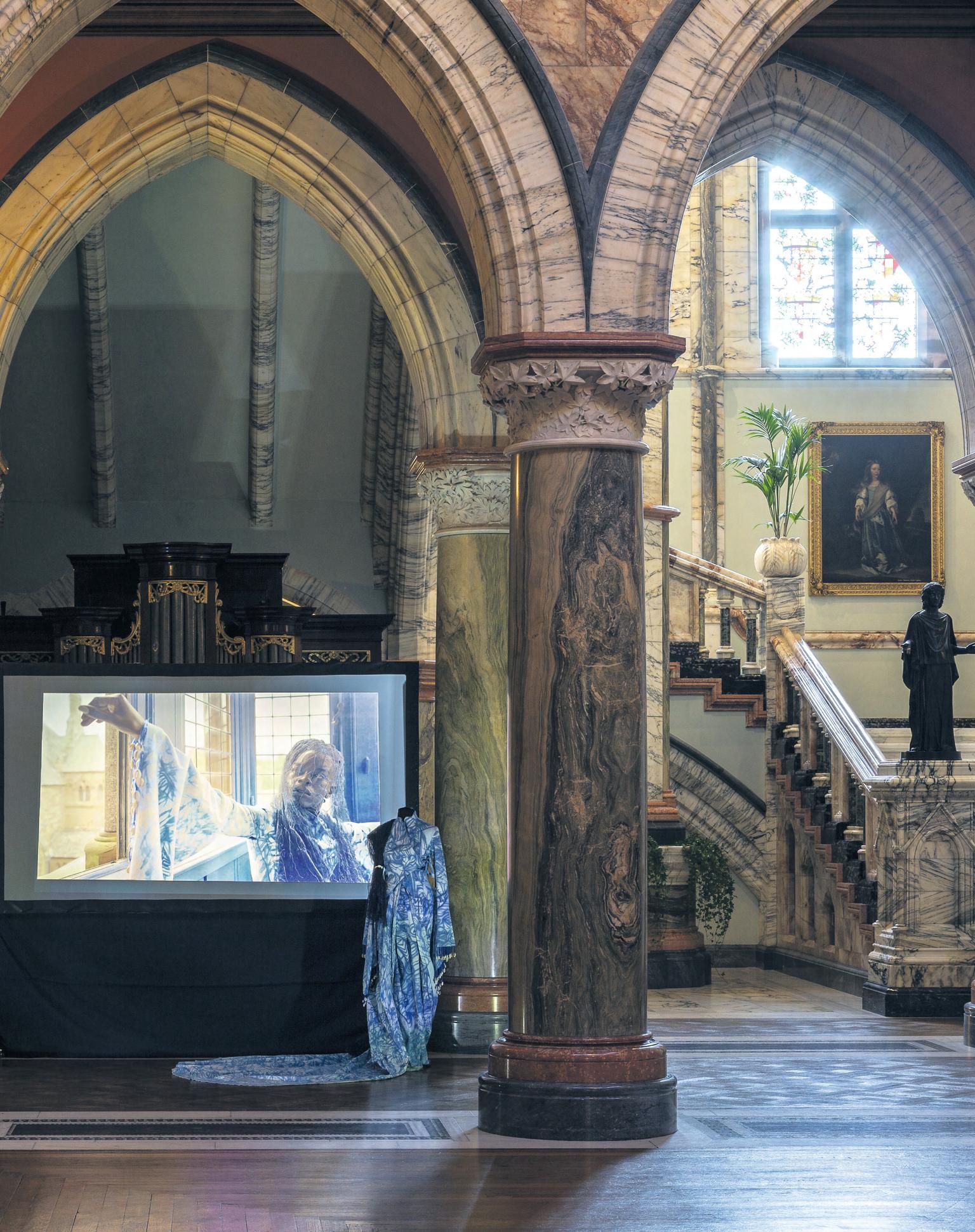 Photo: Keith Hunter
The Banyan Tree featuring Sekai Machache
Photo: Keith Hunter
The Banyan Tree featuring Sekai Machache
Entering Mount Stuart on the Isle of Bute for the first time is a deeply ecstatic experience: its decadence and extravagance needs to be seen to be believed. This autumn, Sekai Machache occupies this cavernous house with her beguiling video installation Svikiro. Svikiro is a Shona word that refers to one who mediates between the spiritual and human world, who has the power to perform healing rituals (often through creative means such as dance and music) and to receive visions from the ancestral realm. Machache uses the house itself, as well as its grounds and the island’s beaches, to spectacular visual advantage. Going further than challenging and contesting the problematic histories of the house and its origins, the artist draws on the spiritual, mythological and astrological details that are so embedded in the architecture and interior of the house. Every aspect of the film; the cinematographic attention to detail, the soundtrack, the intricately painted and embellished costumes, echoes the hyper-ornate nature of Mount Stuart itself. Machache describes herself as “somebody who looks a lot at symbolism, especially occult and esoteric symbolism”, which the house has in abundance, thanks to the Third Marquess of Bute’s penchant for the religious and the spiritual. “It’s so embedded with that to a point where I was like, right, what is going on here?”, she says. “What was the inspiration? How did it get to be like this? In the tours and the research that we did at the house, I learned a lot about the Third Marquess of Bute and all of his interests. He was interested in what can only be described as everything – and so the house has everything.”
The house lies at the centre of 600 acres of grounds, densely packed with flora from all over the world. Its effervescent forest glades become the setting for one of several stunning performances titled Mutambi, choreographed and performed by Mele Broomes. One of the Marquess’s predecessors, the 3rd Earl of Bute, was fascinated by botany, even helping to fund the creation of Kew Gardens in London. During the development process, the artist was able to access Mount Stuart’s botanical drawings collection, which caught her attention: “it became a conversation around colonialism and botany, all these seeds coming from all around the world, creating these very densely packed grounds.” An often neglected aspect of colonialism was the categorisation of plants and animals based on European ‘scientific’ theory. Indigenous knowledge was used by the imperialists to their own advantage: they claimed this knowledge as their own, using ‘science’ as a way of justifying the extraction

of natural resources and the removal of indigenous people from their land.
Seeds take on a particularly symbolic role in Svikiro – primarily in a beautifully intimate performance with friend and artist Alberta Whittle in one of the house’s bedrooms, titled Present Existence. The idea for the performance had been playing on Machache’s mind for several years, following a dream in which the words the sisterhood of the sacred leaves became ingrained in her mind: “I thought it was sort of like a kernel of information, a seed to be sown for something in the future. I was always like, when is this going to come up?” Serendipitously, during a trip to Brazil, she met the Sisterhood of the Good Death, a collective of descendants of enslaved Afro-Brazilian women who practice Candomblé, a creolised religion which is grounded in Yoruba belief systems. Further seeds were sown for the artist during this trip to Brazil: “I was learning a lot about Afro-Brazilian experiences and through that learning about Afro-Colombian experiences. One of the features of the AfroColombian experience of the middle passage is that people would sew seeds and pieces of gold into their children’s or loved one’s hair, with this idea that once they get to the other side, they would be able to sow these seeds and grow their own food. Or if they were planning an escape, they might braid seeds or rice into their hair. Then, when they made their escape, they would be able to actually start their own little plot from just the seeds that were stored in their own head. I thought that was, as an actual practice, such an incredibly subtle and beautiful form of resistance.”
In another scene, Eyve Madyise performs a captivating call and response song, performed and co-written with Trisha Goddard. As she sings, we see the artist, adorned in an azure-painted dress (created for her 2021 work The Divine Sky) glide up the staircase, inviting us to join her in exploring the other facets of her film througout the grandiose house. It is this close attention to detail that keeps the viewer enthralled, so that the 45 minute runtime seems to elapse in mere moments. The constellation of recorded performances by Broomes, Whittle, Madyise and Goddard spread throughout the house are a welcome sight for those who are eager to see more of the numerous elements that have forged this film work, including bespoke costumes, jewellery and props from the performances. In the family bedroom, there is a copy of In the Wake: On Blackness & Being by Christina Sharpe. This book, along with Saidiya Hartman’s Lose Your Mother and Dionne Brand’s The Blue Clerk have been particularly influential on the artist’s thinking during the conceptualisation of Svikiro. Sharpe’s concept of ‘wake work’ –ways of both resisting and creating against antiBlack violence, containment and incarceration –has been influential on Machache’s working process. The poetic monologue – with its themes of bondage, severing and longing – feels particularly indebted to Sharpe, as does the brooding, almost-oceanic gestural performance also performed by Alberta Whittle. “[Sharpe’s book] is very, very densely packed with a lot of traumatic content. So I felt like in order to be able to engage with it, I needed to look at it more in a bird’s eye view than at the very minutia of what she’s saying – and what I felt was just the concept of ‘wake work’ itself and this idea of us existing as African diasporic people perpetually in the wake,
perpetually trapped inside the hold. This concept of non-linear cyclical time that is expressed and experienced through our lived experiences, but also the epigenetic memory, the visualisation, and the imaginary.”
The soundtrack that attends to the film is formed of delicate, silky harp and mbira flourishes, gentle and tinkling like a mountain stream – but, at times, it becomes oceanic, vast, epic (particularly when it accompanies the gestural performance performed by Whittle). The approach to filmmaking is just as expansive – it feels fluid and embodied, partially a result of a decision to collaborate with a team of three videographers who hadn’t previously worked together. Machache emphasises that the work was very much a collaborative effort: “I want to really signpost that I did not do all of that work myself. There were 15 people on my team, all of them incredible. We’ve got a space in the exhibition that we’ve curated with behind-thescenes film and pieces that represent everyone’s work in some capacity. So I want to make sure that all of the team’s work is really, really considered because it’s my work and it’s my conceptualisation, but I could not have done it without everyone that was involved.”
Excitingly, during the making of Svikiro, it was announced that Machache had been one of five artists selected to represent Zimbabwe at the 2024 Venice Biennale. The selection was a very emotional moment for the artist: “It was all very quick and just surreal actually… I was supposed to be on a Zoom call to sit in the meeting when they made the announcement, and I somehow wasn’t able to be in the meeting, and I’m so glad I wasn’t, because the moment that I found out I just burst into tears. I think when you’re recognised at home as a diasporic person, nevermind just for being an artist… It’s huge. I’ve been making work that has engaged with so many different ideas from different cultures, but in the last few years I’ve really engaged further and deeper into Shona spiritual concepts and practices. Although I’m not in Zimbabwe, not spending my day-to-day there, I’m thinking about my past and my ancestral knowledge that lives inside my body and in my DNA: I’m engaging with it in a way that maybe I wouldn’t be able to if I was actually living there. So I’m quite honoured to have been invited to make work to elucidate some of that for myself and for other people.”

As she prepares to open Crafted Selves: The Unfinished Conversation at St Andrews Museum, The Skinny meets curator Cat Dunn to talk about her new touring exhibition
Words: Harvey Dimond
Cat Dunn is busy preparing for possibly her most ambitious curatorial project yet. The Glasgow-based artist turned curator has been working on developing a touring show called Crafted Selves: The Unfinished Conversation with the support of Fife Contemporary. The group exhibition features 13 Scotland-based artists, including Sekai Machache, Ashanti Harris, Rae-Yen Song and Tilda Williams-Kelly, whose works will be presented through the prism of dual identities. The show opens on 14 October at St Andrews Museum, before touring to Kirkcaldy Galleries and another location (to be confirmed) in 2024.
Crafted Selves… works from the familiar but frustrating question that people of colour are consistently posed – ‘where are you really from?’ For the curator, she is much more interested in centring dual identity on the question ‘Who are you?’ rather than ‘Where are you from?’. The exhibition therefore reaches further, past questions of nationality and ethnic origin, exploring how duality also refers to disability, gender identity and sexuality. Dunn wanted to communicate both the “frustration and the sadness” of navigating dual identities – but also the joys. She professes that “we all have multiple identities – whether that be mother, daughter, sister, wife…” but that claiming dual identity comes with higher stakes for those whose identities are politicised. She says, “people often only see the ideology of ‘othered’” but with this exhibition, she wanted to “play with the nuances of that and really challenge the politics of that.” The exhibition will feature a looping audio work made up of excerpts of the artists talking about their lived experiences of existing with dual identities, drawing these constellations of voices together.
Crucially, Dunn understands her curatorial process as being centred on ‘co-creation’ and a desire to work with people rather than objects: “People sometimes tell me that you can only curate objects, but I don’t believe that. I always say that I curate people and stories, rather than objects. Using indigenous cultures is a very important part of my curatorial practice because it speaks to that curation of people and stories that allows us to celebrate every aspect of an artist, not just the artworks themselves.” This humancentred, compassionate working ethos is evident in the array of curatorial projects she has undertaken while working towards a PhD at The University of Dundee. These exhibitions work with early-career and emerging artists of colour based in Scotland – for whom the road to recognition is longer and more complex than for their white contemporaries. Dunn has become an important
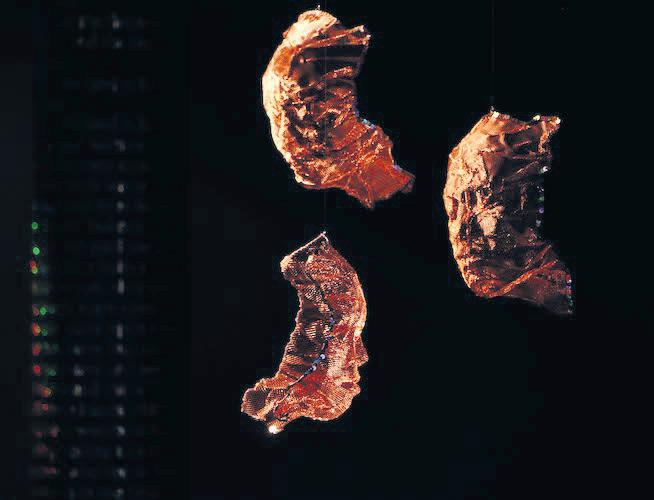
advocate for these artists, many of whom have become part of her ‘family unit’, which grows with every exhibition project: “With every exhibition I do, those artists are the first people I reach out to because I know they’re going to deliver. You’ve got that family unit that you always reach for and you’re just watching each individual person continue to rise, and you’re their bi est cheerleader and their bi est champion. Then you pull in new artists… and then they jump onto the train, and then with the next exhibition, I contact the same people again, and then I pull in new people. So the train keeps moving, and we all keep growing and we all keep levelling up.”
Having largely worked in Glasgow and Edinburgh previously, it has been a new experience for Dunn to work with semi-rural communities, where people’s daily needs and priorities are often different to those of urban dwellers, with issues such as isolation and limited infrastructure to contend with. She has taken this in her stride, and has spent an incredible amount of time thoughtfully undertaking in-depth research on the histories and demographics of each area. “Each place has its own distinct history,” Dunn says, “so I
went about asking whether each place perhaps has links to the plantocracy. Are there links here to enslaved people? I start all of my research from this aspect.” At each location, the question always at the back of her mind has been: who is feeling that they’re not being seen?
As part of the exhibition, audiences can catch the Scottish premiere of Alberta Whittle’s film The Axe Forgets, But The Tree Remembers which will be screened at The Byre Theatre in St Andrews on 17 January. The film weaves together the experiences of the artist’s own family, stories sourced from Hackney Archives and conversations with the borough’s Windrush-generation residents and their descendants, including Janice Knight, whose legal battle for justice for the police brutality experienced by her family continues to this day. Whittle’s film highlights the uncertainty and precarity experienced by Black communities then and now.
Crafted Selves: The Unfinished Conversation, St Andrews Museum, 14 Oct– 24 Feb, Wed-Sat 10.30am-4pm, then touring to Kirkcaldy Galleries, 23 Mar-12 May, open daily, free
In anticipation of its first full run, we sit down with Leith Comedy Festival's director Rosalind Romer to chat about community, accessibility, and comedy
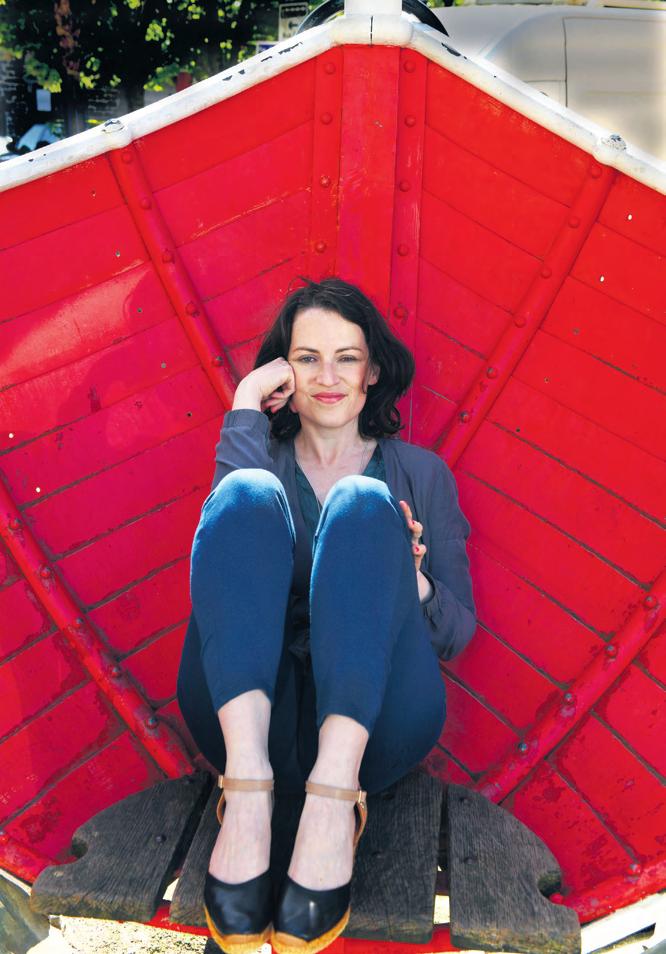
With more than 20 years of experience in the UK comedy industry – managing tours for Jimmy Carr, judging the BBC New Comedy Award, and running her own comedy production company, Punchline – bringing a new comedy festival to life feels like a natural next step for Rosalind Romer. “It was just an idea that I followed to its natural conclusion,” says Romer. She had the slow, steady realisation that Leith might be the perfect place to blend an array of strong local talent with the community’s own natural sense of humour. Her labour of love, the inaugural Leith Comedy Festival, runs from 6-8 October.
As a ten year resident of Leith, Romer has planned a weekend that avoids the pitfalls of bi er, more traditional festivals. LCF “isn’t overrunning Leith,” she assures; “locals would have something to say about it if [it] did”. Rather than attracting acts from further afield, Leith Comedy Festival showcases local talent, partnering with local businesses and institutions to make it all happen. Events will take place throughout the area, starting in Leith Arches and ending in the iconic Biscuit Factory. The festival will be trialling a paywhat-you-can model in its first year, as well as providing the option to donate to the local community fund. By focusing on community and accessibility, Romer has brought the magic of large-scale festivals to Leith’s doorstep, without fighting people for pavement space and a mysterious black hole of phone signal.
Leith Comedy Festival is the result of countless conversations with locals, creatives, and local creatives; conversations which have built up to a programme with something for every sense of humour. “Leith has a different way of thinking, independent thinking”— an outlook which challenged Romer to look beyond the ‘traditional’ scope of what comedy and a comedy festival can look like. Improv workshops, laughter yoga, storytelling and comedy quizzes, the programme for
this year certainly aims to run the gamut of what it means to be funny. Inspired by the pandemic, LCF includes a comedy walking tour of Leith led by a guide from Invisible Cities: a social enterprise that trains people who have experienced homelessness
to be tour guides of their own cities. There’s also Lassies of Leith, a filmed version of an Invisible Cities' walking tour celebrating the area’s funny women, available online for those keen to participate from home. Not forgetting families either, there’s a performance from Soup Group!, infectiously silly clowning for all ages from duo Phil O’Shea and James McIntosh.
Romer hopes that Leith Comedy Festival will help bring out the distinct culture of Leith. “Everyone thinks their own place is funniest, but I think it’s true about Leith.” Between anecdotes about pumas in pubs, stories about the Queen of Leith, and recollections of reading Trainspotting to a baby, she might just be right. LCF goes above and beyond in highlighting this – especially with the introduction of Leith Laughs: An Evening of Funny Stories Led by Fiona Herbert and MC’d by Leith-based Open Comedy host Giulia Galastro, Leith Laughs will hand the mic over to Leithers themselves, giving ample opportunity to share anecdotes about living in the area. Scheduled for Saturday night, it will be “like Leithers are headlining the festival”.
Not one to stay still, LCF is also preparing itself for future events after its first festival outing, with something exciting in the community planned for November. Romer’s ambition is to continue engaging with the community of Leith across the other eleven months of the year, building a following for the festival year-round. Trying a format as new as this one will come with ups and downs, but, as with most comedy, it’s the thrill of trying new things that keeps audiences and comedians coming back. “It’s experimental to a large degree,” Romer admits, “but it’s like a comedian telling a joke, you don’t know how it lands until you have the audience.”
Leith Comedy Festival, 6-8 Oct, various venues
Full schedule and tickets at leithcomedyfest.com
“Everyone thinks their own place is funniest, but I think it’s true about Leith”Photo: Louis DeCarlo Rosalind Romer
BlackBerry essays the incredible rise and then the spectacular demise of the world’s first smartphone. BlackBerry writer, director and star Matt Johnson tells us why he identifies with these tech bro losers and wanted to tell their story
Words: Jamie Dunn
In The Social Network and Steve Jobs – both written by Aaron Sorkin – Silicon Valley success stories became baroque moral tragedies, with the tech bros behind Facebook and Microsoft depicted as deities; flawed deities, but deities nonetheless. BlackBerry, the crackerjack biopic from Canadian filmmaker Matt Johnson, could hardly be different.
In hilarious fashion, Johnson chronicles the rise and sharp decline of the world’s first smartphone. Jay Baruchel plays the naive inventor of the BlackBerry, Mike Lazaridis. It’s Always Sunny in Philadelphia’s Glenn Howerton is fantastic as Jim Balsillie, the shark-like businessman who helped Lazaridis sell BlackBerry to the world. And Johnson himself plays Doug Fregin, the vest-wearing tech bro who started the company with Lazaridis but would rather have a good time than be in business.
The film is a delight. Unlike Sorkin, Johnson brings these tech giants down to a human level, telling a rollicking story full of wit and pathos. He clearly has a lot of affection for these lovable dorks from Waterloo, Canada, who had a dream and made it come true – for a short time at least. While Johnson was visiting Scotland to present BlackBerry at Glasgow Film Festival, we sat down with him to discuss the film.
The Skinny: There’s something deeply unsexy about the BlackBerry. It was this utilitarian device that just made people work all the time… Matt Johnson: That’s completely true. There was nothing cool about it, which is, in my opinion, what was so shocking about the fact that it took off. It was like our culture wanted a smartphone so badly that they were willing to look stupid to use it.
Exactly what you just said, believe it or not. I thought, “Oh, if we make a movie about BlackBerry, it will at once be broadly appealing, where people will know what it is. But it also will, on its face, seem as though the movie will be so boring, and so standard, and by the book, that when people actually get to the cinema and watch it, they’ll be going, ‘Well, what the hell is this?’”
Because my cinematic style is the opposite of what a standard biopic is? I don’t want to say my style is anti-boring, because that’s too self-congratulatory, but what I mean is that it is in no way normal. And I thought, “If I could combine that style with something extremely bland on its face, that could make for an interesting experience.” These people are not celebrities. Mike, Jim and
Doug are all very low stakes, very Canadian. You’d never think, “Oh, these people deserve a movie.” All my films are trying to fool the audience into caring more about watching it than they thought they would.
It’s instructive to compare BlackBerry to films like The Social Network or Steve Jobs, which are very slick – pretentious, even. Your film is much more grounded.
I think that might be its Canadian-ness. It’s funny, if you put the Steve Jobs biography in my hands, I’d think, “I could never even approach this guy because he’s been lionised.” These tech guys are icons in a way, and that creates a distance between them and me. I would never even feel as though I had the right to tell their story. Whereas with these guys, I thought, “Oh, these are just Canadian kids trying to do something interesting and they had no idea what they were doing.” That very much echoes my youth trying to make movies with my friends, where you make something, it’s
slightly successful, and then all your friendships change. I was like, “Oh, this is exactly what happened with me and my friends.”
It would be remiss not to mention the cast, and in particular Glenn Howerton, who’s fantastic as this hypercapitalist, Gordon Gekko-like figure, Jim Balsillie.
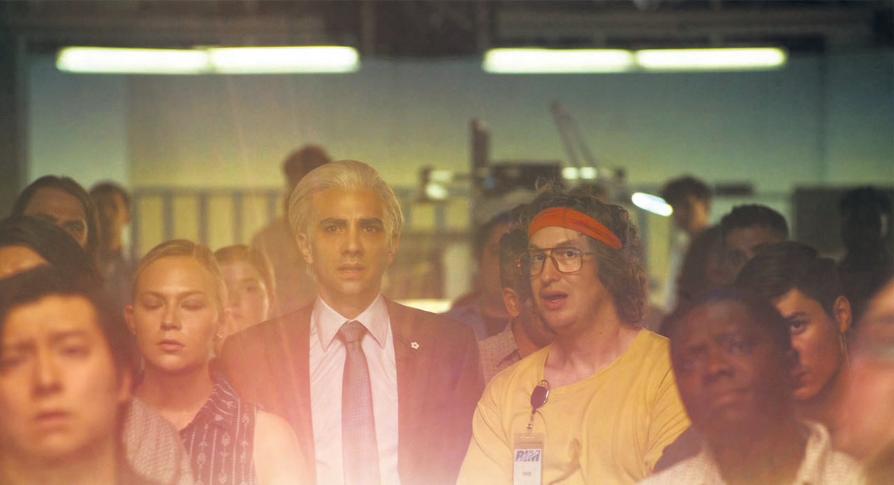
He was perfect. It’s like the character was written for him. It was his idea to shave his head and go as far with it as he did. I did very little directing with Glenn – he just came and did his scenes. He knew everything. He was extremely serious. I think a lot of people don’t realise that Glenn began as a Juilliard actor. He was never intending to be a comedian. His career has taken him to a place where people think of him strictly as a comedy actor, but, in my opinion, he’s way more suited for drama. He takes his work so seriously, like no mistakes, new ideas every single time; he’s the most focused, most dedicated guy on set. It was unbelievable to watch. I have a feeling that he’s gonna have a long dramatic career after this – at least I’m hoping so.
But he is also hilarious in the film. He can’t not be funny. On set, he was like, “Well, I’m not doing this funny at all.” And I’m like, “You don’t understand, Glenn. This is the funniest shit I’ve ever seen in my life.” Like him losing it, him becoming so desperate, the decisions he makes. Even though he’s playing it all for drama, I think he’s the funniest guy in the movie.
BlackBerry is released 6 Oct by National Amusements
“All my films are trying to fool the audience into caring more about watching it than they thought they would”
Matt Johnson
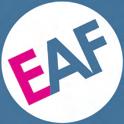
Edinburgh Art Fair is back with another dynamic programme of art, music, talks and workshops, alongside a carefully considered lineup of food and drinks featuring some truly spectacular art puns
Words by: The SkinnyThis month Edinburgh Art Fair returns to the O2 Academy with a three day creative extravaganza in the former Corn Exchange. Featuring hundreds of visual artists local and international, the fair also hosts EAF LIVE, a programme of live music,artist Q&As, family-friendly creative workshops, bars and street food vendors, including the inimitably-named ‘The Salvador Deli’. Founded on the ethos that art should be for everyone, the fair o ers the opportunity to buy work by household names but also maybe fall in love with pieces from self-taught, outsider artists and emerging talent. Internationally-renowned artists will rub shoulders with recent graduates, with galleries arriving in the capital from throughout the UK and Ireland, Europe, South America, and the Far East, with some travelling from as far a eld as South Korea, Japan, and Peru.
Exhibitors to look out for this year include Galerie Barroue Planquart (France), Diverso Art (Peru), Anatoliy Anshin Photography ( Japan), Samseyoung Art Gallery and Museum ( South Korea), Cube Gallery (London), King sher Art (Chipping Norton), Gallery 545 (Belfast), Patriothall Collective (Edinburgh), Castlegate House Gallery (Cumbria), The Art Agency ( Surrey), Synergy Fine Art (London), Staithes Studios (Yorkshire), CCA Galleries International ( Jersey), and Edinburgh’s Robertson Fine Art.
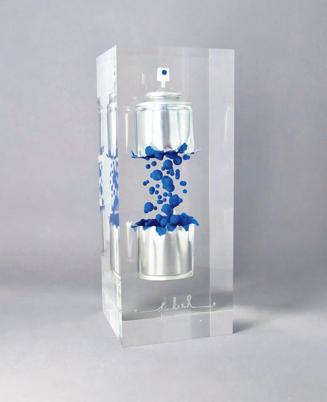
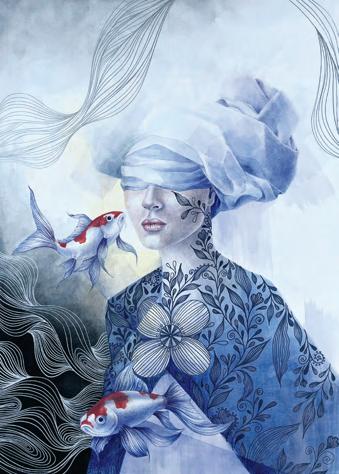
The workshop programme includes drop-in sessions for kids with materials and creative inspiration provided (free of charge) by Edinburgh Art Shop’s talented sta . Children’s author Helen Watson will appear on Sunday, with a reading from her latest book Oor Haggis and fun activities around Scotland’s wild creatures. On the Friday, artist Harti will be o ering an insight into the creative process with a live Q&A.
The live music programme looks set to be buzzing too. There’ll be acoustic sets from a range of musicians in the afternoons, while in the evenings the Live Lounge will transform into a live music venue, with ve acts performing on each of the Friday and Saturday nights. Look out for The Dana Dixon Band, Ant Thomaz, and winner of The Voice UK, Stevie McCrorie. To nd out more (and book your tickets), head to artedinburgh.com.
Edinburgh Art Fair, O2 Academy Edinburgh, 17-19 Nov, £7.50-45

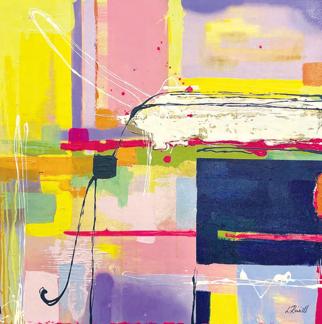
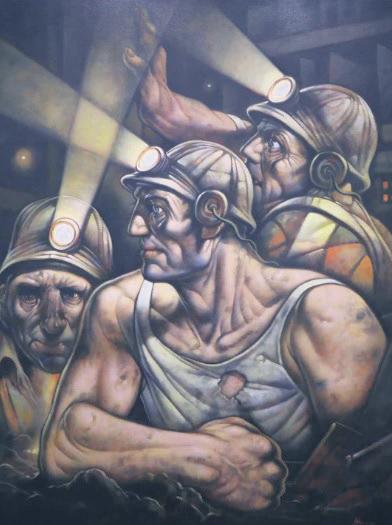


Ahead of releasing their latest EP, The Masochist, we catch up with Glasgow outfit Lloyd’s House to find out more
Words: Jack Faulds
Glasgow non-conformists Lloyd’s House are opening all their doors, windows and cat-flaps to the public with The Masochist, their first full body of work as a five-piece.
Frontman Lloyd Ledingham’s enchanting songwriting is given the TLC it deserves by top-dog producer Chris McCrory and brought to life by the whimsical synth of Reece Robertson, the buoyant bass of Aaron Bisset, the twangy guitar and twee backing vocals of Eilidh O’Brien and the impassioned drums of Sean Mitchell. We catch up with the band at their rehearsal space to dissect the manic, mystical world of their new EP.
The Lloyd’s House family has grown a lot from its days as a one-man operation. What has it been like getting to this point?
Lloyd Ledingham: Lloyd’s House started out of lockdown, when there was no possibility of having a band. When things started opening up again, I needed a band to play gigs. Now it’s more of a joint effort, I feel like the music is so much better in terms of what we can do – live and [in] recordings.
Reece Robertson: We’ve all got our own little bit of ourselves in the music now.
Aaron Bisset: When we were starting out as a full band most of my bass parts came from, “oh, what are you doing on guitar?” but now it’s more of a two-way street.
Eilidh O’Brien: Five-way mega highway. What’s the one in Germany called?
Sean Mitchell: Autobahn?
EO: Autobahn.
Lead single Ribbons is a beautiful display of your prowess in writing catchy, overlapping melodies. How did this track come about?
LL: It started with that guitar riff. I play in the same tuning for all songs on the EP, one that lends itself well to open chords, you can just play two frets and it sounds lovely. It frees up space to add wee frilly bits here and there and that’s how I came up with the riff. We messed around with it a bunch [and] did a lot of cutting down and trimming the fat before recording.
AB: I think that was a big part of the process for a lot of these songs... They were all around five minutes [long, but] if we wanted to go heavy on pop production we had to make some cuts.
RR: And now, with Eilidh joining the band, we have four vocalists so we could do those massivesounding pop harmonies.
EO: ABBA!
In Houses is a really fun one – it feels very manic and paranoid, especially with the vulnerable lyrical content.
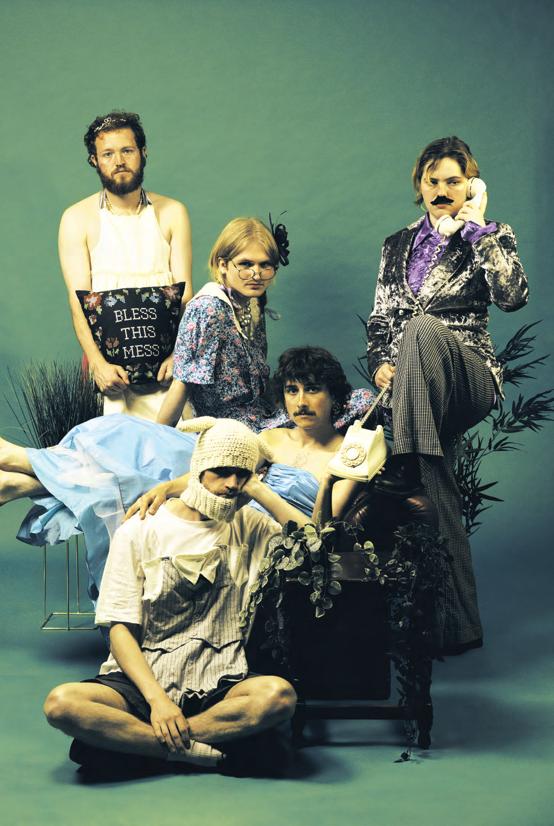
LL: That song came about from a horrible thing that happened to me, like a lot of the songs I write do!
EO: It came from a very real place rather than being just a wee story to tell.
LL: Yeah. I never write songs with “this is a song about this” in mind.
EO: If you wrote with something so solid in mind it would probably do a song like this a disservice.
LL: I could have just written a song about an ex who cheated on me, but I feel like I took it more from the perspective of you never know what’s going on behind closed doors, what people are thinking, who they hang out with when you’re not with them. I was paranoid about these things for so long, that’s why the song feels the way it does.
Back of My Brother – is that literally about your relationship with a sibling? Why the back of your brother?
LL: I don’t actually know what it’s about. I got the title from something someone said when I was having a pint after my shift. They were like, “do you want to see a picture of the back of my brother?” I thought it was a funny phrase, so I wrote it down. I guess it probably is about something to do with my family, probably my brother, but exactly what that is I’m not sure.
RR: We did come up with somewhat of an idea for what it means: turning away from someone who isn’t good for you.
LL: Which I think is a general theme for the EP – bad peeps. Not to say that my brother is a bad person because he’s not... I’ve been moving away from solely personal lyrics about things that happen specifically to me. Writing with Reece has helped make things a bit more ambiguous.
The title track feels like everything coming to a head. What was the
process of crafting this grand finale?
AB: That song has always felt like a big one. From the beginning it sounds happier, more electric. Especially towards the end, which wasn’t even intentional.
SM: Eilidh added that ‘free’ backing vocal part in the end section which really lifted it.
LL: That was Sean’s idea, but he wanted it to sound like a monster truck advert. We had to calm him down and say we couldn’t do that.
RR: It’s kind of like the answer to the rest of the song, maybe the whole EP?
The Masochist is released on 20 Oct via Wish Fulfillment Press
linktr.ee/LloydsHouse
Edinburgh Spanish Film Festival turns ten this year. As ever, it gives a snapshot of contemporary Spanish filmmaking, from prison thrillers to social satires to historical dramas, with a few classics in the mix. Here are five titles to look out for
Words: Jamie Dunn
Prison 77 (Dir. Alberto Rodríguez)
This stirring prison drama follows the bond that forms between two prisoners held in a brutal institution in Barcelona following the fall of Franco. A tale of friendship and solidarity, the film sees the inmates push back against the barbaric penal system, just as the people of Spain had pushed back against fascism. 7 & 8 Oct, Odeon Lothian Rd, Edinburgh
20,000 Species of Bees
(Dir. Estibaliz Urresola Solaguren)
You’ll find echoes of Víctor Erice’s classic Spirit of the Beehive in this thoughtful and compassionate drama from the Basque country. The film’s focus is an eight-year-old protagonist questioning her gender identity over the course of one balmy


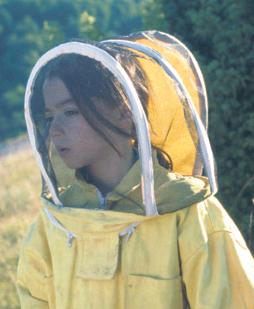
summer. It’s been compared to Céline Sciamma’s Tomboy in the canon of coming-of-age films about trans characters – high praise.
20 Oct, Odeon Lothian Rd, Edinburgh
Vasil (Dir. Avelina Prat)
This wry social satire concerns Vasil, a Bulgarian immigrant who lives rough on the streets of Valencia but finds friends in high places thanks to his skill at bridge and bonds with Alfredo (Karra Elejalde) over their mutual love of chess. A pinsharp critique of Spanish bourgeois society and a tender story of friendship – Vasil is also one for the chess heads out there.
1 Oct, Glasgow Film Theatre; 9 Oct, Eden Court, Inverness; 14 Oct, French Institute, Edinburgh
Discovery Film Festival, which turns 20 this year, is back with an ambitious programme of films, shorts, events and workshops for young people and family audiences. Here are five picks from the international feature films on offer
Words: Jamie Dunn
The Sleeping Beast (Dir. Jaak Kilmi)
The imagination of youth blends with the harsh reality of adulthood in this evocative coming-ofage film from Estonia. The film follows a gang of adolescents who are whiling away the summer by hanging out at an abandoned factory, only for a freak accident to put the young teens in a difficult predicament. Like Lord of the Flies, Jaak Kilmi’s film asks what happens to children’s morality when left to their own devices. 22 Oct
The Worst Ones
(Dirs. Lise Akoka, Romane Gueret)
Middle-class Parisian filmmakers descend on a working-class coastal town to cast a bunch of
socially deprived adolescents for a film, only to get wrapped up in the kids’ messy lives. Blending the chaotic production with snippets of the ‘gritty’ film they are making, this delightfully metatextual work will have you questioning the whole notion of ‘authenticity’ in social realist filmmaking. 29 Oct
Dancing Queen (Dir. Aurora Gossé)
This irresistible gem from Norway follows a geeky 12-year-old girl who becomes infatuated with a famous hip-hop dancer who moves to her town, and decides to audition for his show – despite the fact she has two left feet. It’s been described as Napoleon Dynamite meets Pitch Perfect meets John Hughes, which sounds pretty cool to us. 5 Nov
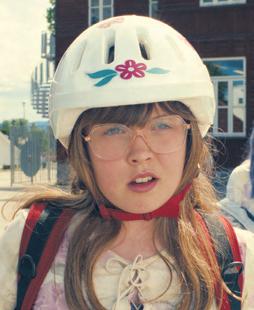
Love & Revolution (Dir. Alejandro Marín)
Pedro Almodóvar is the undoubted king of queer Spanish cinema, but Love & Revolution is reportedly worthy of being filed alongside his oeuvre. Set in Seville in the late 70s, it tells the history of the Andalusian LGBTQ+ movement, and brings to mind Matthew Warchus’s crowdpleaser Pride in its depiction of queer joy and solidarity in the face of a homophobic right-wing government. 8 Oct, French Institute, Edinburgh; 26 Oct, Macrobert Art Centre, Stirling

Cría cuervos… (Dir. Carlos Saura)
In among the new works of Spanish cinema you’ll find this gem from 1976, which follows a young girl who’s developed an obsession with mortality after beginning to believe she’s responsible for the death of her father. A dreamlike film bubbling over with mystery and atmosphere, you’ll want to take the chance to see this masterpiece on the big screen. 5 Oct, Central Library, Edinburgh
ESFF runs until 26 Oct at various venues in Edinburgh as well as Glasgow, Stirling and Inverness. Full programme at edinburghspanishfilmfestival.com
From Argentina, this moving, deeply humanist film centres on Damián, a self-sufficient 11 year-old who’s suddenly taken into care by the authorities, and we follow him as he slowly adjusts to his new situation. Rinoceronte doesn’t sugar-coat the realities of Damián’s life but there are flecks of hope within the darkness; a rare film about social care that manages to be neither judgemental, patronising nor sentimental. 5 Nov
Titina (Dir. Kajsa Næss)

A true-life expedition to the North Pole is told through the eyes of an adorable dog in this gorgeous 2D animation from Norway. This captivating tale tells how Italian aviator Umberto Nobile teamed up with Norwegian explorer Roald Amundsen for an epic journey across the polar ice cap, and acts as a reminder that animation for young people doesn’t have to be hyperactive and candy-coloured. 29 Oct
Discovery Film Festival runs 21 Oct-5 Nov at Dundee Contemporary Arts. Full programme at discoveryfilmfestival.org.uk
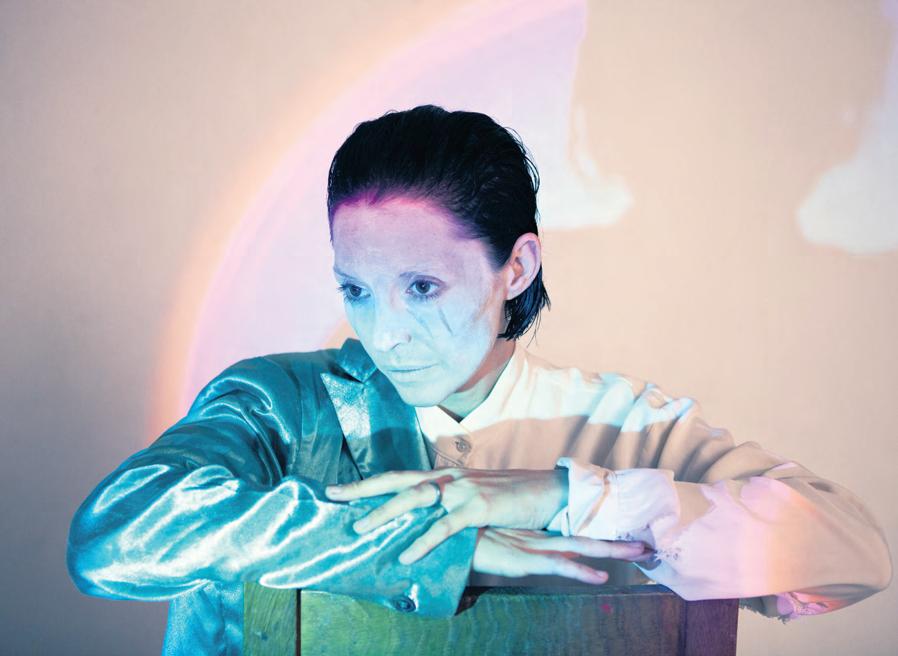
Words: Patrick Gamble
“I’m really scared of them!” laughs Elizabeth Bernholz, aka Gazelle Twin, when asked where her fascination with ghosts comes from. “It’s a fucking terrifying concept to me; that there could be this whole other side of existence that is less about nature, and more about sadness and suffering.”
Bernholz is speaking to us about the inspiration behind her new record, Black Dog, an album that unfolds like a classic haunted house movie. “I’m a child of the 1980s,” she tells us. “I grew up watching horror films like Poltergeist and really wanted to evoke the sweet melodies of those movies to help me cut through some of the album’s darker moments.” Bernholz’s obsession with ghosts won’t come as a surprise to fans of her work. Her sound has always been dark and destabilising, and often explores the hidden dangers lurking in contemporary Britain; something perhaps best observed on her 2019 album Pastoral, a folk-horror exploration of the xenophobia and misanthropy in rural England following the Brexit referendum. However, her latest is a far more personal affair, and explores how childhood traumas can manifest in adulthood.
“It’s probably the rawest thing I’ve ever made,” she confesses. “As I was finishing the album, I started to realise that a lot of what I was writing wasn’t about ghosts, but my own mental state.” Throughout her career, Bernholz has relied on elaborate costumes to keep her identity separate from the music she makes. From the blue hoodie and featureless mask she wore for 2014’s Unflesh, to the nightmarish jester from Pastoral (a demon, dressed head-to-toe in red Adidas apparel), she has adopted a new persona for each of her records, until now. “I’m not wearing anything that covers my face this time,” she informs us. “There’s no relevant look that works for this album. Instead, I decided to adopt the role of a medium and let these different voices take over me. I’ve no idea how they’re gonna make me behave on stage.”
I Disappear opens the record with a melody composed by Bernholz’s eldest son when he was three years old. “The album is as much about my parental guilt towards this particular child, as it is about ghosts,” she tells us. “He was in my studio playing these random chords and he just started singing the words ‘I disappeared’. I instantly knew I was going to use it!”
She continues: “I suffered with this really intense postnatal depression after my first child. It felt like I was possessed; as though somebody had stepped into my body and was making me say all these horrible things.” The experience of living simultaneously on the inside and outside of your body is very particular to the experience of motherhood, something Bernholz explores across Black Dog. “I wanted the opening of the album to feel
resolute. During that time I was full of all this anger that I’d never experienced before. I was lucky that I had my work to pour those feelings into, but I’ve met so many women that have had similar experiences and never talked about it. It’s endemic of a society in which mothers are often left alone.”
Black Dog might be Bernholz’s most personal album to date, but that hasn’t stopped her from using her experience to speak about wider societal issues. Tracks like Fear Keeps Us Alive and Unstoppable Force, with their raw, barbed sound, give a real sense of the contingency and danger of occupying a female body. “One of the catalysts behind this record was a recurring dream I have,” confides Bernholz as we exchange ghost stories.
“I’m in this giant house, and I can feel this dark presence hiding inside one of the rooms… waiting for me.
“Then eventually it happens! Time stops and I suddenly feel myself being levitated by this unknown male entity.” Depictions of women as victims of male violence are a common horror
trope, in part because of the inherent misogyny of the film industry, but mainly because statistically women are frequently victims of male violence, something Bernholz was keen to explore. “I was very young when I first became aware of the threat men pose, but as I got older, this dream started to become more and more violent. I wanted to depict that relentless sense of anxiety that many women have. It’s really horrible to suddenly realise that you’ve spent your whole life living in fear.”
The record closes with A Door Opens, an eerie nocturnal ballad whose bare bones arrangement is rich with supernatural imagery, but Bernholz insists it’s an optimistic finale. “A lot of this album is me trying to confront the demons of the past, but I wanted to show that there’s hope for anybody who feels trapped between these two states of being. I wanted to show that there is a way through all of this. That there is a light!”
Black Dog is released on 27 Oct via Invada Records gazelletwin.com
“I suffered with this really intense postnatal depression after my first child.
It felt like I was possessed”
Elizabeth Bernholz, Gazelle Twin

Ahead of releasing their first self-produced albums, we chat about the state of the music industry with Carla J. Easton and Tamara Schlesinger, aka MALKA
Words: Tallah Brash
Collectively, Carla J. Easton and Tamara Schlesinger, aka MALKA, have 30+ years experience in the music industry, having been involved in various bands, projects and more over the years as well as being solo artists. The two have worked together as part of Hen Hoose, a songwriting collective and music production house for female and non-binary artists, musicians and producers, set up by Schlesinger.
This autumn, the pair release their fourth solo studio albums respectively with MALKA’s Anatomy of Sight out at the end of last month via her own Tantrum Records label and Easton’s Sugar Honey due on 20 October via Glasgow indie label Olive Grove Records. And excitingly, in an industry where so few producers are women, both releases have been self-produced. We catch up with the pair for an honest and frank discussion about their new releases as well as the state of the music industry, and how hard it continues to be for women.
How are you both feeling four records in?
Schlesinger: I’m actually excited because as you mentioned, I produced this one myself. And for years and years I’ve co-produced, or been produced by others, and I felt this huge freedom with this album to just do everything how I wanted it, when I wanted it.
Easton: I’m excited and nervous; it’s been such a hands-on album for me. It was completely fan-funded as well... It almost feels like my most personal record to date. And I think because it’s self-produced, it’s like you’re sort of saying, here’s me, here’s all my flaws, here’s my authentic self. So that’s quite daunting… I’m fucking terrified about people hearing it and going, “What the fuck is this?”
What was it that inspired the two of you to self-produce these records?
Schlesinger: There were a number of things. I’ve not been well [Schlesinger suffers from long COVID], so being able to pace myself and record it in my own way was quite important this time. I wanted to move into a producer role, I wanted to see if that was something I could do, and I suppose the cost of doing it at home.
Easton: Cost is such an important thing that we perhaps don’t talk about, because it’s expensive to make a record... With my [Carla’s Adventures in Pop] fanclub, I managed to raise a really modest amount, so you’re looking at what you can do with that amount that doesn’t compromise the work… and there’s also just this element of DIY... DIY really facilitates more women getting involved in a scene when there’s no opportunities there.
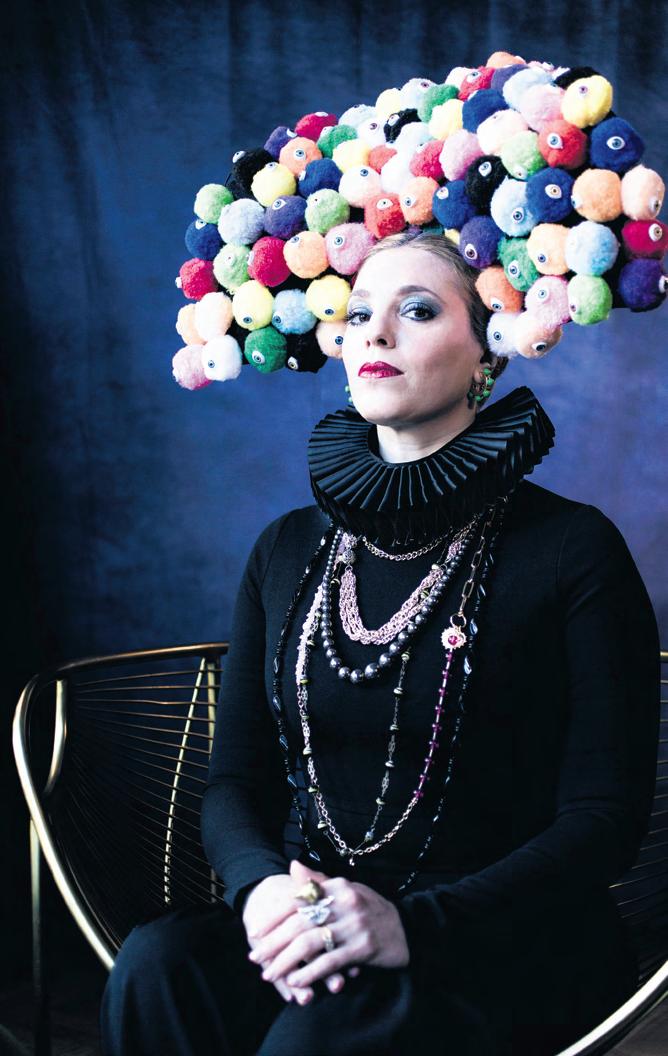
Schlesinger: It’s interesting what you’re saying about DIY, and about, as women, doing this ourselves... If we were at a major label or even a
large indie would we have even been allowed to produce it ourselves and would we have been deemed professional enough? [...] There’s no budget in the music industry, so inevitably DIY is the way forward, certainly for a lot of new artists, because to get attention in the first place, they’re having to release music.
Easton: I’ve been working on the [Since Yesterday] documentary for [seven years]. I’m just constantly reading these stories [about] women doing it themselves, creating opportunities for themselves because the opportunities weren’t there. I think back to my first ever band, Futuristic Retro Champions, which was about the same time that you maybe started making music, Tamara, because we’ve both spoken about MySpace and how groundbreaking that was as a platform. All of a sudden you could bypass everything and just get your music out there.
A friend recently told me about DIO, which is ‘do it ourselves’, and the community spirit of doing it ourselves, because no one’s doing it for us and you build community, and safe spaces by doing that. And I think that’s really exciting, and that’s definitely happening in Scotland today, with Hen Hoose, Popgirlz, POWA, Fanny Riot, AMPLIFI, loads of all these great initiatives [with peer to peer support], but it’s still grassroots up. As exciting as that is, you still need someone topdown to go, “What is that they’re doing?”
Schlesinger: MySpace was the real
start for me, when you didn’t even need an indie label... Now, it’s all about content, but that just means that you’re thrown all this content and there’s so many people releasing music all the time.
“Not everyone has the visibility and the power to be able to say no to labels”
Tamara Schlesinger, MALKAPhoto: Demezla Kingston Tamara Schlesinger, MALKA
It’s interesting what you’re saying about content. Labels expect artists to be on TikTok all the time, and I’m pretty sure that when Self Esteem was asked to do more on hers, she pushed back. Easton: I hate TikTok. I wish people would stop telling me to get a TikTok! I’ve even got my 12-yearold niece being like, “Aunty Carla, get a TikTok and I’ll run it for you,” and I was like no, I don’t want it!
Schlesinger: I’m on TikTok. I don’t have a scooby what I’m doing... For me, Twitter was always quite a good space, but that’s fucked now as well, so it’s like, where’s your space, where are your people, how do you connect with them? Not everyone has the visibility and the power to be able to say no to labels, especially women, and Self Esteem, she broke through ‘older’ in the industry.
Easton: I remember when she got nominated for the Mercury. I can’t remember what the publication was, but the journalist had written, ‘Self
Esteem: proving dreams still can come true at 35’, and I was just like, ‘fuck off!’
Schlesinger: And Kylie has broken America at 50. It’s really cool that these women are still having their breakthroughs at a certain age and I don’t think ten years ago that necessarily would have been the case... I remember I’d just had my daughter and this huge management company wanted to sign me... they found out I had a child, ghosted me and I never heard from them again... But you can still have your breakthrough later in life.
Easton: Yeah, the ageism thing... I’ll maybe shoot myself in the foot here, but when I was asked to be a judge in the Sound of Young Scotland Award for The SAY Award, I really battled with whether I wanted to do it or not... By putting age limits on it, while it’s important to encourage the next generation, 100% I’m behind that, what if life circumstances mean you don’t get a chance to start early?
Schlesinger: And we’re not just talking about women, but to cap creative output and say under 25, you’re up and coming, over 25, you’re no longer new – but you can still be a brand new artist at 45... like you said Carla, there should be support whatever age, whenever they’re doing it.
How do you think we can change these attitudes?
Schlesinger: Really it’s the gatekeepers, until those in prominent positions are of a certain age, and are of a certain gender, and have a certain mindset […] Why do we think everyone has to look a certain way and sound a certain way now? Why have we created this industry where there’s less experimentation and less belief in the audience... It’s become a business model about what’s selling.
Easton: When I was speaking to Halina [Rifai] and Arusa [Qureshi] about AMPLIFI [for] the
documentary, Halina said something that’s just stuck with me: “It’s fine festivals and labels trying to tick boxes for diversification, but unless you’re actually involved in the community that you’re wanting to include and represent, and speaking to that community directly, it’s always gonna be through the eyes of white cis men.”
Schlesinger: With Hen Hoose, we’re starting to work with other organisations and it is about the cross-collaboration and coming together. I think one community cannot solve this. It’s a lot of different communities and a lot of people pushing in the same directions… It’s quite important how you do it, how you create the change and the steps you take, how you try and implement that, and you’ve got to have the right people wanting to do it in the right way... In Scotland it feels viable, whereas across the whole of the UK, across the global market, less so, but you know, baby steps. Maybe there’s a change that can happen right here in Scotland.
Easton: I kind of hope it could because you’re right, [in Scotland] it is quite a small industry, it’s easy to phone someone up and say “I’m doing this, you’re doing that, let’s have a chat.” Does it happen? I dunno. Could it? Yeah.
Schlesinger: I’ve gone via Hen Hoose to a couple of different places doing exactly that, that idea of pulling together some kind of inclusivity agreement, but it’s a lot of work to do something like that, to create that, and to get everyone on board.
Easton: But that raises the other important point, because everything is grassroots up, because a lot of it is artist led, the burnout is so high. You’ll know yourself, you’re spending time platforming other voices and creating this space, and that has an impact on your own creative journey, your own creative output, and it’s the same for a lot of other people because it’s unsupported.
Schlesinger: I think that’s it. The support needs to come across the whole industry, you know? And to implement that change, you need someone to take the reins and say, "Right, this is what we're going to try and do." And who that is, I don’t know, but I always believe that everything’s possible, and I think you can see the development and you can see things are moving. It’s just slow.
Anatomy of Sight by MALKA is out now via Tantrum Records; Sugar Honey by Carla J. Easton is released on 20 Oct via Olive Grove Records
MALKA plays The Hug & Pint, Glasgow, 11 Nov; Carla J. Easton plays Summerhall, Edinburgh, 11 Nov, Mono Glasgow, 12 Nov; the pair play a co-headline show at MacArts, Galashiels, 17 Nov
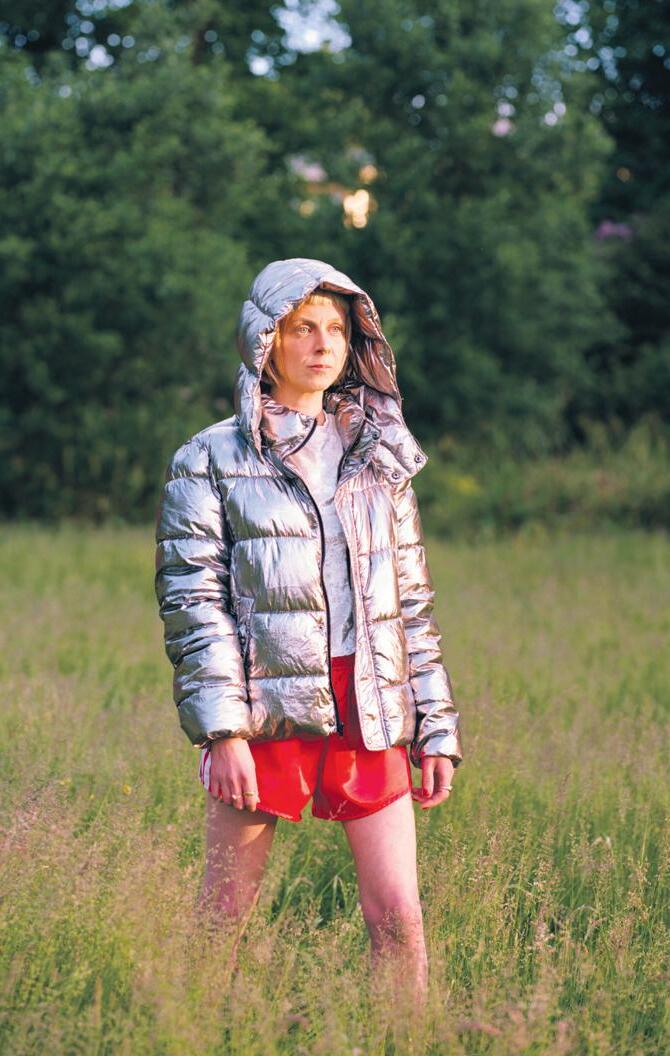
malkamusic.co.uk
carlajennifereaston.com
“I’m fucking terrified about people hearing it and going, ‘What the fuck is this?’”
Carla J. EastonPhoto: Craig Mcintosh Carla J. Easton
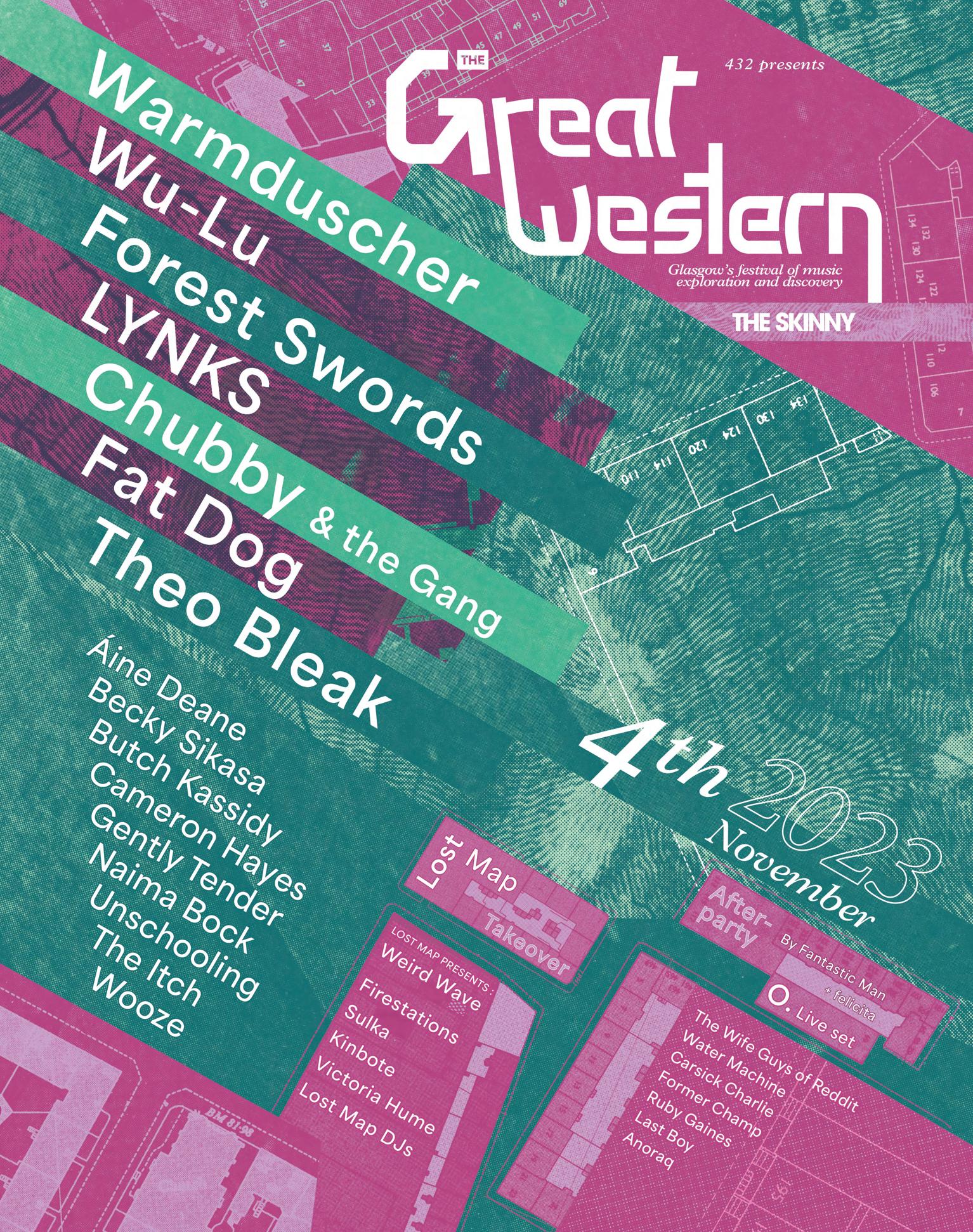
6 October
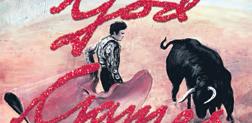
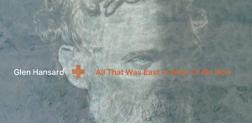


Corto.alto, aka Liam Shortall, is at the forefront of Glasgow’s thriving jazz scene. His project’s hypnotic blend of soulful jazz expressed through outstanding levels of musical ability has won him loyal fans both at home and beyond. But with the arrival of their debut album, corto.alto cement themselves as a tour de force for modern jazz.
Titled Bad With Names, the 12-track work – all remarkably recorded in the confines of Shortall’s flat – brims with variety, honesty and personality. It’s also etched with resilience towards Shortall’s own self-confessed vulnerabilities to making music. Despite being the youngest ever graduate of Glasgow’s Royal Conservatoire (aged just 16 when he enrolled) and cutting his teeth playing trombone in the SNJO, in a press release he admits to finding the process of making music “incredibly daunting and vulnerable”. Though this sounds like somewhat of a dysfunctional relationship for a prolific musician, Shortall’s passion for his craft undeniably tops all else here. He’s not alone on the album though – joining him are some of the UK’s finest young players, including SAY Award-winning pianist Fergus McCreadie, trumpet player James Copus, trombonist Anoushka Nanguy and drummer Graham Costello. Together, they combine to convey the album’s core theme of
You’ll find even more album reviews online this month for Carla J. Easton, Creeper, †††
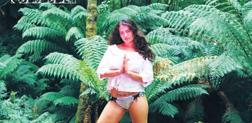



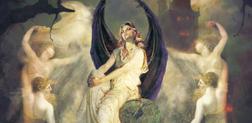
– head to theskinny.co.uk/music
forgiveness, alongside the anxieties of the modern world and misspent youth, all through the realms of instrumental music.
Highlights include Slope, a track resonant of recent Mercury Prize winners Ezra Collective, with its syncopated rhythms, brazen brass riffs and danceable dub feel. The inclusion of a string quartet on Hello and xoxoxo adds tender textures, pairing beautifully with glistening piano lines and atmospheric electronics, while Mechanisms shakes things up with splices of abrasive, Black Midi-esque distortion. Elsewhere, Latency channels breezy guitar tones and curious wah-wah style effects on the trumpet to create one of the album’s standout tracks, highlighting Shortall’s love for fusing live instrumentation with electronic production.
Aside from its virtuosic improvisations and intricate chord progressions, perhaps the album’s most impressive feature is its drum lines laid out by Costello. His deft touches on hi-hats and ability to make the kit both an instrument of melody as well as rhythm is mesmeric. Shortall’s production of the kit is also second to none, and to hear drums of this standard is a real treat.
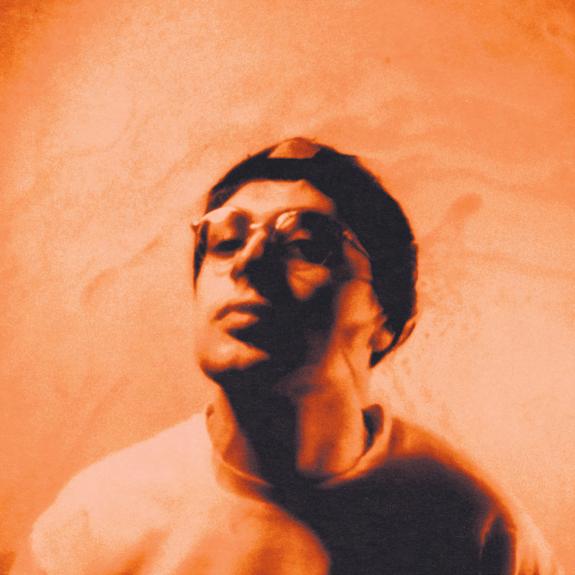
Forward-thinking, cohesive, complete... Bad With Names marks a new high point for Scottish jazz music. [Jamie Wilde]

Listen to: Drawbridge, Swimmer, The Animals
From the moment Helena Deland’s haunting vocals arrive on Saying Something, Goodnight Summerland is musically, lyrically and thematically enrapturing. It is a record of pure beauty and elegance, brimming with beguiling melodies and dazzling progressions. Written and recorded in the aftermath of the loss of Deland’s mother, the album puts words and music to the complexities of grief, its conclusions morphing from sorrow to appreciation, regret to determined hope. Deland muses on the power and shortcomings of words, longing to speak to those no longer here and acknowledging the difficulties in connecting with those who are.
Goodnight Summerland departs from the curious, unpredictable musical arrangements and dissociative lyricism of 2020’s Someone New. Instead, Deland finds new joy in simplicity on Goodnight Summerland; inspired by Joni Mitchell and Vashti Bunyan, she celebrates the sheer transformative power of a great song. More straightforward arrangements, open-hearted lyrics and use of harmony combine to create a record that feels like healing, like resolution.
Goodnight Summerland is a record to get lost in, and one to take heed of. It seems to implore: don’t be afraid, say the things you need to say. [Katie Cutforth]
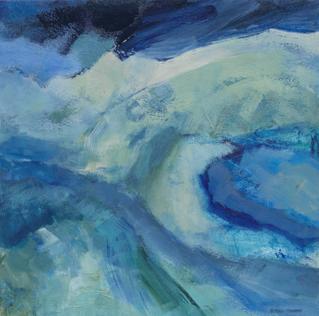
Santhosam (Tamil for ‘happiness’) oozes with feel-good beats and energy, a testament to finding your own joy and inner contentment in this world. ‘Let’s take it to the dancefloor,’ Priya Ragu sings over disco-tinged beats on One Way Ticket – and on her striking debut she does just this. High tempos and short track lengths allow for the vast influences Ragu draws from – R’n’B to funk, Tamil music to dancehall – to shine.
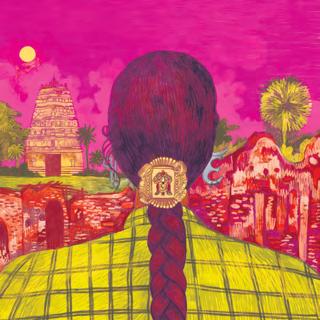
Listen to: On Embers, Yxguden, Xkyrgios
Breaking out as an almost instant underground star with his 2012 mixtape Kings and Them, Evian Christ went onto work on two of the defining rap records of the decade, Yeezus and Atrocity Exhibition. But concurrent with his warping of hip-hop was a drift towards trance, and when he returned to releasing solo work in 2020, it was with a blown out, cataclysmic take on the genre. Revanchist follows its lead into a world of spacious, wounded beauty, run through with pounding ferocity. Opener On Embers sets the tone, spinning through vicious bass hits before falling away, leaving only whale song drifts of disembodied vocals behind, colliding it all together for a storm of a finale.
While his drift into trance undoubtedly informs and shapes the sonics of Revanchist it is not to say that this is by any means a straightforward genre exercise. But if the overriding sound has a closest relative then it’s the harsher end of Drain Gang’s heartache strewn trance-pop. Revanchist is a magnificent record, one that operates at the grandest of scales, but matches its ambition with immaculate delicacy of feeling, without losing its capacity to simultaneously be full of gnashing, kicking bangers. [Joe Creely]
On Javelin, Sufjan Stevens sees himself as a blight on a beautiful world. When loved, his pain is suspended and he transcends, but such mercy is resigned to his past. With oceanic regret, he supplicates the universe for a way forward.
Listen to: Black Goose, Adalam Va! School Me Like That
School Me Like That sees Ragu rebelling against external expectations, while Black Goose is an impassioned call of solidarity and resistance in the wake of 2020’s BLM protests: ‘They will try to bring us down / I don’t care what they say’, she raps over dholak and dancehall stylings. The latter half of Santhosam delves deeper into the inner work of finding contentment; on Escape, Ragu sings breezily of living her truth and creating joy where she’s at.
Overall, Santhosam has the fresh vibrancy of a mixtape, but with the smooth cohesiveness of an album – it’s the self-assured debut of an artist who has fully arrived and is ready to carve out a distinctive space of her own. [Anita Bhadani]
Listen to: Everything That Rises, Genuflecting Ghost, So You Are Tired
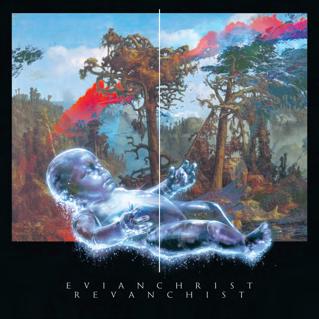
A deep nihilism informs Javelin’s sound and stories, but Stevens’ banjo buoys us from drowning in his longing. With a Beatles sensibility, aching opener Goodbye Evergreen is a cry for help – at its most intense it’s like a violent rain hurtling down on a bed of water lilies. On A Running Start, Stevens’ cadence has the sweet twinkle of a treacly fable, along with a whimsical chorus of backing singers sparkling like fireflies illuminating the dance of anthropomorphised woodland creatures. Will Anybody Ever Love Me? sees Stevens becoming poetically needy, his voice reedy. Genuflecting Ghost finds freedom in facing the horrors (‘Now we dance in our catastrophe’) and, though his hope is moribund, the eight-and-a-half minute Shit Talk makes one last desperate plea: ‘Hold me tightly lest I fall’.
Gracefully distilling a profusion of self-loathing, Javelin is a heartsick high. No one yearns like Sufjan Stevens. [Lucy Fitzgerald]

CMAT Crazymad, For Me AWAL, 13 Oct rrrrr
Listen to: Such a Miranda, Where Are Your Kids Tonight? Can’t Make Up My Mind
On her debut album, CMAT found an instant sweet spot. She’s a funny lyricist, but the jokes don’t grow stale on repeats. She flirts with kitschy country without drifting into novelty. She can go to number one on Ireland’s album charts, and sound like she’s making all the decisions.


Now, she’s on the telly. She’s being shouted out by her hero Robbie Williams, and is poised for indie-pop stardom. In response to the well-earned attention, her second album Crazymad, For Me finds an even sweeter spot. It’s funnier, weirder, and plays with a more colourful blend of Americana. It also reveals more depth and ambition. For one, it’s a breakup album that’s not shy about admitting flaws in its protagonist.
‘I have the constitution of lemon and lime / I’m fizzy and I can’t make up my mind’, goes one line in the record’s masterful middle stretch, which is packed with character, multi-part epics and genuine singalongs. And when the songs get deep, she tosses in a one-liner to sweeten the deal: ‘I’m the Queen of England, drinking babies’ wine / I’m Lizzy and I can’t make up my mind’. The jokes can’t get stale when the songs are this good. [Skye Butchard]
The senseless act of violence that gives Taja Cheek’s new album its title ripples across its 36 minutes. Could there be any more evil and futile a confrontation? Cheek asks if that same thoughtlessness doesn’t enter our lives in other, less graphic ways: when we perpetrate emotional damage on loved ones, or upon ourselves; or the absent-minded stupidity of calling a Black musician’s art “jazz-influenced” as a reductive signifier.
Hinako Omori stillness, softness... Houndstooth, 27 Oct rrrrr
Listen to: cyanotype memories, a structure, astral
Hinako Omori finds herself, synths in-tow, amidst a darker, more driven soundscape on stillness, softness..., the London-based multi-hyphenate’s latest studio album. The landscape inspiration of 2022’s a journey... is traded here for something rhythmic, meditative, and binaural, juxtaposing scattered, icier melodies with warmer, lusher chords which swell to quell the melodic sparsity, aided by Omori’s increased vocal presence.
It’s in the company of this more active vocal that much of the growth between the projects is evident. On ‘cyanotype memories’, the classical and ambient fusion of her debut is present, joined by a more a ressive electronic aspect, accompanied by sparing use of drum machine. The mind has to shift a little when the aptly titled ‘in limbo’ builds to its atonal segue with ‘epigraph...’, a disquieting interlude announcing the album’s mid-point, while later Omori invites you into her yogic mantra on ‘a structure’, the listener assured that ‘your mind is your own’.
Nothing here feels inauthentic: there’s a familiarity in her swirling synth accompaniment and instrumental vignettes; ‘both directions ?’, ‘stalactites’ and the dilating, metronome-like ‘astral’, all assuring us that stillness, softness... is as natural a progression as sophomore albums can proffer. [Rhys Morgan]
L’Rain I Killed Your Dog Mexican Summer, 13 Oct rrrrr
Listen to: Our Funeral, 5 to 8 Hours a Day (WWwaG), New Year’s UnResolution
In conversation with her previous work, I Killed Your Dog explores these feelings, these reactions, in abstract. It’s littered with impressive results. 5 to 8 Hours a Day (WWwaG) moves from acoustic guitar to a stuttering, careening loop, brass later heralding a spoken word section. Yes, there’s alternating time signatures and an improvisatory atmosphere, but this is more akin to modern folk. ‘You didn’t think this would come out of me’, Cheek retorts at unwary listeners.
The record makes time for sharp skit humour and ends with a dazzling dance-pop groove. Where Cheek smooths down her effervescent ability to discard genre for more conventional psych-rock numbers, it’s not as exciting. But she can even do that better than anyone else.
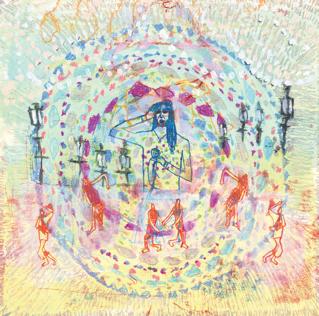 [Tony Inglis]
[Tony Inglis]
Dream Nails Doom Loop Marshall Records, 13 Oct rrrrr
Listen to: Ballpit, Geraniums

While it’s not common for bands to continue after their lead vocalists leave, it can happen. In the summer of 2021, queer punk collective Dream Nails revealed that new frontman Ishmael Kirby would be taking over from founding member Janey Starling. Their live set quickly became bolstered by new numbers like BBC 6 Music-approved Good Guy, taking aim at toxic masculinity, and Monster. Two years on, and flanked by OG members Anya Pearson, Lucy Katz and Mimi Jasson, these tracks appear on their second album, Doom Loop
While the punk pace hasn’t changed, there are different forces at play here. Where Starling brought Kathleen Hanna-esque hijinx to the group’s debut, Kirby dishes out an almost Sleaford Mods-style swa er in the trip-hop-tinged Sometimes I Do Get Lonely, Yeah. It’s no more Sriracha-doused penises (2017’s Deep Heat) and witch hexes. Instead, Doom Loop surprises with tender, piano-led closer Time Ain’t No Healer.
But it’s in those heavy, riff-laden riots where the band still dazzles. Like recent single Ballpit, with new rave keys and rhythm block layered in for good measure. Sure, it might be a new era for Dream Nails but they’re still fighting the good fight, just with fewer goofs. [Cheri Amour]
Words: Tallah Brash
Before we get into October releases, here are a few beats and bobs we missed last month. At the very start of September, Glasgow indie-pop outfit Fauves released their MGMT-indebted debut album, Favourite Shade, and there were EPs from GRAVELLE (Restless Dream), Sixpeace (Index Fun!) and Thundermoon (We’re Still Here). When it came to singles, we enjoyed new cuts from Bobbi Arlo (Ode to Ü), SHEARS (Figure Me Out), Raveloe (Clouds Are Release) and Lewis McLaughlin (Getting Better), as well as It’s So Easy, the debut single from Get Wrong, a brand new project from The Spook School’s Adam Todd and Martha’s Naomi Griffin. This month, there are a few big hitters coming your way. On page 56 you’ll find us in conversation with MALKA and Carla J. Easton, celebrating MALKA’s late September release, and Easton’s Sugar Honey, due on 20 October. Plus, rising talent in the Scottish jazz scene, corto.alto’s debut Bad With Names is our album of the month; turn back a page to read all about it.
On 2 October, Edinburgh outfit Broken Records release their fifth album, The Dreamless Sleep of The 1990s. Tackling ‘the profound experiences of life and death’, it’s a beautifully pieced together record, rich in instrumentation and the poetic lyricism of frontman Jamie Sutherland. At the other end of the month, PAWS release their self-titled fifth album too (27 Oct). Opening with an industrial thwump and a yowl from Phillip Jon Taylor before the chug of Helen Back kicks in, stick around and you’ll quickly realise that PAWS is by no means a one-note record from this much-loved emo pair, that’s buoyed by moments of swirling electronica, anarchistic sentiments, gorgeous instrumentals, and a beautiful guest turn from Jane Blanchard. Long-plays aside, several shorter releases have caught our ear this month. In the closing bars of Just Like You, the opening track of Theo Bleak’s Pain EP, you can feel that pain as she ramps her vocals up to 11, sounding both anguished but in control in equal measure. The juxtaposition between moments like this and Bleak’s softer, breathier vocals is nothing short of thrilling, and the strength and power she shows on the confrontational It’s Not Doing Me Any Good gives us goosebumps: “I wrote this about my old band’s manager cos I hope he goes to hell,” she says in the single’s accompanying press release. Pain is a cathartic fist in the air, made by Bleak for Bleak as she bids farewell to an old chapter in her life. It also highlights how much of a master she is at a delivering a gut punch through song structure; powerful codas are by far her secret weapon.
From one powerful voice to another, Much like Lucy Dacus, Katie
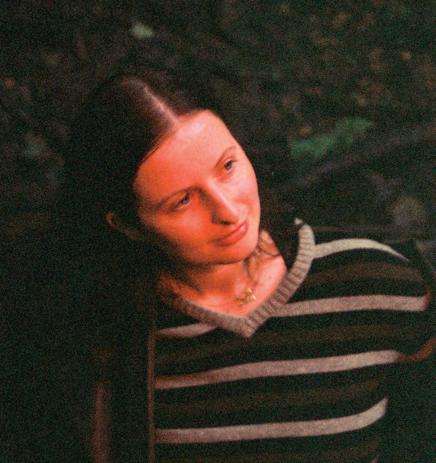
Gregson-MacLeod is a wizard when it comes to storytelling through music, with the kind of vocal warmth that pulls you in immediately. At the utterance of her first words on opener September, you find yourself hyper-tuning in, turning the volume up so you can really listen. There’s an unequivocal personable nature found across Big Red (13 Oct), which musically peaks and troughs, capturing a romantic period in Gregson-MacLeod’s life, solidifying her as one to watch. With a record released on the same day, another voice that has us excited belongs to Glasgow’s Pippa Blundell Landing somewhere between ANOHNI and Liz Green, atop gentle and spacious guitar lines, Blundell’s captivating storytelling shines bright on Sisters, an EP about the women in her life. Also on the 13th, cortnë releases Florescence. Packed with emotion, pleasing chord progressions and harmonies, it could easily soundtrack a coming-of-age film.
At the end of the month, songwriter Celine Brooks and musician Gareth Dickson, together known as Budgee, release Pell-Mell (27 Oct), ‘five bittersweet dialogues about re-framing and cultivating intimate love without the obligation for the traditional trappings of romance or family.’ There’s a sincerity and warmth found across the record, as alt-folk and Americanaindebted instrumental parts twinkle and shuffle beneath Brooks’ gorgeous vocals, calling to mind the likes of Mazzy Star’s Hope Sandoval or Katy J Pearson.

More jazz can be found this month too from Edinburgh outfit Eloi, who release their Bloom Again EP towards the end of the month, littered with complex time signatures, exciting brass stabs and soothing elastic honeyed vocals. And at the more experimental end of jazz, Josef Akin’s Chimera EP arrives on 19 October, dripping in caramel brass tones, warm keys and expert vocal turns from Anoushka Nanguy and India Blue.
Celebrating their tenth anniversary, Lost Map presents Weird Wave arrives on 6 October, featuring members of Pictish Trail, L.T. Leif, Kid Canaveral, eagleowl and Meursault. Then, Dancer release the super fun As Well (13 Oct), on the 20th Barry Can’t Swim releases When Will We Land? and Lloyd’s House release The Masochist (more on this on page 52). On the 27th, Declan Welsh and the Decadent West release 2 and Starsky-Rae releases his Why Am I So Green? mixtape. And there’s a whole sack of singles coming your way too from Conscious Route (Amorphous Shape, 5 Oct), Hound (Holding Out, 6 Oct), Bemz (G.O.M. Gyallie On Me, 6 Oct), Peter Johnstone (Sad Cowgirl Playlist, 18 Oct) and wojtek the bear (second place on purpose, 20 Oct).
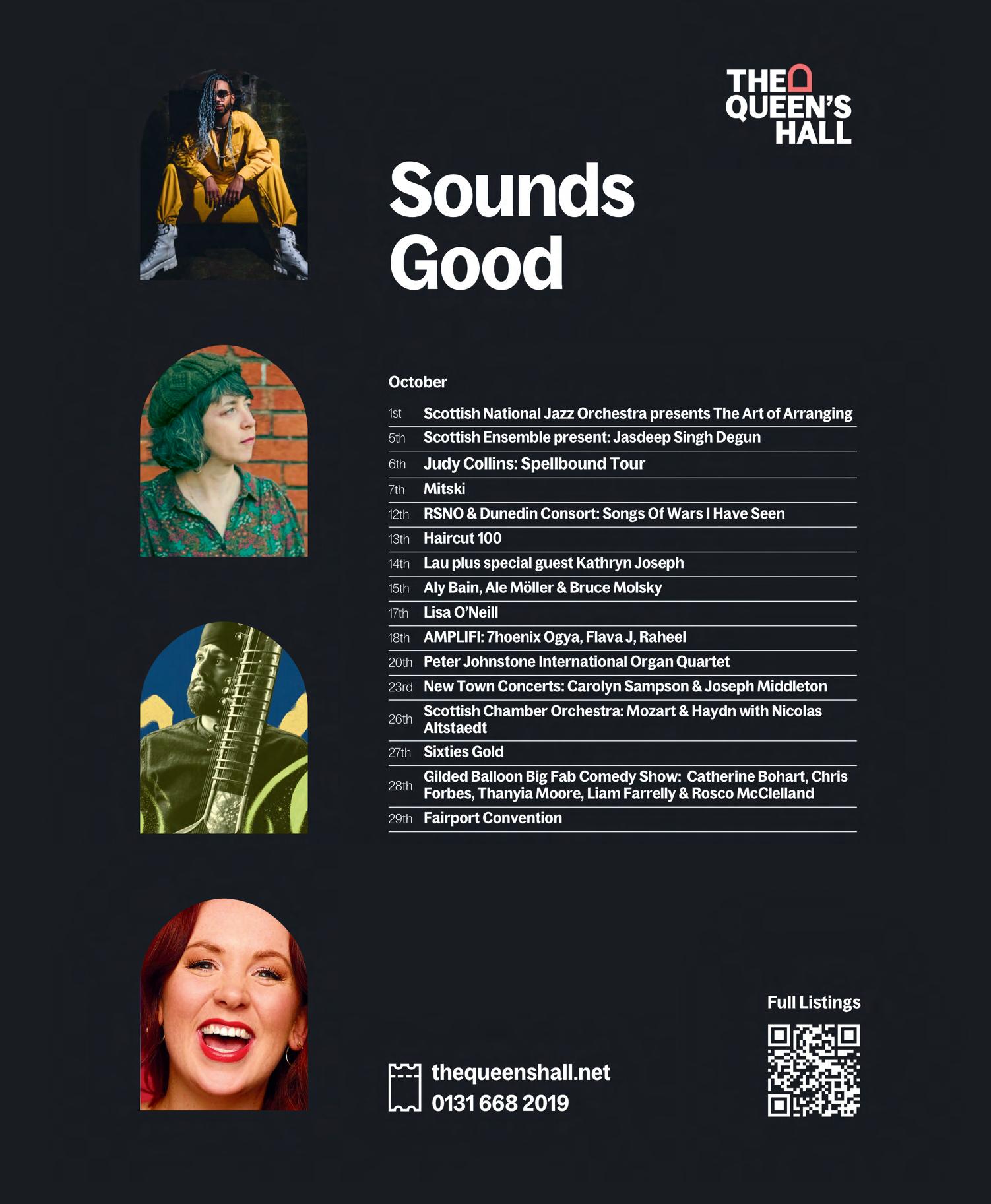
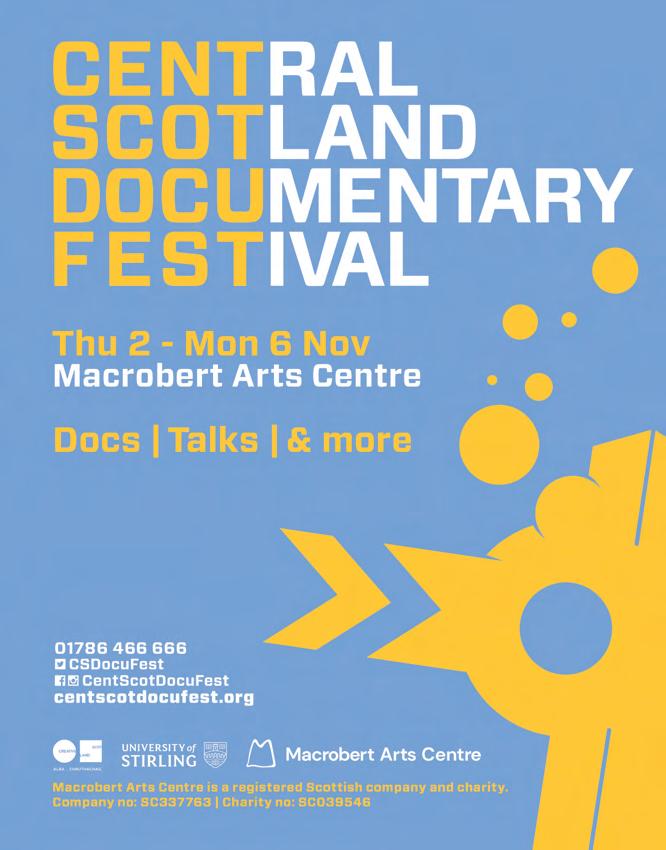
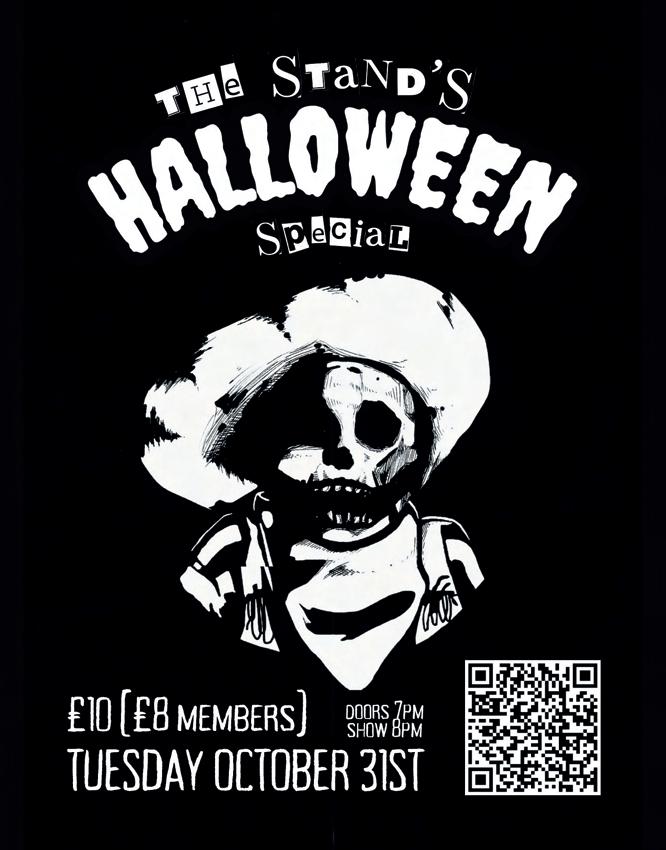
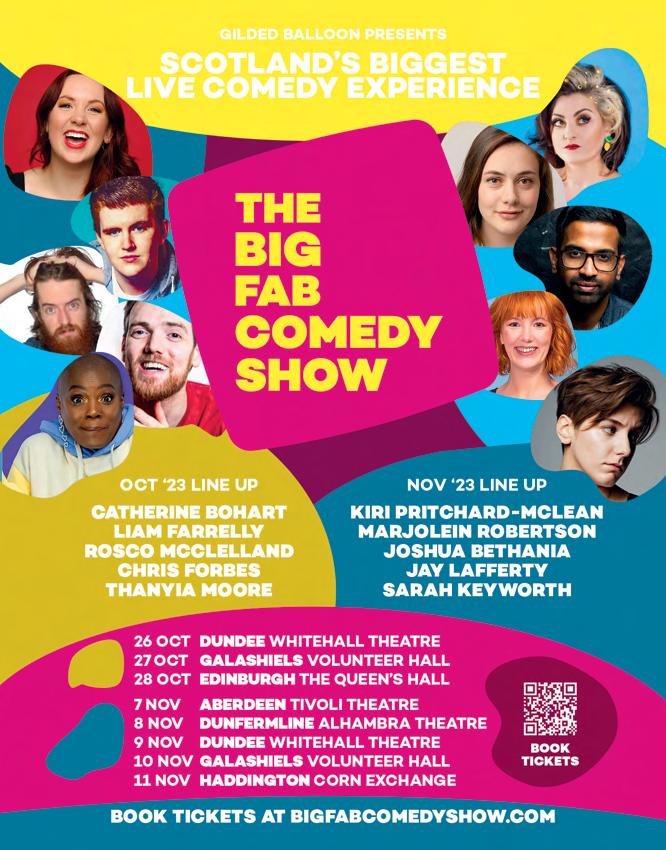
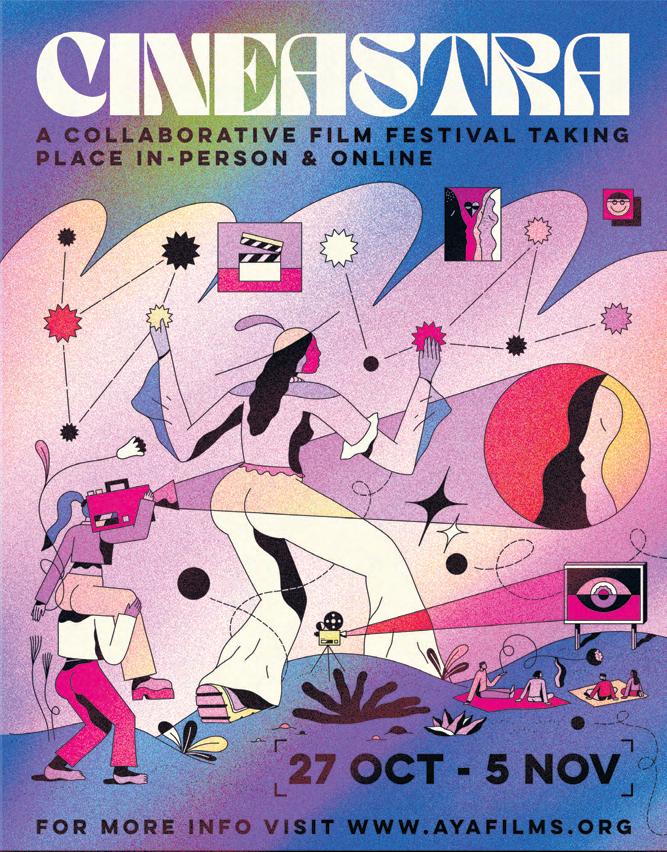
Director: Martin Scorsese
Starring: Leonardo DiCaprio, Robert De Niro, Lily Gladstone, Jesse Plemons, Tantoo Cardinal, John Lithgow, Brendan Fraser, Cara Jade Myers, JaNae Collins, Jillian Dion, Jason Isbell, William Belleau, Louis Cancelmi, Scott Shepherd
RRRRR
Released 20 October
Certificate 15
theskinny.co.uk/film
Early on in Martin Scorsese’s Killers of the Flower Moon, images of Osage people flitter by while a voiceover recounts their names and age at the time of their deaths. They are victims of the so-called Reign of Terror. The mysterious circumstances surrounding their demises, we’re told, were not investigated. It’s a haunting, gut-wrenching sequence that recalls the onscreen death notices that featured in Scorsese’s previous film, The Irishman (2019). And like in The Irishman, there’s a feeling in Killers of the Flower Moon that the spectre of death hangs in the air, imbuing the film with a startling emotional core. We can but watch as the devastating action unfolds.
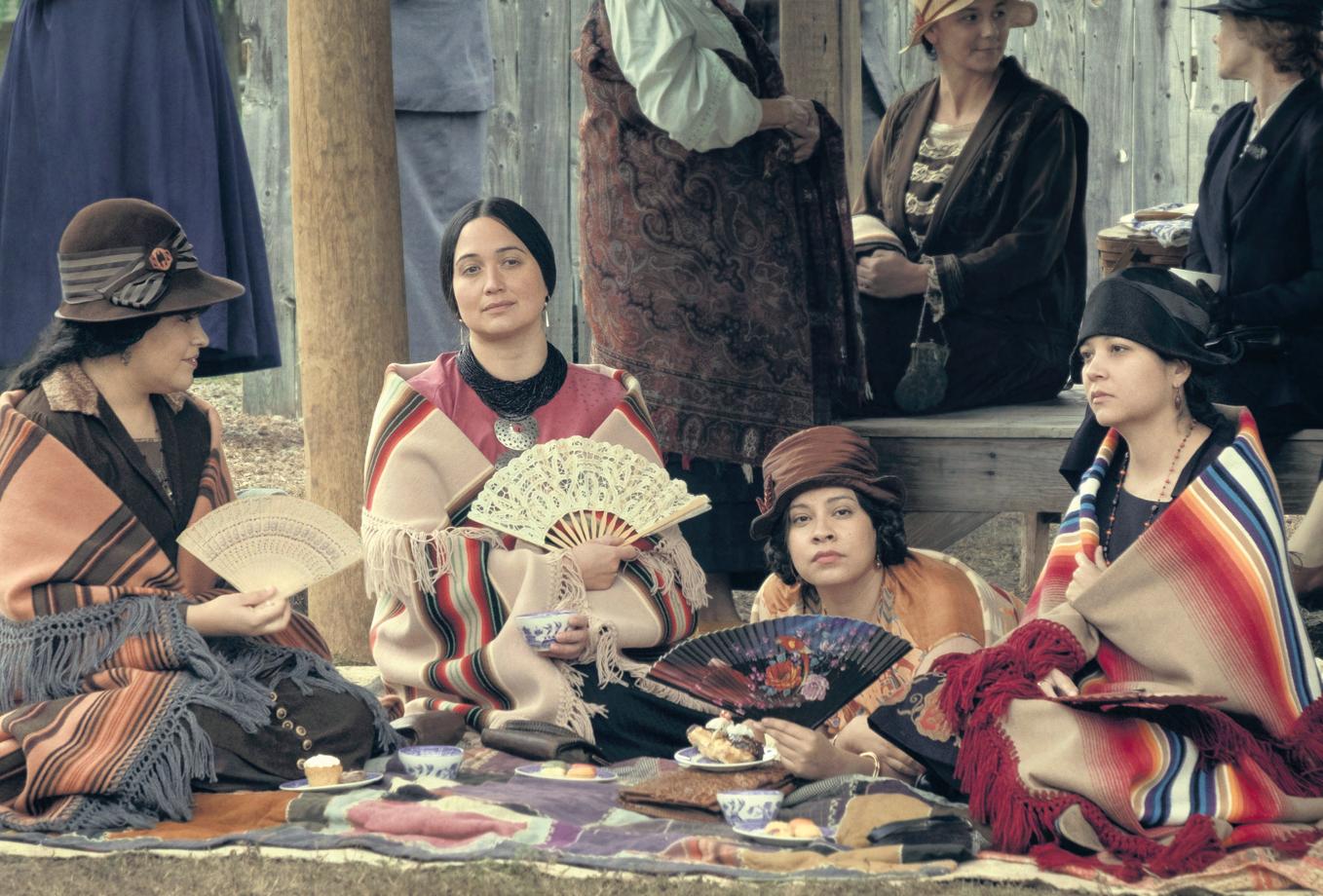
Time will tell if mortality will become the defining theme of Scorsese’s late period, but Killers of the Flower Moon certainly fits the change of pace that began with Silence (2016) – a shift marked by a less ostentatious aesthetic and a more contemplative mood (these elements have occurred before in Scorsese’s oeuvre, but never with such consistency). Still, there are also echoes of earlier films – not only narrative reverberations from crime films like GoodFellas (1990) and The Departed (2006), but elements familiar from Raging Bull (1980), Kundun (1997), The Aviator (2004) and even Hugo (2011). If Killers of the Flower Moon feels at times like a summation of an outstanding career, perhaps the bi est touchstone is the underrated Gangs of New York (2002), which likewise weaves a tale of twisted familial dynamics while probing the foundations of modern America.
Here, the focus is the racism, exploitation and genocide that befell the Native American tribe of the Osage Nation. At the
turn of the 20th century, oil money turned them into the richest people per capita in the world and, needless to say, it wasn’t long before white people buzzed around them like vultures, clawing at their wealth by any means necessary.
Scorsese centres his tale on Ernest Burkhart (Leonardo DiCaprio), who takes a job working for his uncle William (Robert De Niro) after returning to Oklahoma from the battles of World War I. Soon, he falls in love with Mollie (a film-stealing Lily Gladstone), an Osage woman who asserts a stoic grace amid ru ed masculinity. But behind the scenes of their romance are dark machinations. William is a whispering devil, evil incarnate, manoeuvring Ernest to get at Mollie’s family fortune. Once the plan begins, people start dying…
Based on a true story, Killers of the Flower Moon is not so much a whodunnit as a whydunnit: a penetrating exploration of hubris and fall, of trust and betrayal, of evil, sin and greed. If those sound like scriptural terms, well, this is a Martin Scorsese Picture – and it’s not without biblical grandeur. Running at 206 minutes, it’s a sta ering achievement, combining an enthralling narrative with a sympathetic and detailed exploration of the history of the Osage Nation. It’s been touted as an ‘epic western crime saga’, and if the last three words feel at times like camouflage for ‘psychological character drama’, there’s certainly no denying the first. Quite simply, this is cinema at its finest.
[Alex Barrett]Released 20 Oct by Paramount; certificate 15
Scottish screenwriter Paul Laverty talks to us about The Old Oak, his latest – and probably last – feature film with Ken Loach
Words: Jamie Dunn
Filmography: Carla’s Song (1996), My Name is Joe (1998), Bread and Roses (2000), Sweet Sixteen (2002), Ae Fond Kiss... (2004), Tickets (2005), Cargo (2006), The Wind That Shakes the Barley (2006), It’s a Free World... (2007), Looking for Eric (2009), Route Irish (2010), Even the Rain (2010), The Angels’ Share (2012), Jimmy’s Hall (2014), I, Daniel Blake (2016), The Olive Tree (2016), Yuli: The Carlos Acosta Story (2018), Sorry We Missed You (2019), The Old Oak (2023)
One of cinema’s most successful partnerships has reportedly come to a close. It’s been widely su ested The Old Oak is the final film from Ken Loach, and thus his last collaboration with long-time writing partner Paul Laverty. We’ve heard that old chestnut before, though. Rumours of Loach’s retirement have been rife for years, but the 87-year-old firebrand’s passion for cinema continues to burn bright. In fact, I’d argue it’s been burning white hot in his supposed dotage.
In 2016 he made I, Daniel Blake, a knockout drama about an ailing joiner wrongly declared fit for work by the callous UK welfare system, and it was his best film in years, winning Loach a second Palme d’Or at Cannes. Sorry We Missed You, about a couple trapped in precarious zero-hour contract work, was similarly blistering. Both were set in the northeast of England and fizz with anger at the state of breadline Britain after years of Tory rule.
That would have been a powerful one-two punch to bow out on, but when we catch up with Paul Laverty, speaking to us over Zoom from his home in Edinburgh, he explains they had more to say. “Ken and myself and [producer] Rebecca [O’Brien], we sat down and we felt there was unfinished business after the last two films.” How so? “Well, they’re both quite tragic in how they ended. Now of course you have to be truthful to the characters and premise, but we just felt we had to dig in to see how these human tragedies come about. So I went back to the villages around Newcastle and Durham.”
This has been Laverty’s technique since 1996’s Carla’s Song, his first film with Loach. On-the-ground research is key; authenticity is everything. One of the people he met was a retired nurse from Easington, who was working on the day that 187 miners were killed during a major collapse at the local colliery in 1951. “I met her in her little street, she was in her 90s, and she was amazing,” recalls Laverty. “Her house was fantastic, modest, beautifully cared for; she had a great poise about her. But many of the people out in the street around her, some of the new people who had just moved into town, they were lost souls.”
After a bit of di ing, Laverty discovered houses in that street had been selling for four-figure sums to mysterious online buyers. “What was happening, I discovered, was that local authorities from down south were sending up problem families,” says Laverty. “So the people who live there in that street, felt they were a dumping ground.”
While he was conducting these interviews in 2016, the Syrian refugee crisis was very much on his mind. The Old Oak shows what happens when this crisis is added into the mix.
“We’re not trying to balance out and say one trauma is the same as the other,” says Laverty. “What the Syrians went through is of its nature, just unbelievable. What I was interested in was seeing what happened within this village. How do people lose hope? And then how do they actually turn on each other? How does that happen?” This is where Laverty’s skill for dialogue and drama
comes in. “You can’t copy a screenplay from the street, you know,” he laughs. ”Even Bertolt Brecht said, if there’s no fun, there’s no show.”
The Old Oak revolves around a local pub, in an unnamed County Durham village that’s seen better days. The pub has too. It’s frequented by middle-aged men – most of them sons of miners – who’ve long forgotten the solidarity of the miners’ strike. They’re bitter about being stuck in a dead-end town and angry when they see Syrian refugees housed in their community. The pub’s landlord, TJ (Dave Turner), isn’t quite as embittered and strikes up a friendship with young photographer Yara (Ebla Mari), one of the refugees, who has an idea to bring the community together.

The Old Oak is of a piece with I, Daniel Blake and Sorry We Missed You – “I hope, in time, people will come to see the three films as a trilogy,” says Laverty – but what sets it apart is a hopeful ending that unashamedly pulls at the heartstrings. “Some people see hope as a kind of empty, punch-in-the-air slogan, but it’s the opposite,” says Laverty. “Hope is actually massively political, because when people give up hope, they become nihilists – they do nothing. And then they get angry and they become isolated. Hope, on the other hand, is intelligence, it’s imagination, it’s empathy. It’s a massively creative part of us. So we really wanted to tap into that.”
As for those rumours that this is Loach’s last film, it looks, sadly, like they might be true. “I don’t think he’ll do another one,” says Laverty. “I mean, he’s still massively active. I can see him doing documentaries. But the physical effort of making a feature film – it would be unfair of me to ask him to do another. I’ve already dra ed him into his mid-80s to do these last three features, so he’s already sla ed me off for roping him into those. He’s just turned 87, he has a remarkable energy, but I think Ken deserves a moment to rest.”
The Old Oak is out now from StudioCanal
Smoke Sauna Sisterhood
Director: Anna Hints
rrrrr
“Smoke Sauna is a sacred place… Where you wash yourself clean. You can wash off all your dirt.” As a documentary film and love letter to womanhood, Smoke Sauna
Sisterhood is a celebration of survival. Through a series of conversations among Estonian women gathered at a cabin in the woods for a steam bath, the film presents an intimate portrait of a sanctuary in which no woman needs to perform in any capacity – a refuge from society.
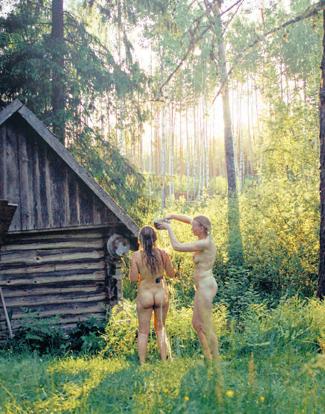
In one primal, joyful scene, the women lie flat on grass and sing in unison, using their naked bodies as percussion. Unposed as they expel their aches, their full forms and relaxed bellies, breasts, and backs are beautifully framed. Smoke Sauna
Sisterhood is at its best when it sits in such realism. It briefly falters with a heavy-handed stylistic choice
during connecting scenes, in which miraged faces and silhouettes of older women (an insert for their domineering, projecting mothers) appear superimposed on the elements (snow flurries, imposing forests, and cloudy mists over morning lakes that otherwise evoke the cinematography of Justin Kurzel’s Macbeth).
Smoke Sauna is shown to be a place where women come to comfort and confront, to expunge and embrace, to reclaim themselves, one bead of sweat at a time. They find community as they let their learned shame from formative experiences (from periods to heteronormativity) evaporate and purge violent memories. They hold each other, showing care and curiosity in the face of the unforgiving sexist culture beyond this smoky haven. [Lucy
Fitzgerald]Released 13 Oct by Conic; certificate 15
Director: Madeleine Gavin
Starring: Pastor Seungeun Kim, Soyeon Lee, Hyuchang Wu rrrrr
Beyond Utopia tells the story of Seungeun Kim, a pastor who has dedicated his life to helping people escape from North Korea. Using a network of contacts along the Chinese-Korean border, he has been able to bring thousands of people to safety. And with the cameras he smu les alongside them, he has managed to provide a rare glimpse into a nation that has shut itself off from the rest of the world.
Madeleine Gavin’s documentary is told largely through his footage. There are no recreations, just a first-hand look at the extreme measures that each defector has to take. It’s a heart-stopping experience to watch a family of five hiking their way through rivers and mountains, even their youngest child solemnly
aware that they will all be killed if they are caught.
As incredible as this footage is, sometimes the things we don’t see are as powerful as those we do – like a defector talking on the phone with a series of brokers, trying to track down her teenage son after his own escape goes wrong. Since we can’t watch his journey, we’re left to piece it together alongside his mother from the scraps of unreliable information that each phone call provides.
The real-time human drama of it all is so riveting and the stories of life inside North Korea are so strange that it all begins to feel almost fictional. But the intimacy and immediacy with which Beyond Utopia unfolds never allows you to lose sight of just how real it all is.
[Ross McIndoe]Released 27 Oct by Dogwoof; certificate TBC
Typist Artist Pirate King
Director: Carol Morley
Starring: Monica Dolan, Kelly Macdonald, Gina McKee
rrrrr
In 2013, Audrey Amiss passed away just shy of her 80th birthday. The vast collection of her art discovered after her death – as well as her unconventional life, shaded by mental illness – forms the basis of writer-director Carol Morley’s quasi-biopic. The film’s title is taken from Amiss’s own passport, where she wrote ‘Typist, Artist, Pirate, King’ under ‘Occupation’.
Typist Artist Pirate King follows one imaginary road trip where, subjected to another routine fortnightly psychiatric check-up, she spins the day into a cross-country odyssey through memories and fantasies – all the way from Clapham to Sunderland.
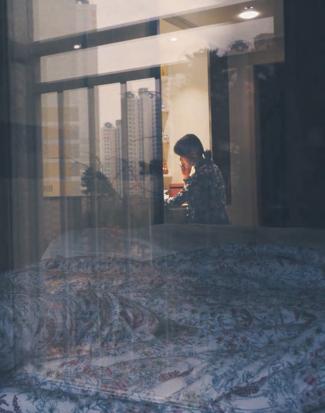
Monica Dolan brings irrepressible energy and full conviction to Audrey, never playing the stereotype of a diagnosis or a ‘tortured’ artist. In her hands, Audrey becomes a singular
force with an uncompromising worldview. As the put-upon nurse Sandra (gleefully termed “Sandra Panza” by Audrey, much to Sandra’s chagrin), Kelly Macdonald is a perfect straight woman. Amiss spoke extensively about traumatic experiences with mental health professionals, and this truth is witnessed in Dolan’s impassioned delivery of Audrey’s memories. That said, by writing Sandra as fundamentally sympathetic, supported by Macdonald’s warm presence, Morley allows Sandra – as an audience surrogate – to believably explore new ways of seeing trees, time and old relations.

The tendency towards sentimentality is baked into the narrative, and while there is too much that is clean and cathartic in a story of a woman whose life was long and unwieldy, these are forms cinema works well within. The two lead performances make the unexpected journey worthwhile. [Carmen
Paddock]Released 27 Oct by Modern Films; certificate 12A
BlackBerry Director: Matt Johnson
Starring: Jay Baruchel, Glenn Howerton rrrrr
The rise and fall of the BlackBerry smartphone – once ubiquitous, now obsolete – is an odd premise for a feature film. But director and star Matt Johnson plumbs the rapid tech development of the 1990s, and the ruthless Wall Street and personal politics that accompanied it, to craft an appropriately offbeat story retelling the real-life narrative. Fans of The Social Network and The Big Short will have much to enjoy in the clash between dream and reality.
Playing the founders of Research in Motion, Johnson and Jay Baruchel respectively embody the personable enthusiasm of Doug Fregin and the socially awkward perfectionism of Mike Lazaridis – the pair’s complementary personalities meets roadblocks as their company is bought and
their product continually enhanced. Glenn Howerton’s Jim Balsillie is played as the slimy success that his It’s Always Sunny in Philadelphia character Dennis Reynolds imagines himself to be; it works.
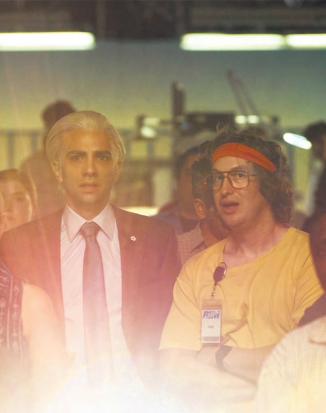
The film takes half its runtime to settle into a groove: early humour veers dangerously close to cringe, whereas the balance of goofy and deadpan suits the pacing once the phone launches on the market. History knows which way these heightened stakes will turn, and callbacks and foreshadowing around this inevitable car crash work better in visual references than they do in dialogue. The target of Johnson’s affection, ire, and jokes blur. Hindsight is 20/20, as a clip of Steve Jobs’ iPhone launch demonstrates; one wishes BlackBerry was not so keenly aware of this. [Carmen
Paddock]Released 6 Oct by National Amusements; certificate 15
October ushers in The Capitals, an exciting new collaboration in lighting by Mirrl and Half Year Studio, celebrating two of Glasgow’s most iconic historic designers –Alexander ‘Greek’ Thomson and Charles Rennie Mackintosh
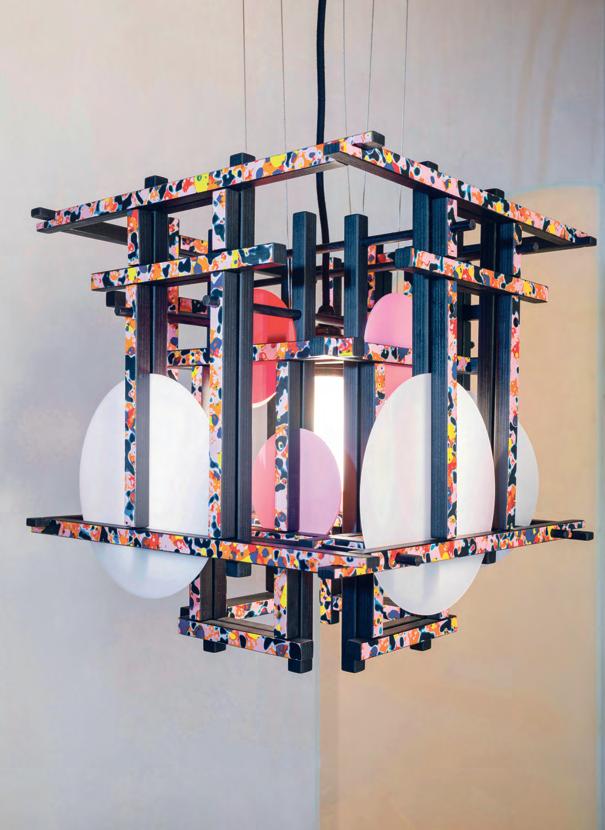
Words: Stacey Hunter
For a country that exists in near darkness for much of the year, it’s surprising that lighting design doesn’t feature more highly in the Scottish design scene. All the more reason, then, to sit up and pay attention to this most distinctive and experimental lighting series. Capitals is a collaboration between Glasgow designers Mirrl – maximalist manufacturers of resilient, colourful patterned surfaces – and Half Year Studio, led by David Ross, a designer who specialises in environmentally responsible materials and methods of production. Together they have created a series of interior pendants which diffuse light through a structure of interconnecting timber slats featuring Mirrl’s eponymous surface material. The design references both the classical architecture which influenced Alexander Thomson’s work and Mackintosh’s interpretation of Japanese structure.
“Initial inspiration for the project came from the ornamentation of an understated Alexander ‘Greek’ Thomson tenement in Glasgow’s Southside, just minutes from our workshop. This was used by David Ross to inspire a series of risograph prints celebrating Glasgow’s built heritage, before being re-considered – this time in a three-dimensional sense,” says Mirrl’s Simon Harlow
As GSA alumni, it seems natural that the designers would refer to archival images of The Glasgow School of Art’s interiors and library as a key source of inspiration, as well as drawing on their own personal memories of the ‘Mack’ building.
“I first met Simon Harlow and Lewis Harley (of Mirrl) while researching new and traditional crafts across the West of Scotland. After finding out about the roots of their practice, which emerged from a form of traditional Japanese
lacquering, I was reminded of Charles Rennie Mackintosh and how strongly his designs were influenced by Japanese art and craft,” says Ross.
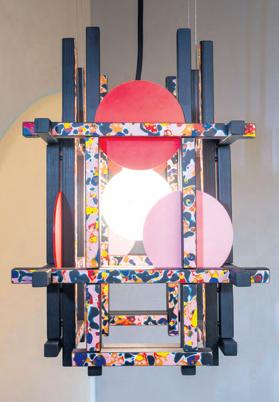
The series was given the name Capitals in reference to the column capitals of the classical architecture which influenced Alexander Thomson. As with the columns of classical architectural order, the pendants represent a series of forms of increasing complexity, resulting in a visual grammar which can be used to differentiate between the functions of interior space or to create hierarchies in public settings.

Decorative elements are predominantly formed using narrow strips of Mirrl’s highly patterned surface material, so the opportunity to create new versions using offcuts offers a sustainable production method for future designs. The series employs a standardised construction process that allows for a variety of sizes and shapes to be produced. Individual pendants can be produced in any Mirrl pattern, or – in collaboration with the Mirrl studio – in unique colourways to suit new or existing interiors for both domestic and hospitality contexts.
At the core of each pendant is a small bulb which sits within a simple structure formed of four diffuser-frames. Using a minimal number of components, the small pendant can be added to with further diffuser-frames – a simple method of increasing scale and visual complexity for larger spaces. For the largest size in the series, a further four diffuser-frames can be added, assembling the design to its fullest form, creating an arresting statement piece, which casts intriguing light and shadow.
The Capitals pendant used in a variety of ways either in pairs, as three forms or individually would perfectly suit a bar or restaurant interior, as well as offering an atmospheric statement to a more minimal living room, dining room or commercial space.
“We’re so pleased to launch this collaboration. Capitals has taken a pleasingly full circle journey, around Glasgow and around the globe, from 3D architectural ornament, to 2D patterns, to new 3D expressions of Glasgow. We wanted to celebrate a particular period of the city’s history when it showed its confidence through design and architecture – that’s what the Capitals series means to us.”
Capitals are available for purchase; for bespoke enquiries, contact Half Year Studio
mirrl.com
half-year-studio.com localheroes.design @mirrl_ltd @davidrosssss @localheroesdesign
A well-known face in Edinburgh pizza returns in Leith, with new digs and some excellent new ideas


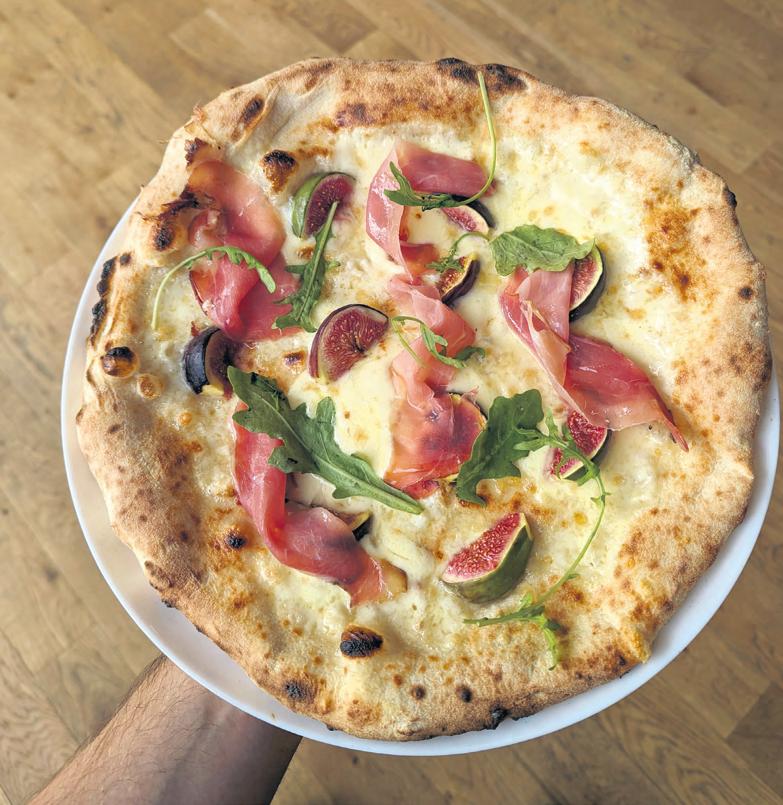
148
Mon-Thu 5-10pm, Fri-Sat 1210pm, Sun 12-4.30pm sanciros.com
New homes mean new starts, a chance to spread your wings, to make big dramatic changes before everything has the chance to settle. It’s true in life (hello new and returning students, please do pick up this magazine every month) and it’s true in pizza. After half a decade at the fantastic Pizzeria 1926 in Dalry firing out exceptional Neapolitan pizzas, Ciro Sartore has set up shop at the opposite side of central Edinburgh, in a unit of the Stead’s Place block on Leith Walk.
San Ciro’s is a new place with some new ideas, and an all-new ambience – all of which is to say that it’s a bit bright in here. The decor is surprisingly full-on; rich blue walls, wooden chairs painted canary yellow, lightbulbs so strong they could burn a hole in the table. There’s a wall covered in a piece of SSC Napoliinspired graffiti art because there’s some stuff that comes along with you in a big move, such as the family’s love for the azzuri
1926 is a standard-bearer for excellent, classic pizza – the only Scottish member of the AVPN, or ‘True Neapolitan Pizza Association’ – and San Ciro’s follows much the same formula but with some genuinely exciting innovations. The Gamberi (£7) is a classic starter of shallow-fried prawns with lemon, except these head-on bad boys look like they could sink a ship if they put their mind to it. Massive lads. Big units. Delicious prawns.
Similarly, a Melanzane (£12) is a classic pizza, but this is an elevated example – the aubergine is in perfectly soft and seemingly skinless matchsticks, and little blobs of seasoned ricotta are dotted around the place. It looks just lovely, plus no more getting bits of aubergine skin stuck in your teeth! The dough is fantastically light and savoury, the whole place smells faintly of burning wood, and the kitchen is seemingly working on fast-forward with pizzas flying around all over the place – all as it should be, then every so often something comes past that is genuinely surprising or massively exciting.
Something like the Porchetta pizza (£12.50). Mozzarella, juicy juicy pork belly, roasted potato, honey, and a pork crackling dust. They took the crunchy, salty side of a pork belly
and powderised it, then sprinkled it on top of a big load of cheese. This isn’t the kind of thing I ever recall seeing at 1926, but it is an absolute banger. For one thing, it’s a perfect balance of sweet and savoury, which is to say ‘just enough honey so that you know it’s there’. That dust is impressively crunchy and impossibly salty, so the whole thing has that popping candy/Rice Krispies effect of sneaking up on you with a big crunch when you least suspect it. Clearly, this is the work of someone who’s having some fun with it. The doughnuts (£5.50) are little irregular balls of salty pizza dough with a Nutella-packed dip, but covered in a level of sugar that would have Willy Wonka telling you to take it down a notch. The whole
Words: Peter Simpson
menu is short and to the point, the wine is delicious, the lights are incredibly bright but if you come in the daytime you won’t notice and even if you do you won’t mind. When striking out on your own, you need a solid idea of what you want, and to give yourself space to try new things. San Ciro’s seems to be a good chunk of the way there, with some new ideas that might just make it into our own personal pizza histories before too long.
Supposing Daisy Lafarge’s Lovebug were a conventional account of incipient desire – or, more sweetly put, supposing it were a love story – it might feel appropriate to cast the author’s chance introduction to the term ‘zoonoses’ as the meet-cute. For without the pull of that unfamiliar word and Lafarge’s grappling with the pathogenic world that it disinters, Lovebug might not have come to be.
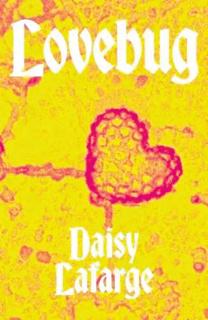
However, such a causal reading of Lafarge’s work is, while understandable, largely inadvisable. Indeed, the author herself cautions the reader against devotion to overly convenient “origin stor[ies]”, building a case instead for an outlook rooted in “irreconcilability”. For Lovebug, although about love, is no love story: so much “indeterminate matter”, so many “latent monstrosities”, so much “material contagion” across space, time and species is found in it. A lithe and lively work, Lovebug does not obey the codes of its received genre – the familiar essay – nor does it fall in step with the tread of contemporary literary argumentation. It does, however, embrace abjection and, with it, the uneasy unions of the sultry, the sacrificial and the somatic. And, in this way, Lafarge commandingly presents love as a “self-undoing”.
All told: Lovebug – the dexterous meditation on the invisible entities that bind, blur and bloom within, without and between us – demands to be read and be delighted in. Prepare to be bewitched and to ask how to still a beating heart.
[Tara Okeke] PeninsulaIt’s rare that I have to close a book and take a few deep breaths before continuing reading – in a twisted way, I pride myself on my tolerance for extremity. I get the sense that Alison Rumfitt would view that as a challenge.
Her latest novel Brainwyrms follows Frankie, a recovering victim of transphobic domestic terrorism, and Vanya, a mysterious sub hiding a parasite kink, as the conspiracies which lie beneath their turbulent relationship bubble up and consume them both. It is not so much a love story but a story of how misunderstanding, shame and trauma can plague queer dating, and how belonging to the same niche fetish community does not preclude causing harm.

Rumfitt’s 2021 debut Tell Me I’m Worthless established her as an exciting new voice in transgressive queer horror, where she held up a cracked mirror to the rising tide of facism and transphobia in the UK. Brainwyrms tackles similar topics in a different register – it’s wry and playful, outright funny at points, and the murderous cabal of infested TERFs uncovered by Frankie have the quality of cartoon villains.
Despite this, where Tell Me I’m Worthless was viscerally scary, Brainwyrms is downright nauseating, toeing the line between subversion and a test of endurance. Rumfitt seems to goad the reader into putting the book down, walking away, but her frenetic prose keeps you hooked.
[Paula Lacey]Following Milk Fed and The Pisces, Melissa Broder’s third novel, Death Valley, sees a woman arrive at a motel in the Californian desert, where she’s hoping to escape from the realities of her life for a little while: a comatose father in the ICU, a chronically ill husband who is becoming more and more reliant on her, and a looming book deadline.
Having purportedly taken this solo trip to work on her next novel, Broder’s meta-protagonist ventures out on a hiking trail where her path is blocked by a huge saguaro cactus, one that shouldn’t — and, as the motel staff insist, almost certainly doesn’t — exist in California. She climbs inside and is confronted by her father as a child, smoking and listening to records. If you thought you were getting a straight-up survivalist story, think again. Intrigued, she returns to the cactus day after day, eventually getting herself lost in her search for it. The second half of the novel becomes a fever dream, with friendly (and unfriendly) rocks for company, a desperate rabbit-chase, and surreal visions inside the husk of a cactus.
Death Valley explores different facets of grief and loss, and of confronting ideas you might prefer to avoid. Despite the heavy subject matter, Broder’s writing is sharp and darkly funny, blurring reality and imagination perfectly, and balances a protagonist who is both excruciatingly narcissistic and cringingly self-aware. [Terri-Jane Dow]

Very little can be taken for granted in Marie NDiaye’s quiet psychological thriller. A cast of obscure characters surrounds the unreliable Maître Susane, a middle-aged lawyer whose life seems to unravel as she accepts representing Marlyne Principaux, a woman on trial for the murder of her own children. What consumes Maître Susane is not the gruesomeness of the case as much as the inescapable feeling that she has met the woman’s husband before, decades earlier, on a night that defined the course of her life. But who is Gilles Principaux to her?
Translated from the French by Jordan Stump, Vengeance is Mine is an exploration of memory, trauma and personal relationships through the lense of a shattered psyche. Although the resulting picture is blurry at best, a few elements distinctly stand out: an acute representation of familial and cultural dynamics, as well as a latent psychological complexity found in nearly every character, which strains and brings the sharp edges of these dynamics into focus, even if fleetingly. While there is a certain hypnotic quality in the dreamlike narration, there is also a level of detachment from the story that results in lack of momentum as the plot moves towards an unsatisfactory conclusion. The narrative distance might be too great to avoid a sense of monotony in what could be an equally profound but more thrilling thriller. [Venezia Castro]
Cipher Press, 6 Oct

Bloomsbury, 24 Oct
Quercus, 26 Oct
London-based rising stand-up star Kyrah Gray gives us her Dream Gig, heavily influenced by the iconic comedy show which made Black US comics household names
Illustration: Mark Faulkner
My favourite shows so far have been the ones with fewer people in the crowd. You’d assume that kind of gig would be any comedian’s worst nightmare but they really help you to see how strong your jokes are and validate your talent.
One particular gig immediately springs to mind from earlier this year: a work-in-progress underneath a pub in Shoreditch with Northern Irish-Malaysian comic Peter Rethinasamy. There couldn’t have been more than 15 people in the room. I had a few people in the audience who knew me from social media, but honestly, most of them had no idea who I was. Also in the crowd were a couple that came to the show for a date night and afterwards, the lady approached me and told me that her husband had a crush on me and wanted a picture. Honestly I was laughing for a good 30 seconds out of shock; but they were so lovely, loved the show and made me really happy that they chose to come and spend their evening listening to me test out jokes instead of your classic dinner-cinema-date combo.
Another favourite was a live recording I did for Mo Gilligan’s Spotlight podcast. The crowds at Up The Creek Comedy Club are always amazing but this show in particular definitely lit a fire in me.
I didn’t actually know what to expect from the gig because I’d never done a live podcast recording before but it was just a really nice experience. I performed a set and we spoke about everything from The Fast and The Furious to how we started comedy and I just felt so comfortable there. Especially because I was alongside comics that I’ve had the pleasure of working with before. It’s also really nice to work with people that have inspired your journey – it really does push your performance without you even realising it. It was definitely a moment where I felt like I had finally proven myself.
For my Dream Gig, I’ve got a realistic option and a nonrealistic option…so you’re getting both:
My super-fantasy gig would take place on a private island in the middle of nowhere. Nobody has any signal so the audience (or the other acts) can’t scroll on their phones for the
whole thing; they’re actually forced to listen and take in the moment (a real dream). Instead, what we do have is access to unlimited cocktails, good food, nice weather (hot with a breeze every so often) and of course, sensational comics.
My slightly more realistic option would of course be the Eventim Apollo in Hammersmith. I feel like that’s a stepping stone for any comic and having the opportunity to perform on the stage that created some of my favourite comedians would obviously be THE dream.
My dream lineup regardless of the venue would be: Bernie Mac, Dave Chapelle, Mo’nique, Kevin Hart, Eddie Murphy and Lee Evans. Basically a mixture of the comics I grew up on, have been influenced by and still love to this day.
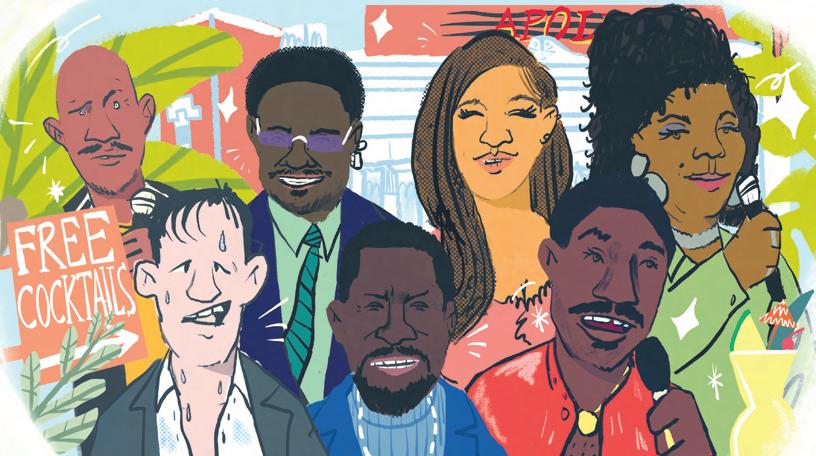
Like most kids, I used to dream of going to the US so it’s unsurprising that most of my favourite comics are American. I grew up glued to Def Comedy Jam. There was something extremely raw about the show: it was just straight-up jokes at everyone’s expense, nobody was safe and it felt like a whole different world that I was desperate to be a part of. I also think it highlighted the lack of diversity on British television. I didn’t have a lot of people to look up to on the TV screen, so it really does feel that much more meaningful to be a part of the shift happening in diversifying the entertainment industry and paying homage to those that actually opened the door for comics like me to get through.
I also loved watching Lee Evans all the time with my mum so it’s only right I add him to my dream lineup too.
It’s honestly heartbreaking that I’ll never get the opportunity to see some of these comics perform live (if I have to pay Lee Evans to come out of retirement…I absolutely will) but luckily for us, all of them have timeless specials that I will gladly force my children to watch on repeat.
Kyrah Gray performs as part of COBO: Comedy Shutdown Black History Month Special on Sun 22 Oct at Monkey Barrel Comedy (4.30pm) and Glee Club Glasgow (7pm), £15-18. She also performs at Glasgow Glee on Fri 27 and Sat 28 Oct as part of their weekend shows
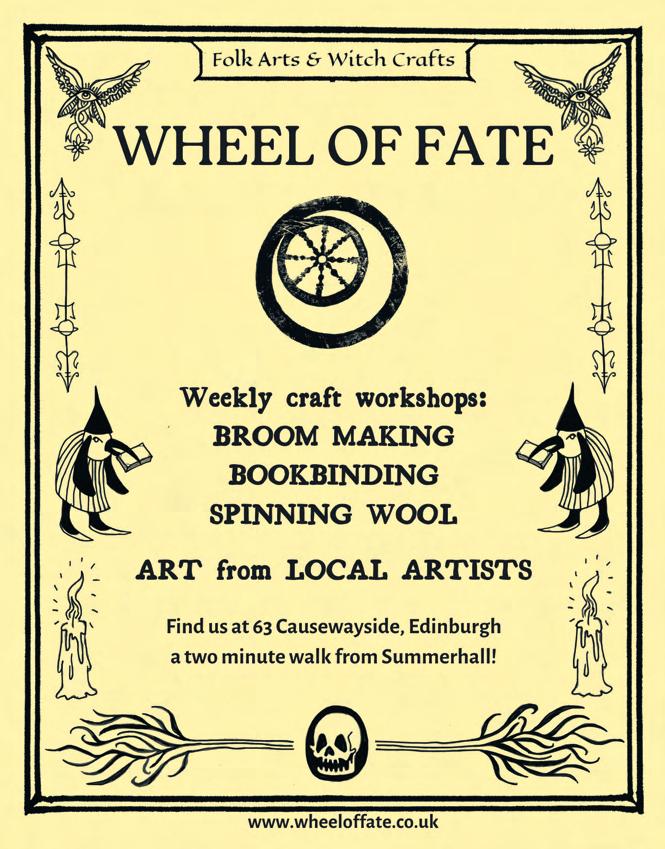
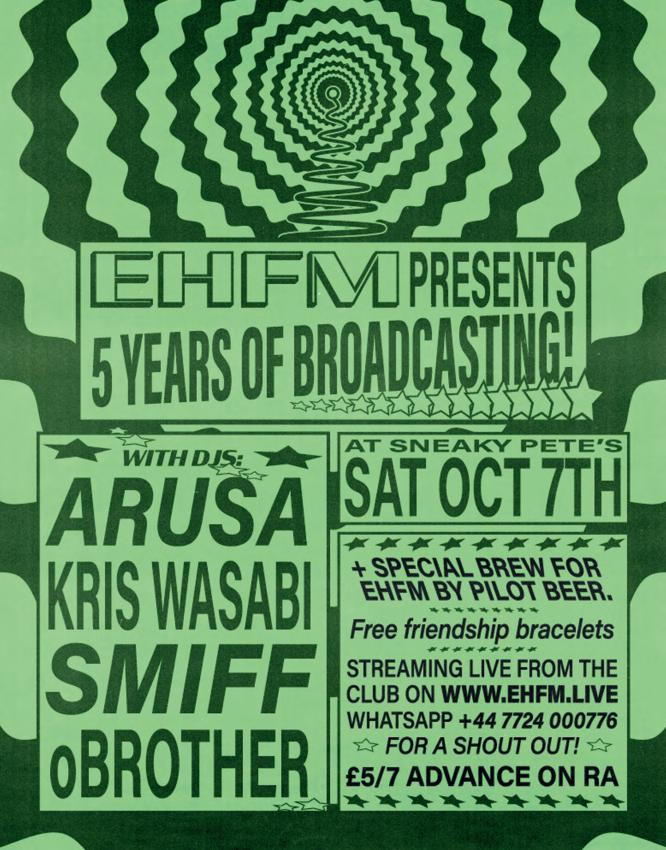


Tue 03 Oct
EN ATTENDANT ANA
BROADCAST, 19:00–22:00
Indie pop from Paris.
CONSTANT FOLLOWER (RICK REDBEARD) THE GLAD CAFE, 19:30–22:30
Indie folk from Stirling.
5 SECONDS OF SUMMER
THE OVO HYDRO, 18:30–22:00
Pop rock from Sydney.
LA PRIEST
THE HUG AND PINT, 19:00–22:00
Alt indie from the UK.
Wed 04 Oct
DECO (ADAM & THE REGENTS)
KING TUT’S, 20:00–22:00 Pop from London.
NANOBOTS
BROADCAST, 19:00–22:00
Electronica from Glasgow.
ASH VS THE SUBWAYS
BARROWLANDS, 19:00–22:00 Rock.
SIMEON WALKER
THE GLAD CAFE, 19:30–22:30
Neo-classical piano.
NOVA DEUS
THE HUG AND PINT, 19:00–22:00
Indie from Glasgow.
Thu 05 Oct
KING TUT’S: THE HUT SESSIONS
KING TUT’S, 20:00–22:00
Eclectic lineup.
LAUREN MAYBERRY
SWG3, 19:00–22:00
Synth pop from Scotland.
NICK HARPER
BROADCAST, 19:00–22:00
Indie from the UK.
THE WATERBOYS BARROWLANDS, 19:00–
22:00
Folk rock from the UK and Ireland.
MIKIE HENDERSON
THE OLD HAIRDRESSERS, 19:00–22:00
Country.
FREDRIK RASTER (ALASDAIR ROBERTS)
THE GLAD CAFE, 19:30–22:30
Folk from Norway.
NEW ORDER (CONFIDENCE MAN)
THE OVO HYDRO, 18:30–22:00 Rock from the UK.
JESSE TERRY
THE RUM SHACK, 19:30–22:00
Americana from the US.
GENEVIEVE DAWSON
THE HUG AND PINT, 19:00–22:00
Indie from Edinburgh.
GLASGOW STREETSOUND PRESENTS... (VICKIE
PAXTON + EMILY
EVANS + BELLY RACHEL + PAUL
MULLEN) ROOM 2, 19:00–22:00
Eclectic lineup.
Fri 06 Oct
FEROCIOUS DOG
ORAN MOR, 19:00–22:00
Punk folk.
JOHN POWER
KING TUT’S, 20:30–22:00
Pop from the UK.
HEAVY LUNGS BROADCAST, 19:00–22:00
Punk noise from Bristol.
KING KRULE BARROWLANDS, 19:00–22:00
Alt from the UK.
THE NORTHERN BOYS STEREO, 19:00–22:00
Hip-hop from the UK.
PETE SMITH (SCOTT & THE EEJITS + SASHA
KALOHERIS + SINEAD
TAIT) THE FLYING DUCK, 19:00–22:00
Singer-songwriter from Dundee.
BLACK STONE
CHERRY
ST LUKE’S, 19:00–22:00
Rock from the US.
GLASGOW AMERICANA FESTIVAL (KIM EDGAR + EMMA
JANE) THE GLAD CAFE, 19:30–22:30
Folk pop from Edinburgh.
TUMFY & THE DEECERS
DRYGATE BREWING CO., 19:00–22:00
Indie from Peebleshire.
THE TINO BAND (JAPAN REVIEW +
HANK TREE)
THE RUM SHACK, 19:30–22:00
Alt rock from Glasgow.
BENNETT & WILSON
ROOM 2, 19:00–22:00
Americana from Glasgow.
Sat 07 Oct
THE REYTONS O2 ACADEMY GLASGOW, 19:00–22:00
Indie from Yorkshire.
FALASGAIR
KING TUT’S, 20:30–22:00
Folk from the Isle of Skye.
THE SUPERSUCKERS (THE WARNER E.
HODGES)
CATHOUSE, 19:00–22:00
Rock from the US.
MAKE FRIENDS
BROADCAST, 19:00–22:00
Indie punk from Bristol.
SLOTH RACKET (L +
ALI ROBERTSON /
NICHOLA SCRUTTON
DUO + DOME RIDERS)
THE OLD HAIRDRESSERS, 19:00–22:00
Indie from the UK.
YPSMAEL (ELONIE + ALI ROBERTSON + TOM MUDD)
THE OLD HAIRDRESSERS, 20:00–22:00
Experimental from the UK.
THE COALTOWN DAISIES (THE RAIN OF ANIMALS)
CCA: CENTRE FOR CONTEMPORARY ART, 16:00–22:00
Folk from Scotland.
LYNNE HANSON (JOHN MORGAN)
CCA: CENTRE FOR CONTEMPORARY ART, 20:00–22:00
Americana from Canada.
A NEW INTERNATIONAL
THE GLAD CAFE, 14:30–17:30
Indie folk from Scotland.
A NEW INTERNATIONAL (FULL BAND SHOW) (+
CHIARA BERARDELLI) THE GLAD CAFE, 19:30–22:30
Romantic indie-folkfrom Scotland.
TOKKY HORROR (GOTH GF + SCOTTISH GABBER PUNK) THE HUG AND PINT, 19:30–22:00
Hardcore from the UK.
THE MAKE-UP ROOM 2, 19:00–22:00
Indie punk from Washington DC.
Sun 08 Oct
FUNERAL FOR A FRIEND (DASHBOARD
CONFESSIONAL)
O2 ACADEMY GLASGOW, 19:00–22:00
Post-hardcore from Wales.
PASTEL KING TUT’S, 20:00–22:00
Shoegaze from the UK.
KK’S PRIEST SWG3, 19:00–22:00
Heavy metal from the UK.
BRAND NEW FRIEND BROADCAST, 19:00–22:00
Indie from Castlerock.
TOM CLARKE
ST LUKE’S, 19:00–22:00
Indie rock from the UK.
CATE KENNAN (KOOL MUSIC + COMPETITION)
THE OLD HAIRDRESSERS, 19:30–22:00
Experimental from LA. ANTHONY TONER + KATIE WHITTAKER
THE GLAD CAFE, 15:30–18:00
Singer-songwriter from Northern Ireland.
ROD PICOTT + NICK
THURTELL
THE GLAD CAFE, 19:30–22:30
Americana lineup.
THE POPGUNS
THE HUG AND PINT, 19:30–22:00
Indie from Brighton.
Mon 09 Oct
DON TOLIVER
O2 ACADEMY GLASGOW, 19:00–22:00
Hip-hop from Houston. HARD -FI SWG3, 19:00–22:00
Indie rock from the UK.
THE LAST DINNER PARTY SWG3, 19:00–22:00
Indie from London.
UNCLE FRANK STEREO, 19:00–22:00 Rock.
GARY NUMAN ST LUKE’S, 19:00–22:00
Rock from the UK.
JEAN PAUL AGAMBI
QUARTET
THE OLD HAIRDRESSERS, 19:30–22:00
Jazz punk from Europe.
Tue 10 Oct
THEO KATZMAN
ORAN MOR, 19:00–22:00
Funk pop from the US.
MODENA CITY
RAMBLERS KING TUT’S, 20:30–22:00
Folk from Ireland.
MAHALIA
SWG3, 19:00–22:00
Soul from the UK.
BLUES LAWYER (DANCER + MAZ & THE PHANTASMS) THE GLAD CAFE, 19:00–22:00
Pop rock from Oakland.
Wed 11 Oct
NF
O2 ACADEMY GLASGOW, 19:00–22:00
Rap from Michigan.
CATE (ELLE COVES)
KING TUT’S, 20:00–22:00
Pop from Canada.
GHOSTWRITERS + ERIN VIVERS + ORINANA SETZ NICE ‘N’ SLEAZY, 19:00–22:00
Eclectic lineup.
THOSE DAMN CROWS
SWG3, 19:00–22:00
Rock from Wales.
SPYRES
SWG3, 19:00–22:00
Indie punk from Scotland.
DAYTIME TV ST LUKE’S, 19:00–22:00
Alt from Scotland.
ICHIGO EVIL (HOWIE REEVE)
THE GLAD CAFE, 19:30–22:30
Alt pop from Japan.
BASS DRUM OF DEATH
ROOM 2, 19:00–22:00
Garage rock from the US.
Thu 12 Oct
NEON WALTZ
ORAN MOR, 19:00–22:00
Indie rock.
CORELLA (CHILLI JESSON)
KING TUT’S, 20:30–22:00
Indie from Manchester.
THE JAPANESE HOUSE
SWG3, 19:00–22:00
Indie pop from the UK.
ALFIE JUKES
SWG3 19:00–22:00
Pop from the UK.
CHASE PETRA BROADCAST, 19:00–22:00
Pop rock from California.
SAKURA (WHITNEY
KING AND THE RANTS) STEREO, 19:00–22:00
Alt rock from Glasgow.
THE FICTION (SHEER)
THE FLYING DUCK, 19:00–22:00
Alternative rock from Shetland.
THE SHERLOCKS ST LUKE’S, 19:00–22:00
Indie rock from Yorkshire.
VLMV
THE GLAD CAFE, 19:30–22:30
Composer from London.
NIHILOXICA
THE RUM SHACK, 19:30–22:00
Electronica from Uganda.
SHAMIR
THE HUG AND PINT, 19:30–22:00
Indie from Philadelphia.
Fri 13 Oct
STONE FOUNDATION
ORAN MOR, 19:00–22:00
Psych soul rock.
PICTURE THIS
O2 ACADEMY GLASGOW, 19:00–22:00 Rock from Ireland.
OVERMONO SWG3, 19:00–22:00
Electronica from Wales.
GRANDMASTER FLASH
SWG3 19:00–22:00
Hip-hop from Barbados. STARBENDERS CATHOUSE, 19:00–22:00
Rock from Atlanta.
MOON PANDA
BROADCAST, 19:00–22:00
Alt indie from San Diego.
GLOK (ANDY BELL) STEREO, 19:00–22:00
Electronica.
MAX COOPER ST LUKE’S, 19:00–22:00
Electronica from London.
CORTNË
THE GLAD CAFE, 19:30–22:30
Alt folk from Scotland.
BOYS BAND
DRYGATE BREWING CO., 20:00–22:00
Pop from Poland.
SEMISPECIFIC
ENSEMBLE (SUPER SPREADERS + BIG
FARMER)
THE RUM SHACK, 19:30–22:00
Experimental from Glasgow.
COUSIN TONY’S
BRAND NEW FIREBIRD
THE HUG AND PINT, 19:30–22:00
Indie from Melbourne.
Sat 14 Oct
KEZIA GILL ORAN MOR, 19:00–22:00
Folk rock from Nottingham.
LOW RISE (HAZY SUNDAYS)
KING TUT’S, 20:30–22:00
Indie rock from Edinburgh.
KRISTIN HERSH MONO, 20:00–22:00
Rock from the US.
SOMEONE
SWG3 19:00–22:00
Pop from the Netherlands.
MUNICIPAL WASTE (GEL + UNDEATH)
CATHOUSE, 19:00–22:00
Thrash metal from Virginia.
WESTERMAN BROADCAST, 19:00–22:00
Electro folk.
CORY WONG
BARROWLANDS, 19:00–22:00
Pop from the US.
POP MUTATIONS ALL-DAYER (BIS + APOSTILLE + LUNGLEG + AALIYAH ENYO + EYVE + GOOD BODY )
STEREO, 19:00–22:00
Eclectic lineup.
TELEKINEPHEWS (SINGLE LAUNCH) (FEART. + SCUNNURT + PARK SAFELY + SOUL
COLLECTIVE + D -M)
THE FLYING DUCK, 19:00–03:00
Post-hardcore punk from Glasgow.
THE XCERTS ST LUKE’S, 19:00–22:00
Pop rock from the UK.
LORAINE JAMES
THE BERKELEY SUITE, 23:00–03:00
Electronica from London.
DEACON BLUE
THE OVO HYDRO, 18:30–22:00
Pop rock from Scotland.
GASPER NALI
THE HUG AND PINT, 19:30–22:00
Roots from Malawi.
THE SONICS
ROOM 2, 19:00–22:00
Garage rock from the US.
Sun 15 Oct
LAVINIA BLACKWALL (BIANCA JAMES + RILEY )
NICE ‘N’ SLEAZY, 19:00–22:00
Folk rock from Glasgow.
BAXTER DURY
QUEEN MARGARET UNION, 19:30–22:00
Indie from the UK.
KIDS IN GLASS HOUSES
SWG3, 19:00–22:00
Rock from Wales.
JARED JAMES
NICHOLS
CATHOUSE, 19:00–22:00
Blues rock from Wisconsin.
SKINNY PELEMBE BROADCAST, 19:00–22:00
Avant pop from Doncaster.
YOLO MANOLO (THE UNPERSON)
THE OLD HAIRDRESSERS, 19:30–22:00
Rock from Glasgow.
PIERRE SCHRYER & SEÁN GRAY
THE GLAD CAFE, 19:30–22:30
Folk from Canada and Scotland.
BLUE GIANT ORKESTAR
THE RUM SHACK, 19:30–22:00
Experimental from Europe.
ANDY IRVINE
THE HUG AND PINT, 19:30–22:00
Folk from Ireland.
Mon 16 Oct
JAZMIN BEAN (SALVIA)
KING TUT’S, 20:00–22:00
Alt indie from the UK.
PARALLELS (SLACKMACHINE)
NICE ‘N’ SLEAZY, 19:00–22:00
Synth pop from Canada.
BELLAH MAE
SWG3 19:00–22:00
Pop from the UK. RIVAL SONS
BARROWLANDS, 19:00–22:00
Rock from the US.
GAVIN DEGRAW
OLD FRUITMARKET GLASGOW, 19:30–22:00
Indie folk from the US. LUKE COMBS THE OVO HYDRO, 18:30–22:00
Country from the US.
Tue 17 Oct
MAISIE PETERS
O2 ACADEMY GLASGOW, 19:00–22:00
Pop from the UK. WILL HAVEN STEREO, 19:00–22:00
Noise metal from California. UR.FRND (OROPENDOLA + CHARLOTTE JACOBS) THE FLYING DUCK, 19:00–22:00
Electronica from Glasgow. THE ROYSTON CLUB ST LUKE’S, 19:00–22:00 Alt indie from Wales.
JAZZ AT THE GLAD (REBECCA VASMANT) THE GLAD CAFE, 19:30–22:30
Jazz.
Wed 18 Oct
LARKIN POE
O2 ACADEMY GLASGOW, 19:00–22:00 Roots rock from the US. FUTURE UTOPIA KING TUT’S, 20:30–22:00
Dance from the UK. BRASS AGAINST SWG3, 19:00–22:00
Rock from the US. CULT OF LUNA (GGGOLDDD + SLOW CRUSH) OLD FRUITMARKET GLASGOW, 19:00–22:00
Post-metal from Sweden. INDIA ELECTRIC CO. THE GLAD CAFE, 19:30–22:30
Folk pop.
S CLUB
THE OVO HYDRO, 18:30–22:00
Pop from the UK.
AMY MONTGOMERY THE HUG AND PINT, 19:30–22:00
Singer-songwriter from Ireland.
A TRIO OF TENNESSEE
WILLIAMS
7 OCT, 7:30PM –
10:30PM
Three of Tennessee Williams’ lesser known works get a new staging.
PICKLED REPUBLIC
13-14 OCT, 7:30PM –
10:30PM
A surreal theatrical cabaret for adults with puppetry, masks and poetry.
Festival Theatre
SISTER ACT
2-7 OCT, 7:30PM –
10:30PM
Disco diva goes undercover in this live musical version of Whoopi Goldberg’s starmaking turn.
DRACULA: MINA’S RECKONING
11-14 OCT, 7:30PM –
10:30PM
A contemporary retelling of Bram Stoker’s classic, told through the eyes of a woman at an Aberdeenshire psychiatric hospital.
SCOTTISH BALLET:
TWICE-BORN
20-21 OCT, 7:30PM –
10:30PM
A brand new commission by award-winning choreographer Dickson Mbi.
TREASON THE MUSICAL
25-28 OCT, 7:30PM –
10:30PM
The world premiere of an explosive new musical about the 1605 Gunpowder Plot.
Royal Lyceum Theatre
GROUP PORTRAIT IN A SUMMER LANDSCAPE
4-14 OCT, 7:30PM –
10:30PM
An intelligent, powerful exploration of political and personal grief, set in a Perthshire country house during the 2014 referendum.
FOR US GIRLS OF COLOUR MAKING
HALF NOTES INTO SONG WHEN THE HAAR IS ALL
26 OCT, 7:30PM –
10:30PM
A series of poetic responses to Ntozake Shange's iconic choreopoem cocreated by Hannah Lavery.
The Edinburgh Playhouse
DISNEY’S ALADDIN
24 OCT-18 NOV, TIMES
VARY Discover a whole new world with this magical reinterpretation of the Disney classic.
The Studio
MY DORIC DIARY
4-28 OCT, TIMES VARY
A Scottish jukebox musical about holding on and letting go.
BOY’S KHAYA: TAVAZIVA DANCE
7 OCT, 7:30PM –10:30PM
A powerful mix of contemporary, ballet and African dance exploring ideas of post-colonialism and injustice.
Traverse
Theatre DISCIPLES
5-7 OCT, 7:30PM –10:30PM
A dynamic performance of poetry-led movement and music exploring ideas of faith and community.
MOORCROFT
24-25 OCT, 7:30PM –10:30PM
A blistering, forceful examination of working class masculinity.
BATTERY PARK
26-27 OCT, 7:30PM –10:30PM
A funny, earthy mystery about a Britpop band that disappears overnight.
A PLAY, A PIE AND A PINT: THE SHERIFF OF KALAMAKI
3-7 OCT, 1:00PM –2:00PM
A comedy-drama about Brits abroad and living the supposed good life.
AND... AND... AND...
6-7 OCT, 8:00PM –10:30PM
An urgent coming-of-age story examining a generation brought up in climate anxiety.
A PLAY, A PIE AND A PINT: STAY
10-14 OCT, 1:00PM –2:00PM
A two-hander musical about grief and the passing of time.
A PLAY, A PIE AND A PINT: MEETING WITH THE MONK
17-21 OCT, 1:00PM –2:00PM
A chance encounter with a monk changes one man’s life.
I, DANIEL BLAKE
17-21 OCT, 7:30PM –10:30PM
A remarkable adaptation of the Ken Loach film confronting decades of British austerity.
WOMAN WALKING
20-21 OCT, 8:00PM –10:30PM
A new play by acclaimed Scottish playwright Sylvia Dow imagines an encounter between Nan Shepherd and a modern-day woman.
A PLAY, A PIE AND A PINT: DISFUNCTION
24-28 OCT, 1:00PM –2:00PM
A dark comedy about a game show that tears a family apart.
MOORCROFT
27-28 OCT, 7:30PM –10:30PM
A blistering, forceful examination of working class masculinity.
MARK THOMAS: ENGLAND & SON
13 OCT, 7:30PM –10:30PM
A blistering examination of class and empire told through a one-man play written especially for political comedian Mark Thomas.
DRACULA: MINA’S RECKONING
5-7 OCT, 7:30PM –10:30PM
A contemporary retelling of Bram Stoker’s classic, told through the eyes of a woman at an Aberdeenshire psychiatric hospital.
SPUTNIK
20-21 OCT, 7:30PM –10:30PM
Scottish Dance Theatre's choreographic showcase
SHOTPUT: TOTENTANZ
11-12 OCT, 7:30PM –10:30PM
Two dancers try - and failto create the perfect dance of death.
PLINTH
24-25 OCT, 7:30PM –10:30PM
Renowned theatremaker
Al Seed explores ideas of mythmaking and collective memory through statues.
CCA: Centre for Contemporary Art
RHONA MÜHLEBACH: DITCH ME
1 OCT-2 DEC, TIMES
VARY
A moving image work drawing on the history of the Antonine Wall in Scotland, transposing historical events into a new fictional world.
Compass
Gallery
CLEO MUSSI : BOTANICALS
7 OCT-3 NOV, TIMES
VARY Folkloric ceramic mosaics repurposing tableware to consider the social, cultural, and migratory history of herbs and plants.
David Dale
Gallery and Studios
BENEDIKTE BJERRE: HATCH
5-28 OCT, 12:00PM –
5:00PM
New exhibition by Copenhagen-based artist.
Glasgow Print Studio
STUART DUFFIN RSA: A REDDER SUN
6 OCT-18 NOV, 11:00AM –
5:00PM
A solo exhibition of etchings and mezzotint engravings exploring ideas of conflict and resolution.
GoMA
HELEN DE MAIN +
MANDY MCINTOSH: REPEAT PATTERNS
1-15 OCT, 11:00AM –
4:00PM
Using printmaking and works on paper exploring ideas of feminism and social reproduction.
BEAGLES & RAMSAY:
NHOTB & RAD
14 OCT-28 APR 24, 11:00AM – 4:00PM
Artist duo use life-size sculptures and video to create a flagship store interrogating ideas of consumerism and labour.
Six Foot Gallery
JO SUNSHINE + SU E
SIDE
3-13 OCT, 10:00AM –
5:00PM
Expressive, experimental artists who has travelled extensively with a deeprooted love of painting.
The Briggait
DAVID PAGE: HIGHLAND COLOURS
3-27 OCT, TIMES VARY
Paintings that immerse themselves in Highland terrain, exploring diverse natural forces like geological shifts, erosion, growth, and weathering.
Tramway
JASLEEN KAUR: ALTER
ALTAR
1-8 OCT, TIMES VARY
A new body of sculptural, sonic works that explore political mysticism and the possibilities of reimagining tradition and inherited myths.
BILLIE ZANGEWA: A
QUIET FIRE
1 OCT-28 JAN 24, TIMES
VARY
Figurative collages handstitched from fragments of raw silk challenging the social perceptions of Black women.
JAMES LUMSDEN: FUGAL PAINTINGS
7 OCT-1 NOV, TIMES
VARY
Bleached colour canvases explore ideas of light, depth and mark-making.
Arusha Gallery
CLAIRE PARTINGTON: WHEN THE ROCK WERE SOFT
1-29 OCT, TIMES VARY
Ceramic figures at the intersection between the folkloric and the contemporary, exploring ideas of femininity.
City Art Centre
SHIFTING VISTAS: 250 YEARS OF SCOTTISH LANDSCAPE
1 OCT-2 JUN 24, TIMES
VARY
Sweeping landscapes both classical and modern are drawn from the City Art Centre’s permanent collection.
WINDRUSH LEGACY CREATIVE REFLECTIONS
1 OCT-28 JAN 24, TIMES
VARY
An exhibition of poetry, prose and artwork made by people of Caribbean descent, co-curated by Scottish-Caribbean writers Jeda Pearl and Courtney Stoddart.
Collective Gallery
LIZA SYLVESTRE: ASWEETSEA
21 OCT-23 DEC, 10:00AM
– 5:00PM
Moving image and drawings exploring the complex boundaries of disability.
THOMAS ABERCROMBY: JOHN
21 OCT-23 DEC, 10:00AM
– 5:00PM
A collaboration with an all-working-class cast and crew to explore the intricate ties between family, grief and the multifaceted layers of social class.
Dovecot Studios
SCOTTISH LANDSCAPES: A NEW GENERATION
2-7 OCT, 10:00AM –
5:00PM
Ten recently graduated Scotland-based artists employ the landscape to interrogate issues of craftsmanship, colonialism, and sustainability.
SCOTTISH WOMEN ARTISTS: 250 YEARS OF CHALLENGING PERCEPTION
2 OCT-6 JAN 24
10:00AM – 5:00PM
Celebrating centuries of important artistic contribution from Scottish women artists.
MONARCHS OF THE GLEN
14 OCT-2 MAR 24, 10:00AM – 5:00PM
An exhibition exploring the ongoing cultural legacy of Monarch of the Glen, from shortbread to Schitt’s Creek and beyond.
Edinburgh Printmakers
THE FUTURE FLOW: FROM WHERE I STAND
1 OCT-3 DEC, 11:00AM – 4:00PM
Seven contemporary artists from India and Scotland exploring ideas of traditional and non-traditional storytelling.
Fruitmarket
LEONOR ANTUNES: THE APPARENT LENGTH OF A FLOOR AREA
1-8 OCT, 10:00AM –
7:00PM
Modernist sculptures drawing on the history of cork as a way of articulating the labour of invisibilised artists.
FLORENCE PEAKE: FACTUAL ACTUAL
21-29 OCT, 10:00AM –
6:00PM
Large vivid canvases are folded, dragged and suspended between five dancers, extending the relationship between dance and visual arts. After four performances on the opening weekend, the canvases remain suspended in the space.
Ingleby Gallery
NICK GOSS: SMICKEL INN, BALCONY OF EUROPE
4 OCT-16 DEC, 11:00AM – 5:00PM
Figurative paintings exploring dreamlike, figurative spaces.
National Gallery
YOUR ART WORLD
1 OCT-14 APR 24, TIMES
VARY
Community exhibition created by young people, examining the power of creative process.
GRAYSON PERRY: SMASH HITS
1 OCT-12 NOV, TIMES
VARY
The largest ever exhibition of Turner Prize-winning artist Grayson Perry, exploring his lifelong fascination with punk, sex and counterculture.
National Library of Scotland
BLOOD SWEAT AND TEARS: SCOTLAND’S
HIV STORY
1 OCT-2 DEC, TIMES VARY
Showcasing archival materials and oral histories, exploring the devastation and stigma of the HIV crisis in 1980s Scotland, as well as its emerging treatments.
National Museum of Scotland
BEYOND THE LITTLE BLACK DRESS
1-29 OCT, 10:00AM –5:00PM
Deconstructing the often radical history of the iconic fashion fit.
RISING TIDE: ART AND ENVIRONMENT IN OCEANIA
1 OCT-14 APR 24, 10:00AM – 5:00PM
An examination of our relationship to the natural environment told through responses to climate change by Indigenous Australian and Pacific Islander artists.
Out of
Blue Drill Hall INSIDE- OUTSIDER
12-19 OCT, 10:00AM –
5:00PM
Group exhibition created by mental health professionals who also have lived experience of mental health difficulties.
Royal Botanic Garden CONNECTING
HISTORIES
2 OCT-13 APR 24, 10:00AM – 6:00PM
An extraordinary survey of Indian botanical drawing.
Royal Scottish Academy RSA
FRANK POTTINGER: LANDSCAPES PLOTTED AND PIECED
1-15 OCT, TIMES VARY
An exhibition by acclaimed Scottish sculptor and printmaker. GRAEME TODD
1 OCT-5 NOV, TIMES
VARY
A retrospective by Scottish artist exploring the boundaries between real and imagined landscapes.
Scottish National Gallery of Modern Art
ALBERTA
WHITTLE: CREATE DANGEROUSLY
1 OCT-7 JAN 24, 10:00AM – 5:00PM
An immersive exhibition exploring compassion and collective care as a mode of anti-racist resistance.
DECADES: THE ART OF CHANGE 1900–1980
1 OCT-7 JAN 24
10:00AM – 5:00PM
A dramatic journey through 80 years of art and moments of significant artistic change.
Scottish National Portrait Gallery
MAKING SPACE: PHOTOGRAPHS OF ARCHITECTURE
7 OCT-3 MAR 24,
10:00AM – 5:00PM
Exploring the social footprint of architecture, and the ways people have documented it through the decades.
Stills MARKÉTA LUSKAČOVÁ
3-7 OCT, 12:00PM –
5:00PM
The first exhibition in Scotland dedicated to the work of Czech photographer Markéta Luskačová, focusing on her tender, intimate portraits of children.
Cooper Gallery
SIT-IN 3: ...BUT THERE ARE NEW SUNS
13 OCT-16 DEC, TIMES VARY
The third in Cooper Gallery’s ground-breaking five-chapter exhibition, and the first major exhibition in Scotland by the Turner Prize nominated artist collective The Otolith Group.
DCA: Dundee Contemporary
Arts
RACHEL EULENA WILLIAMS: HAIR AND BODY
1 OCT-19 NOV, TIMES
VARY
Bricolage paintings that take an expansive, subversive approach to ideas of representation and colour.
Generator Projects
RAY DOWNIE + LORNA KERR: WIGGLE ROOM
7-29 OCT, 12:00PM –5:00PM
Art becomes play in this interactive exhibition-cumplayground for all ages.
The McManus HIDDEN HISTORIES: EXPLORING EQUALITY, DIVERSITY AND INCLUSION IN DUNDEE’S ART COLLECTION
3 OCT-30 DEC, 10:00AM – 5:00PM
Exploring the McManus 20th-century collection through different positionalities, to examine the responsibility of the museum as institution in responding to history.
V&A Dundee TARTAN
1 OCT-14 JAN 24, 10:00AM – 5:00PM
A major new exhibition looking at the social, political, and aesthetic history of tartan.
Ahead of releasing her excellent new EP Big Red, Katie Gregson-MacLeod takes this month’s Q&A
What’s your favourite place to visit?
Loch Ness. Growing up so close, the whole family used to pitch up off one of the laybys on the road to Foyers on nice days. It’s a rocky beach, which feels really secluded. Barbecue, picnic, freezing cold swim. Nowadays when I’m home I make a point of going to Dores and seeing if the loch is any less frozen; the answer is always no.
What’s your favourite food?
Fish and chips. Nostalgic and crispy.
What’s your favourite colour? Red. Big.
Who was your hero growing up?
I was a squash player growing up so I was big on Nicol David, who was number one in the world when I was younger. When I was a teenager, maybe Tim Minchin. I was obsessed.
Whose work inspires you now?
Anyone who’s making music and writing words so genuine that it makes you feel that that artist could be making no other music and saying no other words.
What three people would you invite to your dinner party and what are you cooking?
Last night I made a vegan shepherd’s pie and it was really good in my opinion so I’m going to make that for everyone. I’d love to invite Stanley Tucci for his warm and calming aura, but I know he’s a chef so if he starts piping up about anything I’ve cooked he’s getting booted out. I’m going to invite Mel Giedroyc because I just want her to be around all the time wherever possible. And lastly, my gran, because she would be the funniest in the room and would ask Stanley Tucci what he does for a living which would be funny.
What’s your all-time favourite album?
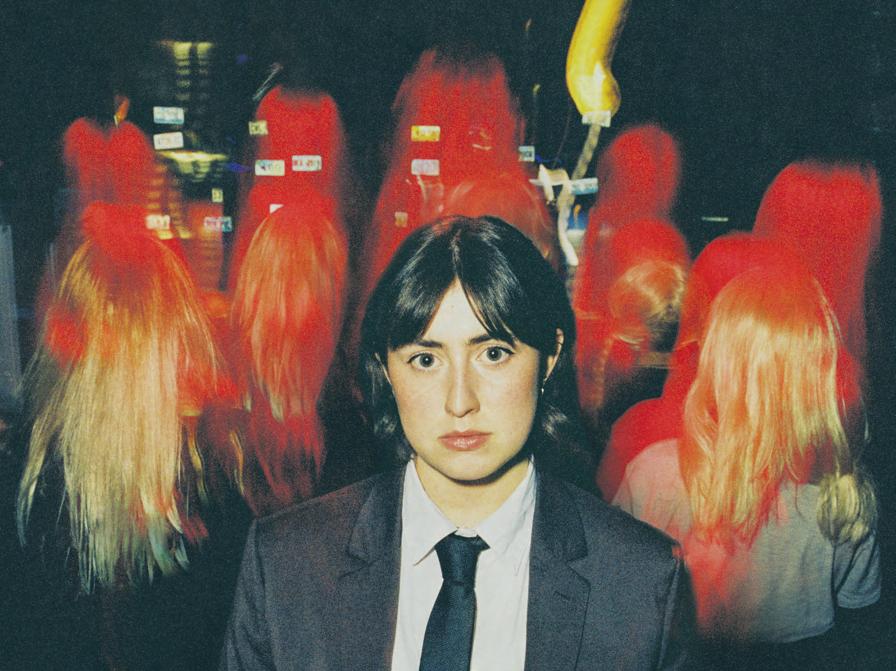
I can’t choose a favourite but my most listened to would be Phoebe Bridgers’ Stranger in the Alps, SZA’s Ctrl and Hamish Hawk’s Heavy Elevator.
What’s the worst film you’ve ever seen?
Probably The Shawshank Redemption. Didn’t get it.
What book would you take to a desert island?
Rita Hayworth and Shawshank Redemption by Stephen King.
Who’s the worst?
You want me to say myself don’t you.
When did you last cry? See last question.
What are you most scared of? Myself. And wasps.
When did you last vomit?
I wish I could tell you because it was really funny but I can’t. Let’s just say lentil soup will never be the same again.
Tell us a secret?
I have a ghostwriter.
Which celebrity could you take in a fight? Both Proclaimers. At once.
If you could be reincarnated as an animal, which animal would it be?
Owl.. [check out my video for Your Ex]
You’ve had an incredible couple of years, and your new EP Big Red is out next month – there seems to be a romantic thread tying the record together. Can you tell us more about the inspiration behind the record?
This EP was written about one short relationship that lasted a few months. It was written in that time period and each song comes from a different emotional angle or snapshot moment from that situation. I realised after writing Guestlist in January that these songs made sense as one
project. It’s been really nice building a world around something that feels so cohesive. Big Red kind of opens and closes the door on itself, it feels like a standalone moment.
The end of the year will see you playing a headline tour, including shows in Edinburgh and Glasgow. What can we expect from the tour? The visuals around the tour and the EP are gloomy and grungy, which neither the EP nor live shows are. I thought it would be fun that way. A kind of parallel for me with how people often go into my shows expecting me to be all dreary and sad, but actually being on stage is just a lot of fun for me. Being on that platform in that spotlight is so ridiculous and I hope to always treat it as such. I’m really chatty on stage, so expect a lot of that. I’ve also got a band for the first time in a long while. It should be fun with hints of deep despair.
What does 2024 look like for you?
Hoping for a nice holiday, maybe Mexico. Also making an album.
Big Red is released on 13 Oct via Sony; Katie GregsonMacLeod plays The Mash House, Edinburgh, 30 Nov; King Tut’s, Glasgow, 3 Dec
katie-gregson-macleod.com
